Hepatitis B antiviral agents
Qiu , et al. October 1, 2
U.S. patent number 10,428,070 [Application Number 16/210,472] was granted by the patent office on 2019-10-01 for hepatitis b antiviral agents. This patent grant is currently assigned to Enanta Pharmaceuticals, Inc.. The grantee listed for this patent is Enanta Pharmaceuticals, Inc.. Invention is credited to Hui Cao, Xuri Gao, Jorden Kass, Wei Li, Yat Sun Or, Xiaowen Peng, Yao-Ling Qiu, Byung-Chul Suh.
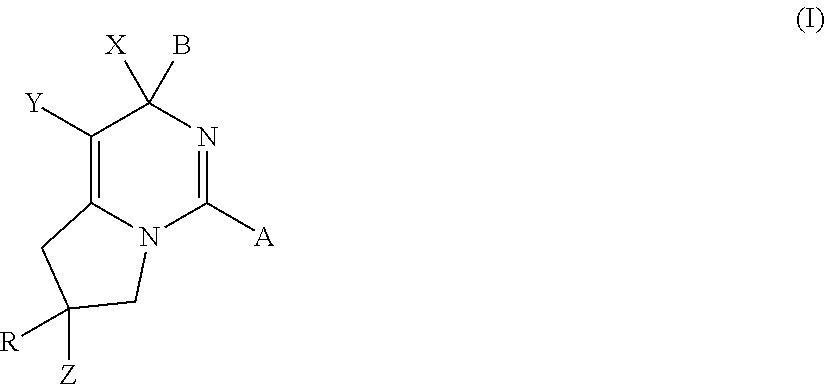
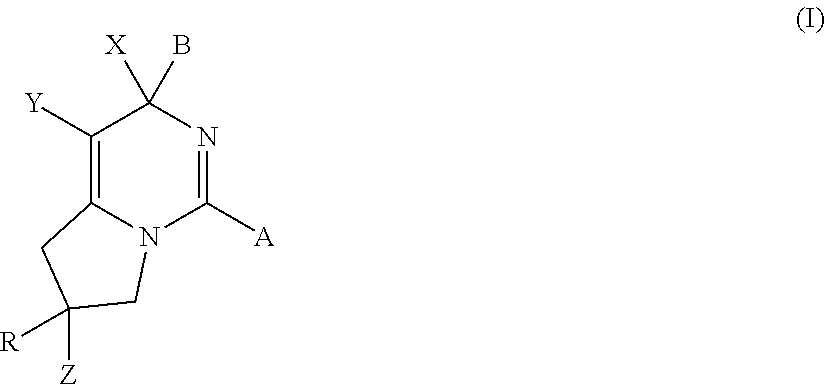
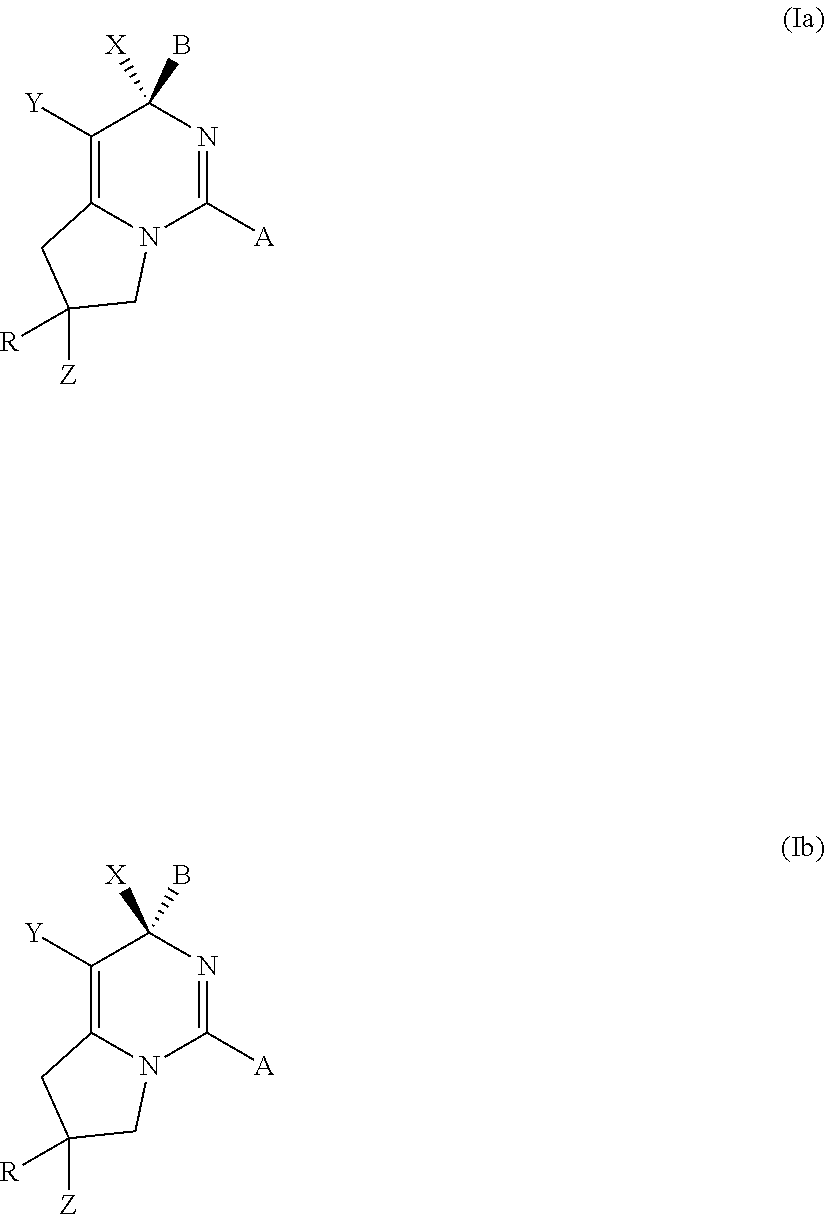



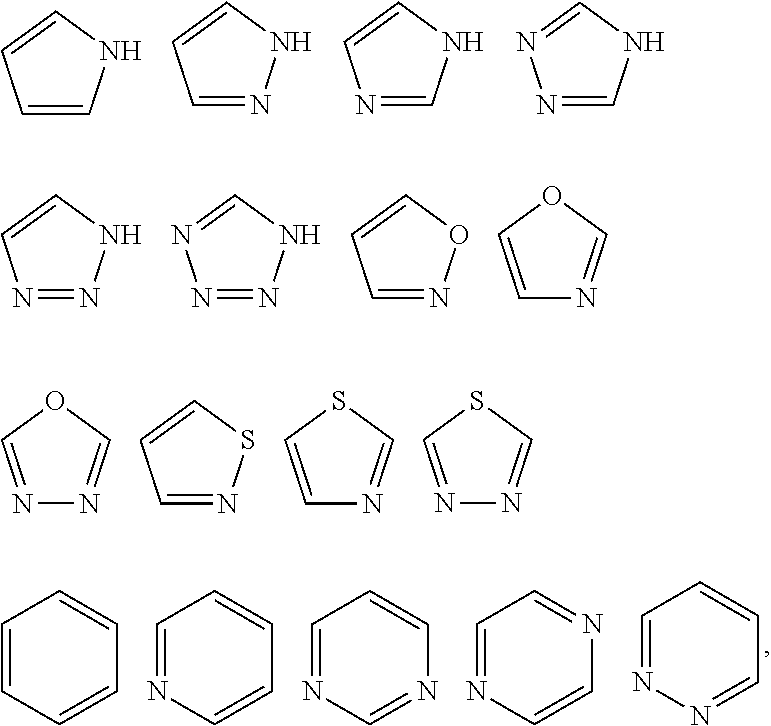

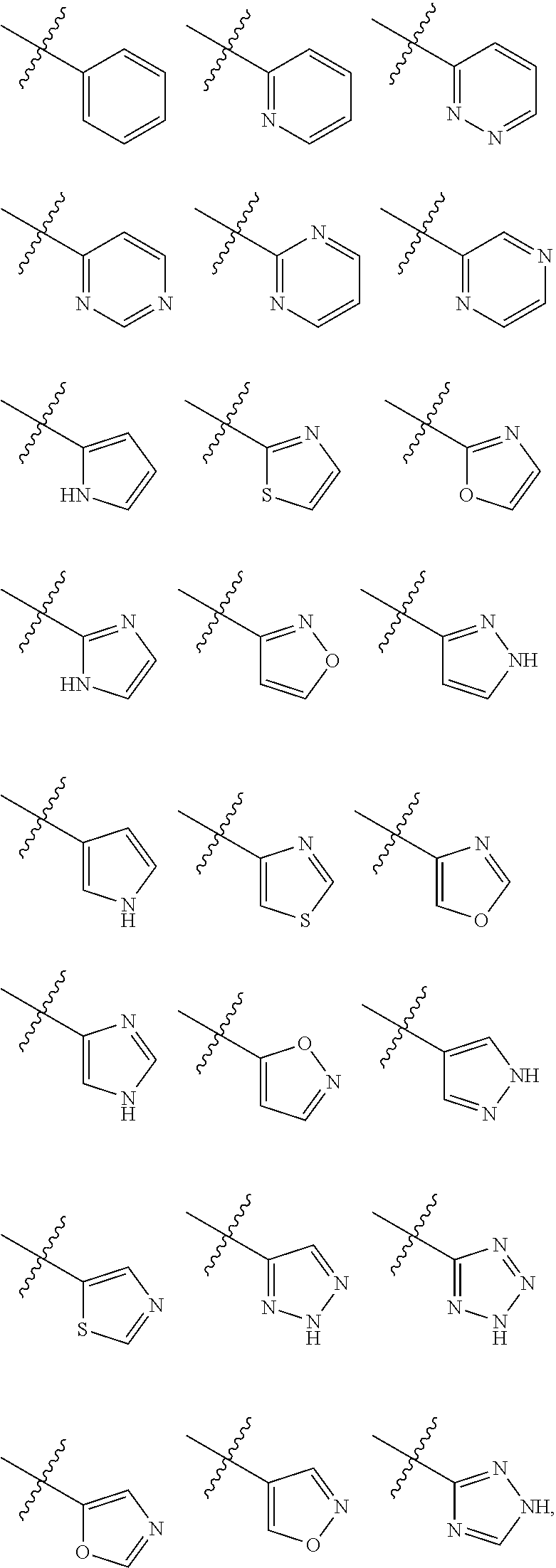


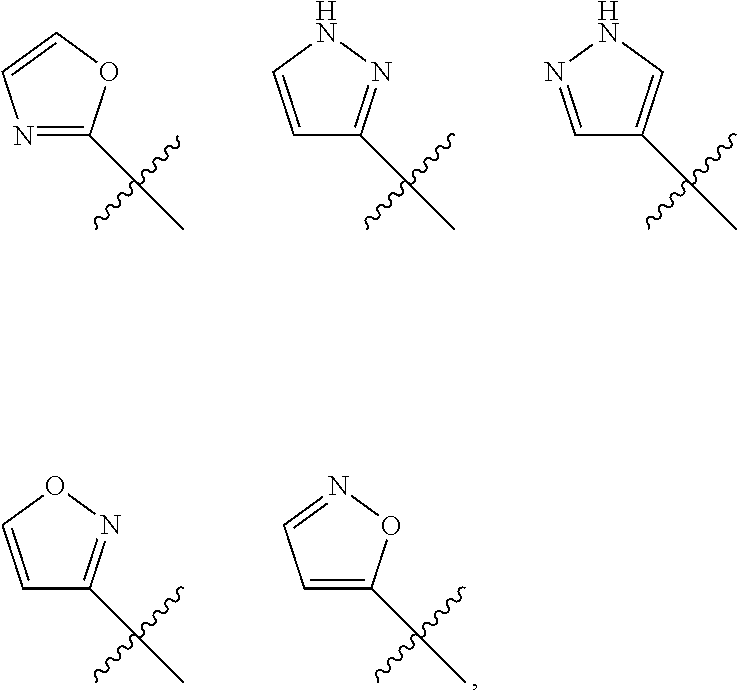
View All Diagrams
| United States Patent | 10,428,070 |
| Qiu , et al. | October 1, 2019 |
| **Please see images for: ( Certificate of Correction ) ** |
Hepatitis B antiviral agents
Abstract
The present invention discloses compounds of Formula (I), or pharmaceutically acceptable salts, thereof: ##STR00001## which inhibit the protein(s) encoded by hepatitis B virus (HBV) or interfere with the function of the HBV life cycle of the hepatitis B virus and are also useful as antiviral agents. The present invention further relates to pharmaceutical compositions comprising the aforementioned compounds for administration to a subject suffering from HBV infection. The invention also relates to methods of treating an HBV infection in a subject by administering a pharmaceutical composition comprising the compounds of the present invention.
| Inventors: | Qiu; Yao-Ling (Andover, MA), Gao; Xuri (Newtonville, MA), Peng; Xiaowen (Sudbury, MA), Li; Wei (Lexington, MA), Kass; Jorden (Arlington, MA), Cao; Hui (Belmont, MA), Suh; Byung-Chul (Lexington, MA), Or; Yat Sun (Waltham, MA) | ||||||||||
|---|---|---|---|---|---|---|---|---|---|---|---|
| Applicant: |
|
||||||||||
| Assignee: | Enanta Pharmaceuticals, Inc.
(Watertown, MA) |
||||||||||
| Family ID: | 66437163 | ||||||||||
| Appl. No.: | 16/210,472 | ||||||||||
| Filed: | December 5, 2018 |
Prior Publication Data
| Document Identifier | Publication Date | |
|---|---|---|
| US 20190177320 A1 | Jun 13, 2019 | |
Related U.S. Patent Documents
| Application Number | Filing Date | Patent Number | Issue Date | ||
|---|---|---|---|---|---|
| 62595271 | Dec 6, 2017 | ||||
| 62674209 | May 21, 2018 | ||||
| Current U.S. Class: | 1/1 |
| Current CPC Class: | A61K 45/06 (20130101); A61P 31/14 (20180101); C07D 471/10 (20130101); C07D 471/20 (20130101); C07D 471/04 (20130101) |
| Current International Class: | A61K 45/06 (20060101); C07D 471/10 (20060101); A61P 31/14 (20060101); C07D 471/20 (20060101); C07D 471/04 (20060101) |
References Cited [Referenced By]
U.S. Patent Documents
| 3385756 | May 1968 | Early et al. |
| 3975532 | August 1976 | Miller et al. |
| 4285946 | August 1981 | Kampe et al. |
| 4507481 | March 1985 | Davidson et al. |
| 5510387 | April 1996 | Leonidov et al. |
| 5656644 | August 1997 | Adams et al. |
| 6498165 | December 2002 | Armstrong et al. |
| 6503913 | January 2003 | Goldmann et al. |
| 6525069 | February 2003 | Ko et al. |
| 6667342 | December 2003 | Clarke et al. |
| 7232825 | June 2007 | Chen et al. |
| 7312214 | December 2007 | Qiao et al. |
| 7411003 | August 2008 | Wen et al. |
| 7615569 | November 2009 | Fulp et al. |
| 7741494 | June 2010 | Bressi et al. |
| 8202876 | June 2012 | Albaugh et al. |
| 8420823 | April 2013 | Sato et al. |
| 9447086 | September 2016 | Liu et al. |
| 9498479 | November 2016 | Zhang et al. |
| 9573941 | February 2017 | Liu et al. |
| 9617252 | April 2017 | Liu |
| 9938301 | April 2018 | He |
| 10189846 | January 2019 | Qiu |
| 10253030 | April 2019 | He |
| 2002/0068838 | June 2002 | Demassey et al. |
| 2003/0232842 | December 2003 | Goldmann et al. |
| 2004/0209930 | October 2004 | Carboni et al. |
| 2005/0203119 | September 2005 | Ono et al. |
| 2007/0219239 | September 2007 | Mjalli et al. |
| 2007/0225373 | September 2007 | Chen et al. |
| 2008/0120759 | May 2008 | Tolton et al. |
| 2009/0023740 | January 2009 | Fulp et al. |
| 2011/0009622 | January 2011 | Jitsuoka et al. |
| 2011/0165118 | July 2011 | Chan et al. |
| 2011/0281950 | November 2011 | Baiocchi et al. |
| 2012/0009142 | January 2012 | Karp et al. |
| 2013/0251673 | September 2013 | Hartman et al. |
| 2013/0267517 | October 2013 | Guo et al. |
| 2014/0343032 | November 2014 | Zhu et al. |
| 2015/0005295 | January 2015 | Hache et al. |
| 2015/0119362 | April 2015 | Gurney et al. |
| 2015/0152073 | June 2015 | Hartman et al. |
| 2015/0152096 | June 2015 | Zhang et al. |
| 2015/0197493 | July 2015 | Hartman et al. |
| 2015/0252057 | September 2015 | Zhu et al. |
| 2015/0274653 | October 2015 | Verschueren et al. |
| 2016/0206616 | July 2016 | Zhang et al. |
| 2016/0237078 | August 2016 | Guo et al. |
| 2016/0264562 | September 2016 | Liu et al. |
| 2016/0264563 | September 2016 | Ren et al. |
| 2016/0289212 | October 2016 | Gao et al. |
| 2016/0332996 | November 2016 | Gao et al. |
| 2016/0347746 | December 2016 | Zhang |
| 2017/0014408 | January 2017 | Gao et al. |
| 2017/0022150 | January 2017 | Gao et al. |
| 2017/0197986 | July 2017 | He |
| 2017/0217974 | August 2017 | Gao et al. |
| 2017/0253609 | September 2017 | Gao et al. |
| 2017/0355701 | December 2017 | Qiu et al. |
| 2018/0312512 | November 2018 | He |
| 2019/0119288 | April 2019 | Qiu |
| 106810548 | Jun 2017 | CN | |||
| 106928215 | Jul 2017 | CN | |||
| 106928245 | Jul 2017 | CN | |||
| 8702367 | Apr 1987 | WO | |||
| 9504046 | Feb 1995 | WO | |||
| 0168641 | Sep 2001 | WO | |||
| 0168647 | Sep 2001 | WO | |||
| 2006033995 | Mar 2006 | WO | |||
| 2008120759 | Oct 2008 | WO | |||
| 2013006394 | Jan 2013 | WO | |||
| 2013096744 | Jun 2013 | WO | |||
| 2013130703 | Sep 2013 | WO | |||
| 2013144129 | Oct 2013 | WO | |||
| 2013181584 | Dec 2013 | WO | |||
| 2014106019 | Jul 2014 | WO | |||
| 2014184350 | Nov 2014 | WO | |||
| 2014184365 | Nov 2014 | WO | |||
| 2015074546 | May 2015 | WO | |||
| 2015113990 | Aug 2015 | WO | |||
| 2015173164 | Nov 2015 | WO | |||
| 2015180631 | Dec 2015 | WO | |||
| 2016016370 | Feb 2016 | WO | |||
| 2016071215 | May 2016 | WO | |||
| 2016128335 | Aug 2016 | WO | |||
| 2017013046 | Jan 2017 | WO | |||
| 2017017042 | Feb 2017 | WO | |||
| 2017017043 | Feb 2017 | WO | |||
| 2017140821 | Aug 2017 | WO | |||
| 2017205115 | Nov 2017 | WO | |||
| 2017216685 | Dec 2017 | WO | |||
| 2017216686 | Dec 2017 | WO | |||
| 2018019297 | Feb 2018 | WO | |||
| 2018022282 | Feb 2018 | WO | |||
| 2018047109 | Mar 2018 | WO | |||
| 2018073753 | Apr 2018 | WO | |||
| 2018085619 | May 2018 | WO | |||
| WO-2018196805 | Nov 2018 | WO | |||
Other References
|
C Noguchi et al., 41 Hepatology, 626-633 (2005) (Year: 2005). cited by examiner . X. Li et al., 8 ACS Medicinal Chemistry Letters (2017) (Year: 2017). cited by examiner . Chemical Abstract Service STN CAplus [online database], Accession No. 2003:1014580. (Year: 2003). cited by applicant . Chemical Abstract Service STN Database Registry No. 1578268-77-5 [online][Entered STN: Apr. 1, 2014]. cited by applicant . Chemical Abstracts Registry No. 1026741-09-2, indexed in the Registry file on Jun. 9, 2008. cited by applicant . Chemical Abstracts Registry No. 115280-56-3, indexed in the Registry file on STN CAS Online Jul. 16, 1988. cited by applicant . Chemical Abstracts Registry No. 1269203-67-9, indexed in the Registry file on STN CAS Online Mar. 21, 2011. cited by applicant . Chemical Abstracts Registry No. 1350251-34-1, indexed in the Registry file on STN CAS Online Dec. 7, 2011. cited by applicant . Chemical Abstracts Registry No. 397288-41-1, indexed in the Registry file on Mar. 1, 2002. cited by applicant . Chemical Abstracts Registry No. 792901-47-4, indexed in the Registry file on STN CAS Online Dec. 6, 2004. cited by applicant . Chemical Abstracts Registry No. 92555-24-3, indexed in the Registry file on Dec. 17, 1984. cited by applicant . Chemical Abstracts Registry No. 950067-32-0, indexed in the Registry file on Oct. 10, 2007. cited by applicant . PubChem CID 57036978, National Center for Biotechnology Information. PubChem Compound Database; CID=57036978, https://pubchem.ncbi.nlm.nih.gov/compound/57036978 (accessed May 19, 2017), create date Jun. 13, 2012. cited by applicant . PubChem CID 69095846 {National Center for Biotechnology Information. PubChem Compound Database; CID=69095846, https://pubchem.ncbi.nlm.nih.gov/compound/69095846 (accessed May 23, 2017), create date Nov. 30, 2012. cited by applicant . PubChem CI D 10194182, National Center for Biotechnology Information. PubChem Compound Database; CI 0=10194182, https://pubchem.ncbi.nlm.nih.gov/ compound/10194182 (accessed May 19, 2017), create date Oct. 25, 2006. cited by applicant . Pubchem-`428` Create Date: Sep. 11, 2005 (Sep. 11, 2005) Date Accessed: Jun. 17, 2016. cited by applicant . Pubchem-CID 23201920, Create Date: Dec. 5, 2007, p. 3. cited by applicant . Pubchem-CID 63186259, Create Date: Oct. 22, 2012 (Oct. 22, 2012) p. 3. cited by applicant . Pubchem-SID 15224030 Deposit Date: Oct. 25, 2006. cited by applicant . Pubchern-57224610 (`610`) Create Date: Jun. 14, 2012 (Jun. 14, 2012) Date Accessed: Jun. 17, 2016. cited by applicant . U.S. Appl. No. 16/194,608, filed Nov. 19, 2018. cited by applicant . Clark, M. T. et al., "5-(aLkylsulfonyl)Salicylanilides As Potential Dental Antiplaque Agents", Journal of Medicinal Chemistry, 29(1), 1986, 25-29. cited by applicant . Janetka, J. W. et al., "Discovery of a novel class of 2-ureido thiophene carboxamide checkpoint kinase inhibitors", Bioorganic & Medicinal Chemistry Letters, 18, 2008, 4242-4248. cited by applicant . Yang, et al., "Enzyme-mediated hydrolytic activation of prodrugs", Acta Pharmaceutical Sinica B., vol. 1(3), Sep. 9, 2011, 143-159. cited by applicant . U.S. Appl. No. 16/210,492, filed Dec. 5, 2018. cited by applicant. |
Primary Examiner: Pagano; Alexander R
Attorney, Agent or Firm: Harlan; Edgar W. Elmore; Carolyn S. Elmore Patent Law Group, P.C.
Parent Case Text
RELATED APPLICATIONS
This application claims the benefit of U.S. Provisional Application No. 62/595,271, filed on Dec. 6, 2017 and U.S. Provisional Application No. 62/674,209, filed on May 21, 2018. The entire teachings of the above applications are incorporated herein by reference.
Claims
What is claimed:
1. A compound represented by Formula (I): ##STR00088## or a pharmaceutically acceptable salt thereof, wherein: A is optionally substituted aryl or optionally substituted heteroaryl; B is selected from the group consisting of hydrogen, halo, CN, optionally substituted --C.sub.1-C.sub.6 alkyl, and optionally substituted C.sub.3-C.sub.6 cycloalkyl; X is optionally substituted aryl or optionally substituted heteroaryl; Y is --C(O)NR.sub.1R.sub.2, --C(O)OR.sub.1, optionally substituted aryl or optionally substituted heteroaryl; R.sub.1 and R.sub.2 are each independently selected from the group consisting of hydrogen, optionally substituted --C.sub.1-C.sub.6 alkyl, optionally substituted --C.sub.2-C.sub.8 alkenyl, optionally substituted --C.sub.2-C.sub.8 alkynyl, optionally substituted --C.sub.3-C.sub.8 cycloalkyl, optionally substituted 3- to 8-membered heterocyclic, optionally substituted aryl, and optionally substituted heteroaryl; alternatively, R.sub.1 and R.sub.2 are taken together with the nitrogen atom to which they are attached to form an optionally substituted 3- to 8-membered heterocyclic; and R and Z are taken together with the carbon atom to which they are attached to form an optionally substituted 3- to 8-membered cycloalkyl, 3- to 8-membered cycloalkenyl, or 3- to 8-membered heterocyclic; provided that when Y is optionally substituted aryl or optionally substituted heteroaryl, R and Z taken together with carbon atom to which they are attached do not form ##STR00089## where R.sub.5 is hydrogen, optionally substituted --C.sub.1-C.sub.8 alkyl, optionally substituted --C.sub.2-C.sub.8 alkenyl, optionally substituted --C.sub.2-C.sub.8 alkynyl, optionally substituted --C.sub.3-C.sub.8 cycloalkyl, optionally substituted 3- to 8-membered heterocyclic, optionally substituted aryl, optionally substituted heteroaryl, --C(O)R.sub.13, --C(O)OR.sub.13, --C(O)NR.sub.13R.sub.14, --S(O).sub.2R.sub.13, or --S(O).sub.2NR.sub.13R.sub.14; and R.sub.13 and R.sub.14 at each occurrence are independently hydrogen, optionally substituted --C.sub.1-C.sub.8 alkyl, optionally substituted --C.sub.2-C.sub.8 alkenyl, optionally substituted --C.sub.2-C.sub.8 alkynyl, optionally substituted --C.sub.3-C.sub.8 cycloalkyl, optionally substituted 3- to 8-membered heterocyclic, optionally substituted aryl or optionally substituted heteroaryl.
2. The compound of claim 1, represented by Formula (Ia-1), or (Ia-2), or a pharmaceutically acceptable salt thereof: ##STR00090## wherein A, B, X, Y, R and Z as defined in claim 1.
3. A compound represented by Formula (II), ##STR00091## or a pharmaceutically acceptable salt thereof, wherein: A is optionally substituted aryl or optionally substituted heteroaryl; B is selected from the group consisting of hydrogen, halo, CN, optionally substituted --C.sub.1-C.sub.6 alkyl, and optionally substituted --C.sub.3-C.sub.6 cycloalkyl; X is optionally substituted aryl or optionally substituted heteroaryl; Y is --C(O)NR.sub.1R.sub.2, --C(O)OR.sub.1, optionally substituted aryl or optionally substituted heteroaryl; E.sub.1, E.sub.3, and E.sub.5 are each independently selected from the group consisting of absent, --CR.sub.11R.sub.12--, --NR.sub.13--, --O--, --S(O)--, --S(O).sub.2--, and --S--; E.sub.2 and E.sub.4 are each independently selected from the group consisting of --CR.sub.11R.sub.12--, --CH.sub.2CR.sub.11R.sub.12--, --NR.sub.13--, --O--, --S--, --C(O)--, --C(O)O--, --C(O)NR.sub.1--, --S(O)--, --S(O).sub.2--, and --NR.sub.1S(O).sub.2--; R.sub.1 and R.sub.2 are each independently selected from the group consisting of hydrogen, optionally substituted --C.sub.1-C.sub.6 alkyl, optionally substituted --C.sub.2-C.sub.8 alkenyl, optionally substituted --C.sub.2-C.sub.8 alkynyl, optionally substituted --C.sub.3-C.sub.8 cycloalkyl, optionally substituted 3- to 8-membered heterocyclic, optionally substituted aryl, and optionally substituted heteroaryl; alternatively, R.sub.1 and R.sub.2 are taken together with the nitrogen atom to which they are attached to form an optionally substituted 3- to 8-membered heterocyclic; R.sub.11 and R.sub.12 are each independently selected from the group consisting of hydrogen, halogen, --OH, protected hydroxy, azido, CN, nitro, --NR.sub.1R.sub.2, protected amino, optionally substituted --O(C.sub.1-C.sub.6 alkyl), --C(O)R.sub.1, --C(O)OR.sub.1, --C(O)NR.sub.1R.sub.2, --S(O)R.sub.1, --S(O).sub.2R.sub.1, and --NR.sub.1S(O).sub.2R.sub.2, optionally substituted --C.sub.1-C.sub.6 alkyl, optionally substituted --C.sub.2-C.sub.8 alkenyl, optionally substituted --C.sub.2-C.sub.8 alkynyl, optionally substituted --C.sub.3-C.sub.8 cycloalkyl, optionally substituted 3- to 8-membered heterocyclic, optionally substituted aryl, and optionally substituted heteroaryl; and R.sub.13 is selected from the group consisting of hydrogen, --OH, protected hydroxy, --NR.sub.1R.sub.2, protected amino, optionally substituted --O(C.sub.1-C.sub.6 alkyl), --C(O)R.sub.1, --C(O)OR.sub.1, --C(O)NR.sub.1R.sub.2, --S(O)R.sub.1, --S(O).sub.2R.sub.1, --NR.sub.1S(O).sub.2R.sub.2, optionally substituted --C.sub.1-C.sub.6 alkyl, optionally substituted --C.sub.2-C.sub.8 alkenyl, optionally substituted --C.sub.2-C.sub.8 alkynyl, optionally substituted --C.sub.3-C.sub.8 cycloalkyl, optionally substituted 3- to 8-membered heterocyclic, optionally substituted aryl, and optionally substituted heteroaryl.
4. The compound of claim 3, wherein ##STR00092## is selected from the following: ##STR00093## ##STR00094## ##STR00095## wherein each of the above shown groups is optionally substituted.
5. The compound of claim 3 represented by Formula (III), ##STR00096## or a pharmaceutically acceptable salt thereof, wherein: A.sub.1 is optionally substituted azolyl or optionally substituted pyridyl; X.sub.1 is optionally substituted phenyl; Y.sub.1 is optionally substituted azolyl or --C(O)OR.sub.1; E.sub.1, E.sub.3, and E.sub.5 are each independently selected from the group consisting of absent, --CR.sub.11R.sub.12--, --NR.sub.13--, --O--, --S(O)--, --S(O).sub.2--, and --S--; E.sub.2 and E.sub.4 are each independently selected from the group consisting of --CR.sub.11R.sub.12--, --CH.sub.2CR.sub.11R.sub.12--, --NR.sub.13--, --O--, --S--, --C(O)--, --C(O)O--, --C(O)NR.sub.1--, --S(O)--, --S(O).sub.2--, and --NR.sub.1S(O).sub.2--; R.sub.1 is selected from the group consisting of hydrogen, optionally substituted --C.sub.1-C.sub.6 alkyl, optionally substituted --C.sub.2-C.sub.8 alkenyl, optionally substituted --C.sub.2-C.sub.8 alkynyl, optionally substituted --C.sub.3-C.sub.8 cycloalkyl, optionally substituted 3- to 8-membered heterocyclic, optionally substituted aryl, and optionally substituted heteroaryl; R.sub.11 and R.sub.12 are each independently selected from the group consisting of hydrogen, halogen, --OH, protected hydroxy, azido, CN, nitro, --NR.sub.1R.sub.2, protected amino, optionally substituted --O(C.sub.1-C.sub.6 alkyl), --C(O)R.sub.1, --C(O)OR.sub.1, --C(O)NR.sub.1R.sub.2, --S(O)R.sub.1, --S(O).sub.2R.sub.1, and --NR.sub.1S(O).sub.2R.sub.2, optionally substituted --C.sub.1-C.sub.6 alkyl, optionally substituted --C.sub.2-C.sub.8 alkenyl, optionally substituted --C.sub.2-C.sub.8 alkynyl, optionally substituted --C.sub.3-C.sub.8 cycloalkyl, optionally substituted 3- to 8-membered heterocyclic, optionally substituted aryl, and optionally substituted heteroaryl; and R.sub.13 is selected from the group consisting of hydrogen, --OH, protected hydroxy, --NR.sub.1R.sub.2, protected amino, optionally substituted --O(C.sub.1-C.sub.6 alkyl), --C(O)R.sub.1, --C(O)OR.sub.1, --C(O)NR.sub.1R.sub.2, --S(O)R.sub.1, --S(O).sub.2R.sub.1, --NR.sub.1S(O).sub.2R.sub.2, optionally substituted --C.sub.1-C.sub.6 alkyl, optionally substituted --C.sub.2-C.sub.8 alkenyl, optionally substituted --C.sub.2-C.sub.8 alkynyl, optionally substituted --C.sub.3-C.sub.8 cycloalkyl, optionally substituted 3- to 8-membered heterocyclic, optionally substituted aryl, and optionally substituted heteroaryl.
6. The compound of claim 3 represented by Formula (IV), ##STR00097## or a pharmaceutically acceptable salt thereof, wherein: A.sub.2 is optionally substituted thiazolyl or optionally substituted pyridyl; X.sub.2 is phenyl optionally substituted with 1 to 3 halogen; Y.sub.2 is optionally substituted pyrazolyl; L.sub.1 is NR.sub.10 or O; L.sub.2 is NR.sub.10 or O; M is C(O) or S(O).sub.2; and R.sub.10 is hydrogen or optionally substituted C.sub.1-C.sub.3 alkyl.
7. The compound of claim 3 represented by Formula (V), ##STR00098## or a pharmaceutically acceptable salt thereof, wherein: A.sub.2 is optionally substituted thiazolyl or optionally substituted pyridyl; X.sub.2 is phenyl optionally substituted with 1 to 3 halogen; Y.sub.2 is optionally substituted pyrazolyl; L.sub.1 is NR.sub.10 or O; L.sub.2 is NR.sub.10 or O; M is C(O) or S(O).sub.2; R.sub.10 is hydrogen or optionally substituted C.sub.1-C.sub.3 alkyl; and R.sub.11 is selected from the group consisting of hydrogen, halogen, --OH, protected hydroxy, azido, CN, nitro, --NR.sub.1R.sub.2, protected amino, optionally substituted --O(C.sub.1-C.sub.6 alkyl), --C(O)R.sub.1, --C(O)OR.sub.1, --C(O)NR.sub.1R.sub.2, --S(O)R.sub.1, --S(O).sub.2R.sub.1, and --NR.sub.1S(O).sub.2R.sub.2, optionally substituted --C.sub.1-C.sub.6 alkyl, optionally substituted --C.sub.2-C.sub.8 alkenyl, optionally substituted --C.sub.2-C.sub.8 alkynyl, optionally substituted --C.sub.3-C.sub.8 cycloalkyl, optionally substituted 3- to 8-membered heterocyclic, optionally substituted aryl, and optionally substituted heteroaryl.
8. The compound of claim 3, selected from the compounds set forth below or a pharmaceutically acceptable salt thereof: TABLE-US-00002 Compound Structure 1 ##STR00099## 2 ##STR00100## 3 ##STR00101## 4 ##STR00102## 5 ##STR00103## 6 ##STR00104## 7 ##STR00105## 8 ##STR00106## 9 ##STR00107## 10 ##STR00108## 11 ##STR00109## relative stereochemistry 12 ##STR00110## relative stereochemistry 13 ##STR00111## relative stereochemistry 14 ##STR00112## relative stereochemistry 15 ##STR00113## relative stereochemistry 16 ##STR00114## relative stereochemistry 17 ##STR00115## 18 ##STR00116## 19 ##STR00117## 20 ##STR00118## 21 ##STR00119## 22 ##STR00120## 23 ##STR00121## 24 ##STR00122## 25 ##STR00123## 26 ##STR00124## 27 ##STR00125## 28 ##STR00126## 29 ##STR00127## 30 ##STR00128## 31 ##STR00129## 32 ##STR00130## 33 ##STR00131## 34 ##STR00132## 35 ##STR00133## 36 ##STR00134## 37 ##STR00135## 38 ##STR00136## 39 ##STR00137## 40 ##STR00138## 41 ##STR00139## 42 ##STR00140## 43 ##STR00141## 44 ##STR00142## 45 ##STR00143## 46 ##STR00144## 47 ##STR00145## 48 ##STR00146##
9. A pharmaceutical composition comprising a compound according to claim 1 and a pharmaceutically acceptable carrier or excipient.
10. A method of treating or preventing an HBV infection in a subject in need thereof, comprising administering to the subject a therapeutically effective amount of a compound or a combination of compounds according to claim 1.
11. The method of claim 10, further comprising administering to the subject at least one additional therapeutic agent selected from the group consisting of a HBV polymerase inhibitor, interferon, viral entry inhibitor, viral maturation inhibitor, literature-described capsid assembly modulator, reverse transcriptase inhibitor, TLR-agonist, inducer of cellular viral RNA sensor, therapeutic vaccine, and agents of distinct or unknown mechanism, and a combination thereof.
12. The method of claim 11, wherein the compound and the at least one additional therapeutic agent are co-formulated.
13. The method of claim 11, wherein the compound and the at least one additional therapeutic agent are co-administered.
14. The method of claim 11, wherein administering the compound allows for administering of the at least one additional therapeutic agent at a lower dose or frequency as compared to the administering of the at least one additional therapeutic agent alone that is required to achieve similar results in prophylactically treating an HBV infection in an individual in need thereof.
15. The method of claim 11, wherein before administering the therapeutically effective amount of the compound of Formula (I), the individual is known to be refractory to a compound selected from the group consisting of a HBV polymerase inhibitor, interferon, viral entry inhibitor, viral maturation inhibitor, distinct capsid assembly modulator, inducer of cellular viral RNA sensor, therapeutic vaccine, antiviral compounds of distinct or unknown mechanism, and combination thereof.
16. The method of claim 11, wherein the administering of the compound reduces viral load in the individual to a greater extent compared to the administering of a compound selected from the group consisting of a HBV polymerase inhibitor, interferon, viral entry inhibitor, viral maturation inhibitor, distinct capsid assembly modulator, inducer of cellular viral RNA sensor, therapeutic vaccine, antiviral compounds of distinct or unknown mechanism, and combination thereof.
17. The method of claim 11, wherein the administering of the compound causes a lower incidence of viral mutation and/or viral resistance than the administering of a compound selected from the group consisting of a HBV polymerase inhibitor, interferon, viral entry inhibitor, viral maturation inhibitor, distinct capsid assembly modulator, inducer of cellular viral RNA sensor, therapeutic vaccine, antiviral compounds of distinct or unknown mechanism, and combination thereof.
Description
TECHNICAL FIELD
The present invention relates generally to novel antiviral agents. Specifically, the present invention relates to compounds which can inhibit the protein(s) encoded by hepatitis B virus (HBV) or interfere with the function of the HBV life cycle, compositions comprising such compounds, methods for inhibiting HBV viral replication, methods for treating or preventing HBV infection, and processes for making the compounds.
BACKGROUND OF THE INVENTION
HBV infection remains a major public health problem, affecting approximately 2 billion people worldwide. Among them, 350 million people worldwide and 1.4 million in the US develop a chronic infection, which can lead to chronic persistent hepatitis, liver cirrhosis, and hepatocellular carcinoma (HCC). Every year 500,000 to 1 million people die from the end stage of liver diseases caused by HBV infection.
Despite the availability of a prophylactic HBV vaccine, the burden of chronic HBV infection continues to be a significant unmet worldwide medical problem, due to suboptimal treatment options and sustained rates of new infections in most parts of the developing world. Current treatments do not provide a cure and are limited to only two classes of agents (interferon and nucleoside analogues/inhibitors of the viral polymerase); drug resistance, low efficacy, and tolerability issues limit their impact. The low cure rates of HBV are attributed at least in part to the presence and persistence of covalently closed circular DNA (cccDNA) in the nucleus of infected hepatocytes. However, persistent suppression of HBV DNA slows liver disease progression and helps to prevent HCC. Current therapy goals for HBV-infected patients are directed to reducing serum HBV DNA to low or undetectable levels, and to ultimately reducing or preventing the development of cirrhosis and HCC.
The HBV is an enveloped, partially double-stranded DNA (dsDNA) virus of the hepadnavirus family (Hepadnaviridae). HBV capsid protein (CP) plays essential roles in HBV replication. The predominant biological function of capsid protein is to act as a structural protein to encapsidate pre-genomic RNA and form immature capsid particles, which spontaneously self-assemble from many copies of core dimers in the cytoplasm. Capsid protein also regulates viral DNA synthesis through different phosphorylation status of its C-terminal phosphorylation sites. Also, capsid protein might facilitate the nuclear translocation of viral relaxed circular genome by means of the nuclear localization signals located in the Arginine-rich domain of the C-terminal region of capsid protein. In the nucleus, as a component of viral cccDNA minichromosome, capsid protein could play a structural and regulatory role in the functionality of cccDNA minichromosomes. Capsid protein also interacts with viral large envelope protein in endoplasmic reticulum (ER) and triggers the release of intact viral particles from hepatocytes.
Capsid related anti-HBV inhibitors have been reported. For example, phenylpropen-amide derivatives, including compounds named AT-61 and AT-130 (Feld J. et al. Antiviral Res. 2007, 76, 168), and a class of thiazolidin-4-ones from Valeant (WO2006/033995), have been shown to inhibit pregenomic RNA (pgRNA) packaging. Heteroaryldihydropyrimi-dines or HAPs were discovered in a tissue culture-based screening (Weber et al., Antiviral Res. 2002, 54, 69). These HAP analogs act as synthetic allosteric activators and are able to induce aberrant capsid formation that leads to degradation of the core protein. A subclass of sulphamoyl-arylamides also shows activity against HBV (WO 2013/006394, WO 2013/096744, and WO 2014184365). It was also shown that the small molecule bis-ANS acts as a molecular `wedge` and interferes with normal capsid-protein geometry and capsid formation (Zlotnick A. et al. J. Virol. 2002, 4848).
There is a need in the art for novel therapeutic agents that treat, ameliorate or prevent HBV infection. Administration of these therapeutic agents to an HBV infected patient, either as monotherapy or in combination with other HBV treatments or ancillary treatments, will lead to significantly improved prognosis, diminished progression of the disease, and enhanced seroconversion rates.
SUMMARY OF THE INVENTION
The present invention relates to novel antiviral compounds, pharmaceutical compositions comprising such compounds, as well as methods to treat or prevent viral (particularly HBV) infection in a subject in need of such therapy with said compounds. Compounds of the present invention inhibit the protein(s) encoded by hepatitis B virus (HBV) or interfere with the life cycle of HBV and are also useful as antiviral agents. In addition, the present invention includes the process for the preparation of the said compounds.
In its principal aspect, the present invention provides a compound of Formula (I):
##STR00002## or a pharmaceutically acceptable salt thereof, wherein:
A is optionally substituted aryl or optionally substituted heteroaryl; preferably A is optionally substituted azolyl, optionally substituted pyridyl, or optionally substituted phenyl;
B is selected from the group consisting of hydrogen, halo, CN, optionally substituted --C.sub.1-C.sub.6 alkyl, and optionally substituted --C.sub.3-C.sub.6 cycloalkyl; preferably B is hydrogen or optionally substituted methyl;
X is optionally substituted aryl or optionally substituted heteroaryl; preferably X is optionally substituted phenyl;
Alternatively, B and X are taken together with the carbon atom to which they are attached to form an optionally substituted --C.sub.4-C.sub.12 cycloalkenyl or optionally substituted 4- to 12-membered heterocyclic, for example, a --C.sub.4-C.sub.12 cycloalkenyl or 4- to 12-membered heterocyclic which is fused with an aryl or heteroaryl ring wherein each ring is optionally further substituted;
Y is --C(O)OR.sub.1, --C(O)NR.sub.1R.sub.2, optionally substituted aryl, or optionally substituted heteroaryl; preferably Y is --C(O)OR.sub.1 or optionally substituted azolyl;
R.sub.1 and R.sub.2 are each independently selected from the group consisting of hydrogen, optionally substituted --C.sub.1-C.sub.6 alkyl, optionally substituted --C.sub.2-C.sub.8 alkenyl, optionally substituted --C.sub.2-C.sub.8 alkynyl, optionally substituted --C.sub.3-C.sub.8 cycloalkyl, optionally substituted 3- to 8-membered heterocyclic, optionally substituted aryl, and optionally substituted heteroaryl; alternatively, R.sub.1 and R.sub.2 are taken together with the nitrogen atom to which they are attached to form an optionally substituted 3- to 8-membered heterocyclic; and
R and Z are taken together with the carbon atom to which they are attached to form an optionally substituted 3- to 8-membered cycloalkyl, 3- to 8-membered cycloalkenyl, or 3- to 8-membered heterocyclic.
Each preferred group stated above can be taken in combination with one, any or all other preferred groups.
DETAILED DESCRIPTION OF THE INVENTION
In one embodiment of the present invention is a compound of Formula (I) as described above, or a pharmaceutically acceptable salt thereof.
Compounds of Formula (I) can have the stereochemistry shown in Formula (Ia) or Formula (Ib).
##STR00003##
In preferred embodiments, compounds of Formula (I) have the stereochemistry shown in Formula (Ia).
Compounds of Formula (Ia) can have the stereochemistry shown in Formula (Ia-1) or Formula (Ia-2).
##STR00004##
In certain embodiments of the compounds of Formulas (I), (Ia), (Ia-1) and (Ia-2), wherein Y is optionally substituted aryl or optionally substituted heteroaryl, R and Z and the carbon atom to which they are attached do not form
##STR00005## where R.sub.5 is hydrogen, optionally substituted --C.sub.1-C.sub.8 alkyl, optionally substituted --C.sub.2-C.sub.8 alkenyl, optionally substituted --C.sub.2-C.sub.8 alkynyl, optionally substituted --C.sub.3-C.sub.8 cycloalkyl, optionally substituted 3- to 8-membered heterocyclic, optionally substituted aryl, optionally substituted heteroaryl, --C(O)R.sub.13, --C(O)OR.sub.13, --C(O)NR.sub.13R.sub.14, --S(O).sub.2R.sub.13, or --S(O).sub.2NR.sub.13R.sub.14; and R.sub.13 and R.sub.14 at each occurrence are independently hydrogen, optionally substituted --C.sub.1-C.sub.8 alkyl, optionally substituted --C.sub.2-C.sub.8 alkenyl, optionally substituted --C.sub.2-C.sub.8 alkynyl, optionally substituted --C.sub.3-C.sub.8 cycloalkyl, optionally substituted 3- to 8-membered heterocyclic, optionally substituted aryl or optionally substituted heteroaryl.
In certain embodiments, the present invention relates to compounds of Formula (I), and pharmaceutically acceptable salts thereof, wherein A is an optionally substituted azolyl, optionally substituted pyridyl, or optionally substituted phenyl.
In certain embodiments, the present invention relates to compounds of Formula (I) and pharmaceutically acceptable salts thereof, wherein A is optionally substituted thiophenyl, optionally substituted imidazolyl, optionally substituted thiazolyl, optionally substituted oxazolyl, optionally substituted pyridyl.
In certain embodiments, the present invention relates to compounds of Formula (I), and pharmaceutically acceptable salts thereof, wherein B is hydrogen.
In certain embodiments, the present invention relates to compounds of Formula (I), and pharmaceutically acceptable salts thereof, wherein B is halo, preferably fluoro.
In certain embodiments, the present invention relates to compounds of Formula (I), and pharmaceutically acceptable salts thereof, wherein B is methyl, optionally substituted with one or more halo, preferably fluoro. In certain embodiments, B is difluoromethyl or trifluoromethyl.
In certain embodiments, the present invention relates to compounds of Formula (I), and pharmaceutically acceptable salts thereof, wherein X is optionally substituted phenyl. In certain embodiments, the present invention relates to compounds of Formula (I), and pharmaceutically acceptable salts thereof, wherein X is optionally substituted heteroaryl.
In certain embodiments, the present invention relates to compounds of Formula (I), and pharmaceutically acceptable salts thereof, wherein X is phenyl substituted with 1- to 3-halogen atoms.
In certain embodiments, the present invention relates to compounds of Formula (I), and pharmaceutically acceptable salts thereof, wherein Y is --C(O)OR.sub.1; and R.sub.1 is as previously defined.
In certain embodiments, the present invention relates to compounds of Formula (I), and pharmaceutically acceptable salts thereof, wherein Y is optionally substituted phenyl. In certain embodiments, the present invention relates to compounds of Formula (I), and pharmaceutically acceptable salts thereof, wherein Y is optionally substituted heteroaryl. In certain embodiments, the present invention relates to compounds of Formula (I), and pharmaceutically acceptable salts thereof, wherein Y is optionally substituted azolyl or optionally substituted pyridyl.
In certain embodiments, the present invention relates to compounds of Formula (I), and pharmaceutically acceptable salts thereof, wherein X is optionally substituted phenyl; Y is --C(O)OR.sub.1; and R.sub.1 is as previously defined.
In certain embodiments, the present invention relates to compounds of Formula (I), and pharmaceutically acceptable salts thereof, wherein X is optionally substituted phenyl; Y is --C(O)OR.sub.1; and R.sub.1 is optionally substituted --C.sub.1-C.sub.6 alkyl.
In certain embodiments, the present invention relates to compounds of Formula (I), and pharmaceutically acceptable salts thereof, wherein X is optionally substituted phenyl; and Y is an optionally substituted heteroaryl. In certain embodiments, the present invention relates to compounds of Formula (I), and pharmaceutically acceptable salts thereof, wherein X is optionally substituted phenyl; and Y is optionally substituted azolyl or optionally substituted pyridyl.
In certain embodiments, the present invention relates to compounds of Formula (I), and pharmaceutically acceptable salts thereof, wherein X is optionally substituted monocyclic heteroaryl; and Y is optionally substituted azolyl, optionally substituted pyridyl, or optionally substituted phenyl.
In another particular embodiment, the present invention relates to compounds of Formula (I), or a pharmaceutically acceptable salt thereof, wherein A and X are each independently an aryl or heteroaryl group derived from one of the following by removal of one hydrogen atom:
##STR00006## wherein each of the above shown aryl and heteroaryl groups is optionally substituted and is preferably connected to the dihydropyrimidine core through a carbon atom.
In another particular embodiment, the present invention relates to compounds of Formula (I), or a pharmaceutically acceptable salt thereof, wherein at least one of A and X is an aryl or heteroaryl group derived from one of the following by removal of one hydrogen atom:
##STR00007## wherein each of the above shown aryl and heteroaryl groups is optionally substituted and is preferably connected to the dihydropyrimidine core through a carbon atom.
In certain embodiments, A and X are each independently selected from the groups set forth below:
##STR00008## wherein each of the above shown groups is optionally substituted. The preferred substituents are optionally substituted methyl, halo, CN, OR.sub.1, and --NR.sub.1R.sub.2; wherein R.sub.1 and R.sub.2 are as previously defined.
In certain embodiments, at least one of A and X is selected from the groups set forth below:
##STR00009## wherein each of the above shown groups is optionally substituted when possible. The preferred substituents are optionally substituted methyl, halo, CN, OR.sub.1, or --NR.sub.1R.sub.2; wherein R.sub.1 and R.sub.2 are as previously defined.
In certain embodiments, the present invention relates to compounds of Formula (I) and pharmaceutically acceptable salts thereof, wherein Y is selected from the groups set forth below;
##STR00010## wherein each of the above shown groups is optionally substituted. The preferred substituents include optionally substituted methyl, halo, --CN, --OR.sub.1, and --NR.sub.1R.sub.2; wherein R.sub.1 and R.sub.2 are as previously defined.
In certain embodiments, the present invention relates to compounds of Formula (I) and pharmaceutically acceptable salts thereof, wherein Y is optionally substituted azolyl.
In certain embodiments, the present invention relates to compounds of Formula (I) and pharmaceutically acceptable salts thereof, wherein Y is selected from the groups set forth below:
##STR00011## wherein each of the above shown groups is optionally substituted when possible.
In certain embodiments, the present invention relates to compounds of Formula (I) and pharmaceutically acceptable salts thereof, wherein Y is selected from the groups set forth below:
##STR00012## wherein each of the above shown groups is optionally substituted. The preferred substituents include optionally substituted --C.sub.1-C.sub.4-alkyl, halo, --CN, --OR.sub.1, and --NR.sub.1R.sub.2; R.sub.1 and R.sub.2 are as previously defined.
In certain embodiments, the present invention relates to compounds of Formula (I) and pharmaceutically acceptable salts thereof, wherein Y is selected from the groups set forth below:
##STR00013## wherein R.sub.20 is optionally substituted C.sub.1-C.sub.4-alkyl or C.sub.3-C.sub.6-cycloalkyl. Preferably, R.sub.20 is optionally substituted methyl or optionally substituted cyclopropyl. More preferably, R.sub.20 is --CHF.sub.2.
In an embodiment, the present invention relates to compounds of Formula (II), and pharmaceutically acceptable salts thereof,
##STR00014## wherein E.sub.1, E.sub.3, and E.sub.5 are each independently selected from the group consisting of absent, --CR.sub.11R.sub.12--, --NR.sub.13--, --O--, --S(O)--, --S(O).sub.2--, and --S--; E.sub.2 and E.sub.4 are each independently selected from the group consisting of --CR.sub.11R.sub.12--, --CH.sub.2CR.sub.11R.sub.12--, --NR.sub.13--, --O--, --S--, --C(O)--, --C(O)O--, --C(O)NR.sub.1--, --S(O)--, --S(O).sub.2--, and --NR.sub.1S(O).sub.2--; R.sub.11 and R.sub.12 are each independently selected from the group consisting of hydrogen, halogen, --OH, protected hydroxy, azido, CN, nitro, --NR.sub.1R.sub.2, protected amino, optionally substituted --O(C.sub.1-C.sub.6 alkyl), --C(O)R.sub.1, --C(O)OR.sub.1, --C(O)NR.sub.1R.sub.2, --S(O)R.sub.1, --S(O).sub.2R.sub.1, --NR.sub.1S(O).sub.2R.sub.2, optionally substituted --C.sub.1-C.sub.6 alkyl, optionally substituted --C.sub.2-C.sub.8 alkenyl, optionally substituted --C.sub.2-C.sub.8 alkynyl, optionally substituted --C.sub.3-C.sub.8 cycloalkyl, optionally substituted 3- to 8-membered heterocyclic, optionally substituted aryl, and optionally substituted heteroaryl; R.sub.13 is selected from the group consisting of hydrogen, --OH, protected hydroxy, --NR.sub.1R.sub.2, protected amino, optionally substituted --O(C.sub.1-C.sub.6 alkyl), --C(O)R.sub.1, --C(O)OR.sub.1, --C(O)NR.sub.1R.sub.2, --S(O)R.sub.1, --S(O).sub.2R.sub.1, --NR.sub.1S(O).sub.2R.sub.2, optionally substituted --C.sub.1-C.sub.6 alkyl, optionally substituted --C.sub.2-C.sub.8 alkenyl, optionally substituted --C.sub.2-C.sub.8 alkynyl, optionally substituted --C.sub.3-C.sub.8 cycloalkyl, optionally substituted 3- to 8-membered heterocyclic, optionally substituted aryl, and optionally substituted heteroaryl; and R.sub.1, R.sub.2, A, B, X, and Y are as previously defined.
In an embodiment, the present invention relates to compounds of Formula (III), and pharmaceutically acceptable salts thereof,
##STR00015## wherein A.sub.1 is optionally substituted azolyl or optionally substituted pyridyl; X.sub.1 is optionally substituted phenyl; Y.sub.1 is optionally substituted azolyl or --C(O)OR.sub.1; and R.sub.1, E.sub.1, E.sub.2, E.sub.3, E.sub.4, and E.sub.5 are as previously defined.
In certain embodiments of the compounds of Formulae (II) and (III), wherein Y or Y.sub.1 is optionally substituted aryl or optionally substituted heteroaryl,
##STR00016## is not
##STR00017## where R.sub.5 is as defined above.
In certain embodiments, the present invention relates to compounds of Formulae (II) and (III) or pharmaceutically acceptable salts thereof, wherein
##STR00018## is selected from the groups set forth below:
##STR00019## ##STR00020## ##STR00021## wherein each of the above shown groups is optionally substituted. In certain embodiments, at least one of the NH hydrogen atoms in the groups above is substituted with, but not limited to, one of the groups set forth below:
##STR00022## ##STR00023## wherein each of the above shown groups is optionally substituted when possible.
In an embodiment, the present invention relates to compounds of Formula (IV), and pharmaceutically acceptable salts thereof,
##STR00024## wherein A.sub.2 is optionally substituted thiazolyl or optionally substituted pyridyl; X.sub.2 is phenyl optionally substituted with 1 to 3 halogen; Y.sub.2 is optionally substituted pyrazolyl; L.sub.1 is NR.sub.10 or O; L.sub.2 is NR.sub.10 or O; M is C(O) or S(O).sub.2; and R.sub.10 is hydrogen or optionally substituted C.sub.1-C.sub.3 alkyl. In certain embodiments, A.sub.2 is 2-thiazolyl. In certain embodiments, Y.sub.2 is
##STR00025## In certain embodiments, L.sub.1 is NH; and L.sub.2 is NH or O. In certain embodiments, L.sub.1 is NH; L.sub.2 is O; and M is C(O).
In an embodiment, the present invention relates to compounds of Formula (IV), and pharmaceutically acceptable salts thereof, where Y.sub.2 is --C(O)OR.sub.1, where R.sub.1 is C.sub.1-C.sub.6-alkyl, preferably C.sub.1-C.sub.3-alkyl and more preferably methyl or ethyl; and A.sub.2, X.sub.2, L.sub.1, L.sub.2 and M are as defined above.
The compounds of Formula (IV) can have the stereochemistry set forth in Formula (IVa) or Formula (IVb),
##STR00026##
In an embodiment, the present invention relates to compounds of Formula (V), and pharmaceutically acceptable salts thereof,
##STR00027## wherein A.sub.2, X.sub.2, Y.sub.2, L.sub.1, L.sub.2, and R.sub.11 are as defined above. In certain embodiments, A.sub.2 is 2-thiazolyl. In certain embodiments, Y.sub.2 is
##STR00028## In certain embodiments, L.sub.1 is NH; and L.sub.2 is NH or O. In certain embodiments, L.sub.1 is NH; L.sub.2 is O; and M is C(O).
The compounds of Formula (V) can have the stereochemistry set forth in Formula (Va) or Formula (Vb),
##STR00029##
It will be appreciated that the description of the present invention herein should be construed in congruity with the laws and principles of chemical bonding. In some instances, it may be necessary to remove a hydrogen atom in order to accommodate a substituent at any given location.
It will be yet appreciated that the compounds of the present invention may contain one or more asymmetric carbon atoms and may exist in racemic, diastereoisomeric, and optically active forms. It will still be appreciated that certain compounds of the present invention may exist in different tautomeric forms. All tautomers are contemplated to be within the scope of the present invention.
In one aspect, the compounds of the invention are useful in HBV treatment by disrupting, accelerating, reducing, delaying and/or inhibiting normal viral capsid assembly and/or disassembly of immature or mature particles, thereby inducing aberrant capsid morphology and leading to antiviral effects such as disruption of virion assembly and/or disassembly, virion maturation, and/or virus egress. In one embodiment, a disruptor of capsid assembly interacts with mature or immature viral capsid to perturb the stability of the capsid, thus affecting assembly and/or disassembly. In another embodiment, a disruptor of capsid assembly perturbs protein folding and/or salt bridges required for stability, function and/or normal morphology of the viral capsid, thereby disrupting and/or accelerating capsid assembly and/or disassembly. In yet another embodiment, the compounds of the invention bind capsid and alter metabolism of cellular polyproteins and precursors, leading to abnormal accumulation of protein monomers and/or oligomers and/or abnormal particles, which causes cellular toxicity and death of infected cells. In another embodiment, the compounds of the invention cause failure of the formation of capsid of optimal stability, affecting efficient uncoating and/or disassembly of viruses (e.g., during infectivity).
In one embodiment, the compounds of the invention disrupt and/or accelerate capsid assembly and/or disassembly when the capsid protein is immature. In another embodiment, the compounds of the invention disrupt and/or accelerate capsid assembly and/or disassembly when the capsid protein is mature. In yet another embodiment, the compounds of the invention disrupt and/or accelerate capsid assembly and/or disassembly during vial infectivity. In yet another embodiment, the disruption and/or acceleration of capsid assembly and/or disassembly attenuates HBV viral infectivity and/or reduces viral load. In yet another embodiment, disruption, acceleration, inhibition, delay and/or reduction of capsid assembly and/or disassembly eradicates the virus from the host organism. In yet another embodiment, eradication of the HBV from a host advantageously obviates the need for chronic long-term therapy and/or reduces the duration of long-term therapy.
In one embodiment, the compounds described herein are suitable for monotherapy and are effective against natural or native HBV strains and against HBV strains resistant to currently known drugs. In another embodiment, the compounds described herein are suitable for use in combination therapy.
In another embodiment, the compounds of the invention can be used in methods of modulating (e.g., inhibit, disrupt or accelerate) the activity of HBV cccDNA. In yet another embodiment, the compounds of the invention can be used in methods of diminishing or preventing the formation of HBV cccDNA. In another embodiment, the additional therapeutic agent is selected from core inhibitor, which includes GLS4, GLS4JHS, JNJ-379, ABI-H0731, ABI-H2158, AB-423, AB-506, WX-066, and QL-0A6A; immune modulator or immune stimulator therapies, which includes T-cell response activator AIC649 and biological agents belonging to the interferon class, such as interferon alpha 2a or 2b or modified interferons such as pegylated interferon, alpha 2a, alpha 2b, lamda; or STING (stimulator of interferon genes) modulator; or TLR modulators such as TLR-7 agonists, TLR-8 agonists or TLR-9 agonists; or therapeutic vaccines to stimulate an HBV-specific immune response such as virus-like particles composed of HBcAg and HBsAg, immune complexes of HBsAg and HBsAb, or recombinant proteins comprising HBx, HBsAg and HBcAg in the context of a yeast vector; or immunity activator such as SB-9200 of certain cellular viral RNA sensors such as RIG-I, NOD2, and MDAS protein, or RNA interence (RNAi) or small interfering RNA (siRNA) such as ARC-520, ARC-521, ARO-HBV, ARB-1467, and ALN-HBV RNAi, or antiviral agents that block viral entry or maturation or target the HBV polymerase such as nucleoside or nucleotide or non-nucleos(t)ide polymerase inhibitors, and agents of distinct or unknown mechanism including agents that disrupt the function of other essential viral protein(s) or host proteins required for HBV replication or persistence such as REP 2139, RG7834, and AB-452. In an embodiment of the combination therapy, the reverse transcriptase inhibitor is at least one of Zidovudine, Didanosine, Zalcitabine, ddA, Stavudine, Lamivudine, Aba-cavir, Emtricitabine, Entecavir, Apricitabine, Atevirapine, ribavirin, acyclovir, famciclovir, valacyclovir, ganciclovir, valganciclovir, Tenofovir, Adefovir, PMPA, cidofovir, Efavirenz, Nevirapine, Delavirdine, or Etravirine.
In another embodiment of the combination therapy, the TLR-7 agonist is selected from the group consisting of SM360320 (9-benzyl-8-hydroxy-2-(2-methoxy-ethoxy)ad-enine), AZD 8848 (methyl [3-({[3-(6-amino-2-butoxy-8-oxo-7,8-dihydro-9H-purin-9-yl)propyl][3-(4-mo- rpholinyl) propyl] amino Imethyl)phenyl] acetate), GS-9620 (4-Amino-2-butoxy-8-[3-(1-pyrrolidinylmethyl)benzyl]-7,8-dihydro-6(5H)-pt- eridinone), AL-034 (TQ-A3334), and RO6864018.
In another embodiment of the combination therapy, the TLR-8 agonist is GS-9688.
In an embodiment of these combination therapies, the compound and the additional therapeutic agent are co-formulated. In another embodiment, the compound and the additional therapeutic agent are co-administered.
In another embodiment of the combination therapy, administering the compound of the invention allows for administering of the additional therapeutic agent at a lower dose or frequency as compared to the administering of the at least one additional therapeutic agent alone that is required to achieve similar results in prophylactically treating an HBV infection in an individual in need thereof.
In another embodiment of the combination therapy, before administering the therapeutically effective amount of the compound of the invention, the individual is known to be refractory to a compound selected from the group consisting of a HBV polymerase inhibitor, interferon, viral entry inhibitor, viral maturation inhibitor, distinct capsid assembly modulator, antiviral compounds of distinct or unknown mechanism, and combination thereof.
In still another embodiment of the method, administering the compound of the invention reduces viral load in the individual to a greater extent compared to the administering of a compound selected from the group consisting of a HBV polymerase inhibitor, interferon, viral entry inhibitor, viral maturation inhibitor, distinct capsid assembly modulator, antiviral compounds of distinct or unknown mechanism, and combination thereof.
In another embodiment, administering of the compound of the invention causes a lower incidence of viral mutation and/or viral resistance than the administering of a compound selected from the group consisting of a HBV polymerase inhibitor, interferon, viral entry inhibitor, viral maturation inhibitor, distinct capsid assembly modulator, antiviral compounds of distinct or unknown mechanism, and combination thereof.
It should be understood that the compounds encompassed by the present invention are those that are suitably stable for use as pharmaceutical agent.
Definitions
Listed below are definitions of various terms used to describe this invention. These definitions apply to the terms as they are used throughout this specification and claims, unless otherwise limited in specific instances, either individually or as part of a larger group.
The term "aryl," as used herein, refers to a mono- or polycyclic carbocyclic ring system comprising at least one aromatic ring, including, but not limited to, phenyl, naphthyl, tetrahydronaphthyl, indanyl, and indenyl. A polycyclic aryl is a polycyclic ring system that comprises at least one aromatic ring. Polycyclic aryls can comprise fused rings, covalently attached rings or a combination thereof.
The term "heteroaryl," as used herein, refers to a mono- or polycyclic aromatic radical having one or more ring atom selected from S, O and N; and the remaining ring atoms are carbon, wherein any N or S contained within the ring may be optionally oxidized. Heteroaryl includes, but is not limited to, pyridinyl, pyrazinyl, pyrimidinyl, pyrrolyl, pyrazolyl, imidazolyl, thiazolyl, oxazolyl, isooxazolyl, thiadiazolyl, oxadiazolyl, thiophenyl, furanyl, quinolinyl, isoquinolinyl, benzimidazolyl, benzoxazolyl, quinoxalinyl. A polycyclic heteroaryl can comprise fused rings, covalently attached rings or a combination thereof.
In accordance with the invention, aromatic groups can be substituted or unsubstituted.
The term "azole group," as used herein, refers to 5-membered heteroaromatic ring containing at least one nitrogen atom. Preferred azole groups contain a nitrogen atom and at least one additional heteroatom, preferably a nitrogen, oxygen or sulfur atom. Azole groups include, but are not limited to pyrazolyl, imidazolyl, thiazolyl, oxazolyl, isoxazolyl, 1,2,3-triazolyl, 1,2,4-triazolyl, tetrazolyl. An azole group is termed "ortho" substituted in reference to two substituents which are on adjacent ring atoms. An azole group is termed "meta" substituted in reference to two substituents which are not on adjacent ring positions.
The term "alkyl" as used herein, refers to saturated, straight- or branched-chain hydrocarbon radicals. "C.sub.1-C.sub.4 alkyl," "C.sub.1-C.sub.6 alkyl," "C.sub.1-C.sub.8 alkyl," "C.sub.1-C.sub.12 alkyl," "C.sub.2-C.sub.4 alkyl," or "C.sub.3-C.sub.6 alkyl," refer to alkyl groups containing from one to four, one to six, one to eight, one to twelve, 2 to 4 and 3 to 6 carbon atoms respectively. Examples of C.sub.1-C.sub.8 alkyl radicals include, but are not limited to, methyl, ethyl, propyl, isopropyl, n-butyl, tert-butyl, neopentyl, n-hexyl, heptyl and octyl radicals.
The term "alkenyl" as used herein, refers to straight- or branched-chain hydrocarbon radicals having at least one carbon-carbon double bond by the removal of a single hydrogen atom. "C.sub.2-C.sub.5 alkenyl," "C.sub.2-C.sub.12 alkenyl," "C.sub.2-C.sub.4 alkenyl," "C.sub.3-C.sub.4 alkenyl," or "C.sub.3-C.sub.6 alkenyl," refer to alkenyl groups containing from two to eight, two to twelve, two to four, three to four or three to six carbon atoms respectively. Alkenyl groups include, but are not limited to, for example, ethenyl, propenyl, butenyl, 1-methyl-2-buten-1-yl, heptenyl, octenyl, and the like.
The term "alkynyl" as used herein, refers to straight- or branched-chain hydrocarbon radicals having at least one carbon-carbon double bond by the removal of a single hydrogen atom. "C.sub.2-C.sub.8 alkynyl," "C.sub.2-C.sub.12 alkynyl," "C.sub.2-C.sub.4 alkynyl," "C.sub.3-C.sub.4 alkynyl," or "C.sub.3-C.sub.6 alkynyl," refer to alkynyl groups containing from two to eight, two to twelve, two to four, three to four or three to six carbon atoms respectively. Representative alkynyl groups include, but are not limited to, for example, ethynyl, 1-propynyl, 1-butynyl, heptynyl, octynyl, and the like.
The term "cycloalkyl", as used herein, refers to a monocyclic or polycyclic saturated carbocyclic ring or a bi- or tri-cyclic group fused, bridged or spiro system, and the carbon atoms may be optionally oxo-substituted or optionally substituted with exocyclic olefinic double bond. Preferred cycloalkyl groups include C.sub.3-C.sub.12 cycloalkyl, C.sub.3-C.sub.6 cycloalkyl, C.sub.3-C.sub.8 cycloalkyl and C.sub.4-C.sub.7 cycloalkyl. Examples of C.sub.3-C.sub.12 cycloalkyl include, but not limited to, cyclopropyl, cyclobutyl, cyclopentyl, cyclohexyl, cyclopentyl, cyclooctyl, 4-methylene-cyclohexyl, bicyclo[2.2.1]heptyl, bicyclo[3.1.0]hexyl, spiro[2.5]octyl, 3-methylenebicyclo-[3.2.1]octyl, spiro[4.4]nonanyl, and the like.
The term "cycloalkenyl", as used herein, refers to monocyclic or polycyclic carbocyclic ring or a bi- or tri-cyclic group fused, bridged or spiro system having at least one carbon-carbon double bond and the carbon atoms may be optionally oxo-substituted or optionally substituted with exocyclic olefinic double bond. Preferred cycloalkenyl groups include C.sub.3-C.sub.12 cycloalkenyl, C.sub.3-C.sub.8 cycloalkenyl or C.sub.5-C.sub.7 cycloalkenyl groups. Examples of C.sub.3-C.sub.12 cycloalkenyl include, but not limited to, cyclopropenyl, cyclobutenyl, cyclopentenyl, cyclohexenyl, cycloheptenyl, cyclooctenyl, bicyclo[2.2.1]hept-2-enyl, bicyclo[3.1.0]hex-2-enyl, spiro[2.5]oct-4-enyl, spiro[4.4]non-1-enyl, bicyclo[4.2.1]non-3-en-9-yl, and the like.
As used herein, the term "arylalkyl" means a functional group wherein an alkylene chain is attached to an aryl group, e.g., --CH.sub.2CH.sub.2-phenyl. The term "substituted arylalkyl" means an arylalkyl functional group in which the aryl group is substituted. Similarly, the term "heteroarylalkyl" means a functional group wherein an alkylene chain is attached to a heteroaryl group. The term "substituted heteroarylalkyl" means a heteroarylalkyl functional group in which the heteroaryl group is substituted.
As used herein, the term "alkoxy" employed alone or in combination with other terms means, unless otherwise stated, an alkyl group having the designated number of carbon atoms connected to the rest of the molecule via an oxygen atom, such as, for example, methoxy, ethoxy, 1-propoxy, 2-propoxy (isopropoxy) and the higher homologs and isomers. Preferred alkoxy are (C.sub.1-C.sub.3) alkoxy.
It is understood that any alkyl, alkenyl, alkynyl, cycloalkyl, heterocyclic and cycloalkenyl moiety described herein can also be an aliphatic group or an alicyclic group.
An "aliphatic" group is a non-aromatic moiety comprised of any combination of carbon atoms, hydrogen atoms, halogen atoms, oxygen, nitrogen or other atoms, and optionally contains one or more units of unsaturation, e.g., double and/or triple bonds. Examples of aliphatic groups are functional groups, such as alkyl, alkenyl, alkynyl, O, OH, NH, NH.sub.2, C(O), S(O).sub.2, C(O)O, C(O)NH, OC(O)O, OC(O)NH, OC(O)NH.sub.2, S(O).sub.2NH, S(O).sub.2NH.sub.2, NHC(O)NH.sub.2, NHC(O)C(O)NH, NHS(O).sub.2NH, NHS(O).sub.2NH.sub.2, C(O)NHS(O).sub.2, C(O)NHS(O).sub.2NH or C(O)NHS(O).sub.2NH.sub.2, and the like, groups comprising one or more functional groups, non-aromatic hydrocarbons (optionally substituted), and groups wherein one or more carbons of a non-aromatic hydrocarbon (optionally substituted) is replaced by a functional group. Carbon atoms of an aliphatic group can be optionally oxo-substituted. An aliphatic group may be straight chained, branched, cyclic, or a combination thereof and preferably contains between about 1 and about 24 carbon atoms, more typically between about 1 and about 12 carbon atoms. In addition to aliphatic hydrocarbon groups, as used herein, aliphatic groups expressly include, for example, alkoxyalkyls, polyalkoxyalkyls, such as polyalkylene glycols, polyamines, and polyimines, for example. Aliphatic groups may be optionally substituted.
The terms "heterocyclic" or "heterocycloalkyl" can be used interchangeably and referred to a non-aromatic ring or a bi- or tri-cyclic group fused, bridged or spiro system, where (i) each ring system contains at least one heteroatom independently selected from oxygen, sulfur and nitrogen, (ii) each ring system can be saturated or unsaturated (iii) the nitrogen and sulfur heteroatoms may optionally be oxidized, (iv) the nitrogen heteroatom may optionally be quaternized, (v) any of the above rings may be fused to an aromatic ring, and (vi) the remaining ring atoms are carbon atoms which may be optionally oxo-substituted or optionally substituted with exocyclic olefinic double bond. Representative heterocycloalkyl groups include, but are not limited to, 1,3-dioxolane, pyrrolidinyl, pyrazolinyl, pyrazolidinyl, imidazolinyl, imidazolidinyl, piperidinyl, piperazinyl, oxazolidinyl, isoxazolidinyl, morpholinyl, thiazolidinyl, isothiazolidinyl, quinoxalinyl, pyridazinonyl, 2-azabicyclo[2.2.1]-heptyl, 8-azabicyclo[3.2.1]octyl, 5-azaspiro[2.5]octyl, 1-oxa-7-azaspiro[4.4]nonanyl, 7-oxooxepan-4-yl, and tetrahydrofuryl. Such heterocyclic groups may be further substituted. Heteroaryl or heterocyclic groups can be C-attached or N-attached (where possible).
It is understood that any alkyl, alkenyl, alkynyl, alicyclic, cycloalkyl, cycloalkenyl, aryl, heteroaryl, heterocyclic, aliphatic moiety or the like, described herein can also be a divalent or multivalent group when used as a linkage to connect two or more groups or substituents, which can be at the same or different atom(s). One of skill in the art can readily determine the valence of any such group from the context in which it occurs.
The term "substituted" refers to substitution by independent replacement of one, two, or three or more of the hydrogen atoms with substituents including, but not limited to, --F, --Cl, --Br, --I, --OH, C.sub.1-C.sub.12-alkyl; C.sub.2-C.sub.12-alkenyl, C.sub.2-C.sub.12-alkynyl, --C.sub.3-C.sub.12-cycloalkyl, protected hydroxy, --NO.sub.2, --N.sub.3, --CN, --NH.sub.2, protected amino, oxo, thioxo, --NH--C.sub.1-C.sub.12-alkyl, --NH--C.sub.2-C.sub.8-alkenyl, --NH--C.sub.2-C.sub.8-alkynyl, --NH--C.sub.3-C.sub.12-cycloalkyl, --NH-aryl, --NH-heteroaryl, --NH-heterocycloalkyl, -dialkylamino, -diarylamino, -diheteroarylamino, --O--C.sub.1-C.sub.12-alkyl, --O--C.sub.2-C.sub.12-alkenyl, --O--C.sub.2-C.sub.8-alkynyl, --O--C.sub.3-C.sub.12-cycloalkyl, --O-aryl, --O-heteroaryl, --O-heterocycloalkyl, --C(O)--C.sub.1-C.sub.12-alkyl, --C(O)--C.sub.2-C.sub.8-alkenyl, --C(O)--C.sub.2-C.sub.8-alkynyl, --C(O)--C.sub.3-C.sub.12-cycloalkyl, --C(O)-aryl, --C(O)-- heteroaryl, --C(O)-heterocycloalkyl, --CONH.sub.2, --CONH--C.sub.1-C.sub.12-alkyl, --CONH--C.sub.2-C.sub.8-alkenyl, --CONH--C.sub.2-C.sub.8-alkynyl, --CONH--C.sub.3-C.sub.12-cycloalkyl, --CONH-aryl, --CONH-heteroaryl, --CONH-heterocycloalkyl, --OCO.sub.2--C.sub.1-C.sub.12-alkyl, --OCO.sub.2--C.sub.2-C.sub.8-alkenyl, --OCO.sub.2--C.sub.2-C.sub.8-alkynyl, --OCO.sub.2--C.sub.3-C.sub.12-cycloalkyl, --OCO.sub.2-aryl, --OCO.sub.2-heteroaryl, --OCO.sub.2-heterocycloalkyl, --CO.sub.2--C.sub.1-C.sub.12 alkyl, --CO.sub.2--C.sub.2-C.sub.8 alkenyl, --CO.sub.2--C.sub.2-C.sub.8 alkynyl, CO.sub.2--C.sub.3-C.sub.12-cycloalkyl, --CO.sub.2-aryl, CO.sub.2-heteroaryl, CO.sub.2-heterocyloalkyl, --OCONH.sub.2, --OCONH--C.sub.1-C.sub.12-alkyl, --OCONH--C.sub.2-C.sub.8-alkenyl, --OCONH--C.sub.2-C.sub.8-alkynyl, --OCONH--C.sub.3-C.sub.12-cycloalkyl, --OCONH-aryl, --OCONH-heteroaryl, --OCONH-heterocyclo-alkyl, --NHC(O)H, --NHC(O)--C.sub.1-C.sub.12-alkyl, --NHC(O)--C.sub.2-C.sub.8-alkenyl, --NHC(O)--C.sub.2-C.sub.8-alkynyl, --NHC(O)--C.sub.3-C.sub.12-cycloalkyl, --NHC(O)-aryl, --NHC(O)-heteroaryl, --NHC(O)-heterocyclo-alkyl, --NHCO.sub.2--C.sub.1-C.sub.12-alkyl, --NHCO.sub.2--C.sub.2-C.sub.8-alkenyl, --NHCO.sub.2--C.sub.2-C.sub.8-alkynyl, --NHCO.sub.2--C.sub.3-C.sub.12-cycloalkyl, --NHCO.sub.2-aryl, --NHCO.sub.2-heteroaryl, --NHCO.sub.2-heterocycloalkyl, --NHC(O)NH.sub.2, --NHC(O)NH--C.sub.1-C.sub.12-alkyl, --NHC(O)NH--C.sub.2-C.sub.8-alkenyl, --NHC(O)NH--C.sub.2-C.sub.8-alkynyl, --NHC(O)NH--C.sub.3-C.sub.12-cycloalkyl, --NHC(O)NH-aryl, --NHC(O)NH-heteroaryl, --NHC(O)NH-heterocycloalkyl, NHC(S)NH.sub.2, --NHC(S)NH--C.sub.1-C.sub.12-alkyl, --NHC(S)NH--C.sub.2-C.sub.8-alkenyl, --NHC(S)NH--C.sub.2-C.sub.8-alkynyl, --NHC(S)NH--C.sub.3-C.sub.12-cycloalkyl, --NHC(S)NH-aryl, --NHC(S)NH-heteroaryl, --NHC(S)NH-heterocycloalkyl, --NHC(NH)NH.sub.2, --NHC(NH)NH--C.sub.1-C.sub.12-alkyl, --NHC(NH)NH--C.sub.2-C.sub.8-alkenyl, --NHC(NH)NH--C.sub.2-C.sub.8-alkynyl, --NHC(NH)NH--C.sub.3-C.sub.12-cycloalkyl, --NHC(NH)NH-aryl, --NHC(NH)NH-heteroaryl, --NHC(NH)NH-heterocycloalkyl, --NHC(NH)--C.sub.1-C.sub.12-alkyl, --NHC(NH)--C.sub.2-C.sub.8-alkenyl, --NHC(NH)--C.sub.2-C.sub.8-alkynyl, --NHC(NH)--C.sub.3-C.sub.12-cycloalkyl, --NHC(NH)-aryl, --NHC(NH)-heteroaryl, --NHC(NH)-heterocycloalkyl, --C(NH)NH--C.sub.1-C.sub.12-alkyl, --C(NH)NH--C.sub.2-C.sub.8-alkenyl, --C(NH)NH--C.sub.2-C.sub.8-alkynyl, --C(NH)NH--C.sub.3-C.sub.12-cycloalkyl, --C(NH)NH-aryl, --C(NH)NH-heteroaryl, --C(NH)NH-heterocycloalkyl, --S(O)--C.sub.1-C.sub.12-alkyl, --S(O)--C.sub.2-C.sub.8-alkenyl, --S(O)--C.sub.2-C.sub.8-alkynyl, --S(O)--C.sub.3-C.sub.12-cycloalkyl, --S(O)-aryl, --S(O)-heteroaryl, --S(O)-heterocycloalkyl, --SO.sub.2NH.sub.2, --S.sub.2NH--C.sub.1-C.sub.12-alkyl, --SO.sub.2NH--C.sub.2-C.sub.8-alkenyl, --SO.sub.2NH--C.sub.2-C.sub.8-alkynyl, --SO.sub.2NH--C.sub.3-C.sub.12-cycloalkyl, --SO.sub.2NH-aryl, --SO.sub.2NH-heteroaryl, --SO.sub.2NH-heterocycloalkyl, --NHSO.sub.2--C.sub.1-C.sub.12-alkyl, --NHSO.sub.2--C.sub.2-C.sub.8-alkenyl, --NHSO.sub.2--C.sub.2-C.sub.8-alkynyl, --NHSO.sub.2--C.sub.3-C.sub.12-cycloalkyl, --NHSO.sub.2-aryl, --NHSO.sub.2-heteroaryl, --NHSO.sub.2-heterocycloalkyl, --CH.sub.2NH.sub.2, --CH.sub.2SO.sub.2CH.sub.3, -aryl, -arylalkyl, -heteroaryl, -heteroarylalkyl, -heterocycloalkyl, --C.sub.3-C.sub.12-cycloalkyl, polyalkoxyalkyl, polyalkoxy, -methoxymethoxy, -methoxyethoxy, --SH, --S--C.sub.1-C.sub.12-alkyl, --S--C.sub.2-C.sub.8-alkenyl, --S--C.sub.2-C.sub.8-alkynyl, --S--C.sub.3-C.sub.12-cycloalkyl, --S-aryl, --S-heteroaryl, --S-heterocycloalkyl, or methylthio-methyl. It is understood that the aryls, heteroaryls, alkyls, cycloalkyls and the like can be further substituted. In certain embodiments, the substituents are independently selected from halo, preferably Cl and F; C.sub.1-C.sub.4-alkyl, preferably methyl and ethyl; halo-C.sub.1-C.sub.4-alkyl, such as fluoromethyl, difluoromethyl, and trifluoromethyl; C.sub.2-C.sub.4-alkenyl; halo-C.sub.2-C.sub.4-alkenyl; C.sub.3-C.sub.6-cycloalkyl, such as cyclopropyl; C.sub.1-C.sub.4-alkoxy, such as methoxy and ethoxy; halo-C.sub.1-C.sub.4-alkoxy, such as fluoromethoxy, difluoromethoxy, and trifluoromethoxy, --CN; --OH; NH.sub.2; C.sub.1-C.sub.4-alkylamino; di(C.sub.1-C.sub.4-alkyl)amino; and NO.sub.2. It is understood that the aryls, heteroaryls, alkyls, and the like can be further substituted. In some cases, each substituent in a substituted moiety is additionally optionally substituted with one or more groups, each group being independently selected from C.sub.1-C.sub.4-alkyl; --CF.sub.3, --OCH.sub.3, --OCF.sub.3, --F, --Cl, --Br, --I, --OH, --NO.sub.2, --CN, and --NH.sub.2. Preferably, a substituted alkyl group, such as a substituted methyl group, is substituted with one or more halogen atoms, more preferably one or more fluorine or chlorine atoms.
The term "halo" or halogen" alone or as part of another substituent, as used herein, refers to a fluorine, chlorine, bromine, or iodine atom.
The term "optionally substituted", as used herein, means that the referenced group may be substituted or unsubstituted. In one embodiment, the referenced group is optionally substituted with zero substituents, i.e., the referenced group is unsubstituted. In another embodiment, the referenced group is optionally substituted with one or more additional group(s) individually and independently selected from groups described herein.
The term "hydrogen" includes hydrogen and deuterium. In addition, the recitation of an atom includes other isotopes of that atom so long as the resulting compound is pharmaceutically acceptable.
The term "hydroxy activating group," as used herein, refers to a labile chemical moiety which is known in the art to activate a hydroxyl group so that it will depart during synthetic procedures such as in a substitution or an elimination reaction. Examples of hydroxyl activating group include, but not limited to, mesylate, tosylate, triflate, p-nitrobenzoate, phosphonate and the like.
The term "activated hydroxyl," as used herein, refers to a hydroxy group activated with a hydroxyl activating group, as defined above, including mesylate, tosylate, triflate, p-nitrobenzoate, phosphonate groups, for example.
The term "hydroxy protecting group," as used herein, refers to a labile chemical moiety which is known in the art to protect a hydroxyl group against undesired reactions during synthetic procedures. After said synthetic procedure(s) the hydroxy protecting group as described herein may be selectively removed. Hydroxy protecting groups as known in the art are described generally in T. H. Greene and P. G. M. Wuts, Protective Groups in Organic Synthesis, 3rd edition, John Wiley & Sons, New York (1999). Examples of hydroxyl protecting groups include benzyloxycarbonyl, 4-methoxybenzyloxycarbonyl, tert-butoxy-carbonyl, isopropoxycarbonyl, diphenylmethoxycarbonyl, 2,2,2-trichloroethoxycarbonyl, allyloxycarbonyl, acetyl, formyl, chloroacetyl, trifluoroacetyl, methoxyacetyl, phenoxyacetyl, benzoyl, methyl, t-butyl, 2,2,2-trichloroethyl, 2-trimethylsilyl ethyl, allyl, benzyl, triphenyl-methyl (trityl), methoxymethyl, methylthiomethyl, benzyloxymethyl, 2-(trimethylsilyl)-ethoxymethyl, methanesulfonyl, trimethylsilyl, triisopropylsilyl, and the like.
The term "protected hydroxy," as used herein, refers to a hydroxy group protected with a hydroxy protecting group, as defined above, including benzoyl, acetyl, trimethylsilyl, triethylsilyl, methoxymethyl groups, for example.
The term "hydroxy prodrug group," as used herein, refers to a promoiety group which is known in the art to change the physicochemical, and hence the biological properties of a parent drug in a transient manner by covering or masking the hydroxy group. After said synthetic procedure(s), the hydroxy prodrug group as described herein must be capable of reverting back to hydroxy group in vivo. Hydroxy prodrug groups as known in the art are described generally in Kenneth B. Sloan, Prodrugs, Topical and Ocular Drug Delivery, (Drugs and the Pharmaceutical Sciences; Volume 53), Marcel Dekker, Inc., New York (1992).
The term "amino protecting group," as used herein, refers to a labile chemical moiety which is known in the art to protect an amino group against undesired reactions during synthetic procedures. After said synthetic procedure(s) the amino protecting group as described herein may be selectively removed. Amino protecting groups as known in the art are described generally in T. H. Greene and P. G. M. Wuts, Protective Groups in Organic Synthesis, 3rd edition, John Wiley & Sons, New York (1999). Examples of amino protecting groups include, but are not limited to, methoxycarbonyl, t-butoxycarbonyl, 9-fluorenyl-methoxycarbonyl, benzyloxycarbonyl, and the like.
The term "protected amino," as used herein, refers to an amino group protected with an amino protecting group as defined above.
The term "leaving group" means a functional group or atom which can be displaced by another functional group or atom in a substitution reaction, such as a nucleophilic substitution reaction. By way of example, representative leaving groups include chloro, bromo and iodo groups; sulfonic ester groups, such as mesylate, tosylate, brosylate, nosylate and the like; and acyloxy groups, such as acetoxy, trifluoroacetoxy and the like.
The term "aprotic solvent," as used herein, refers to a solvent that is relatively inert to proton activity, i.e., not acting as a proton-donor. Examples include, but are not limited to, hydrocarbons, such as hexane and toluene, for example, halogenated hydrocarbons, such as, for example, methylene chloride, ethylene chloride, chloroform, and the like, heterocyclic compounds, such as, for example, tetrahydrofuran and N-methylpyrrolidinone, and ethers such as diethyl ether, bis-methoxymethyl ether. Such compounds are well known to those skilled in the art, and it will be obvious to those skilled in the art that individual solvents or mixtures thereof may be preferred for specific compounds and reaction conditions, depending upon such factors as the solubility of reagents, reactivity of reagents and preferred temperature ranges, for example. Further discussions of aprotic solvents may be found in organic chemistry textbooks or in specialized monographs, for example: Organic Solvents Physical Properties and Methods of Purification, 4th ed., edited by John A. Riddick et al., Vol. II, in the Techniques of Chemistry Series, John Wiley & Sons, N Y, 1986.
The term "protic solvent," as used herein, refers to a solvent that tends to provide protons, such as an alcohol, for example, methanol, ethanol, propanol, isopropanol, butanol, t-butanol, and the like. Such solvents are well known to those skilled in the art, and it will be obvious to those skilled in the art that individual solvents or mixtures thereof may be preferred for specific compounds and reaction conditions, depending upon such factors as the solubility of reagents, reactivity of reagents and preferred temperature ranges, for example. Further discussions of protogenic solvents may be found in organic chemistry textbooks or in specialized monographs, for example: Organic Solvents Physical Properties and Methods of Purification, 4th ed., edited by John A. Riddick et al., Vol. II, in the Techniques of Chemistry Series, John Wiley & Sons, N Y, 1986.
Combinations of substituents and variables envisioned by this invention are only those that result in the formation of stable compounds. The term "stable," as used herein, refers to compounds which possess stability sufficient to allow manufacture and which maintains the integrity of the compound for a sufficient period of time to be useful for the purposes detailed herein (e.g., therapeutic or prophylactic administration to a subject).
The synthesized compounds can be separated from a reaction mixture and further purified by a method such as column chromatography, high pressure liquid chromatography, or recrystallization. As can be appreciated by the skilled artisan, further methods of synthesizing the compounds of the Formula herein will be evident to those of ordinary skill in the art. Additionally, the various synthetic steps may be performed in an alternate sequence or order to give the desired compounds. Synthetic chemistry transformations and protecting group methodologies (protection and deprotection) useful in synthesizing the compounds described herein are known in the art and include, for example, those such as described in R. Larock, Comprehensive Organic Transformations, 2.sup.nd Ed. Wiley-VCH (1999); T. W. Greene and P.G.M. Wuts, Protective Groups in Organic Synthesis, 3rd Ed., John Wiley and Sons (1999); L. Fieser and M. Fieser, Fieser and Fieser's Reagents for Organic Synthesis, John Wiley and Sons (1994); and L. Paquette, ed., Encyclopedia of Reagents for Organic Synthesis, John Wiley and Sons (1995), and subsequent editions thereof.
The term "subject," as used herein, refers to an animal. Preferably, the animal is a mammal. More preferably, the mammal is a human. A subject also refers to, for example, dogs, cats, horses, cows, pigs, guinea pigs, fish, birds and the like.
The compounds of this invention may be modified by appending appropriate functionalities to enhance selective biological properties. Such modifications are known in the art and may include those which increase biological penetration into a given biological system (e.g., blood, lymphatic system, central nervous system), increase oral availability, increase solubility to allow administration by injection, alter metabolism and alter rate of excretion.
The compounds described herein contain one or more asymmetric centers and thus give rise to enantiomers, diastereomers, and other stereoisomeric forms that may be defined, in terms of absolute stereochemistry, as (R)- or (S)-, or as (D)- or (L)- for amino acids. The present invention is meant to include all such possible isomers, as well as their racemic and optically pure forms. Optical isomers may be prepared from their respective optically active precursors by the procedures described above, or by resolving the racemic mixtures. The resolution can be carried out in the presence of a resolving agent, by chromatography or by repeated crystallization or by some combination of these techniques which are known to those skilled in the art. Further details regarding resolutions can be found in Jacques, et al., Enantiomers, Racemates, and Resolutions (John Wiley & Sons, 1981). When the compounds described herein contain olefinic double bonds, other unsaturation, or other centers of geometric asymmetry, and unless specified otherwise, it is intended that the compounds include both E and Z geometric isomers or cis- and trans-isomers. Likewise, all tautomeric forms are also intended to be included. Tautomers may be in cyclic or acyclic. The configuration of any carbon-carbon double bond appearing herein is selected for convenience only and is not intended to designate a particular configuration unless the text so states; thus a carbon-carbon double bond or carbon-heteroatom double bond depicted arbitrarily herein as trans may be cis, trans, or a mixture of the two in any proportion.
Certain compounds of the present invention may also exist in different stable conformational forms which may be separable. Torsional asymmetry due to restricted rotation about an asymmetric single bond, for example because of steric hindrance or ring strain, may permit separation of different conformers. The present invention includes each conformational isomer of these compounds and mixtures thereof.
As used herein, the term "pharmaceutically acceptable salt," refers to those salts which are, within the scope of sound medical judgment, suitable for use in contact with the tissues of humans and lower animals without undue toxicity, irritation, allergic response and the like, and are commensurate with a reasonable benefit/risk ratio. Pharmaceutically acceptable salts are well known in the art. For example, S. M. Berge, et al. describes pharmaceutically acceptable salts in detail in J. Pharmaceutical Sciences, 66: 1-19 (1977). The salts can be prepared in situ during the final isolation and purification of the compounds of the invention, or separately by reacting the free base function with a suitable organic acid. Examples of pharmaceutically acceptable salts include, but are not limited to, nontoxic acid addition salts are salts of an amino group formed with inorganic acids such as hydrochloric acid, hydrobromic acid, phosphoric acid, sulfuric acid and perchloric acid or with organic acids such as acetic acid, maleic acid, tartaric acid, citric acid, succinic acid or malonic acid or by using other methods used in the art such as ion exchange. Other pharmaceutically acceptable salts include, but are not limited to, adipate, alginate, ascorbate, aspartate, benzenesulfonate, benzoate, bisulfate, borate, butyrate, camphorate, camphorsulfonate, citrate, cyclopentane-propionate, digluconate, dodecylsulfate, ethanesulfonate, formate, fumarate, glucoheptonate, glycerophosphate, gluconate, hemisulfate, heptanoate, hexanoate, hydroiodide, 2-hydroxy-ethanesulfonate, lactobionate, lactate, laurate, lauryl sulfate, malate, maleate, malonate, methanesulfonate, 2-naphthalenesulfonate, nicotinate, nitrate, oleate, oxalate, palmitate, pamoate, pectinate, persulfate, 3-phenylpropionate, phosphate, picrate, pivalate, propionate, stearate, succinate, sulfate, tartrate, thiocyanate, p-toluenesulfonate, undecanoate, valerate salts, and the like. Representative alkali or alkaline earth metal salts include sodium, lithium, potassium, calcium, magnesium, and the like. Further pharmaceutically acceptable salts include, when appropriate, nontoxic ammonium, quaternary ammonium, and amine cations formed using counterions such as halide, hydroxide, carboxylate, sulfate, phosphate, nitrate, alkyl having from 1 to 6 carbon atoms, sulfonate and aryl sulfonate.
As used herein, the term "pharmaceutically acceptable ester" refers to esters which hydrolyze in vivo and include those that break down readily in the human body to leave the parent compound or a salt thereof. Suitable ester groups include, for example, those derived from pharmaceutically acceptable aliphatic carboxylic acids, particularly alkanoic, alkenoic, cycloalkanoic and alkanedioic acids, in which each alkyl or alkenyl moiety advantageously has not more than 6 carbon atoms. Examples of particular esters include, but are not limited to, formates, acetates, propionates, butyrates, acrylates and ethylsuccinates.
Pharmaceutical Compositions
The pharmaceutical compositions of the present invention comprise a therapeutically effective amount of a compound of the present invention formulated together with one or more pharmaceutically acceptable carriers or excipients.
As used herein, the term "pharmaceutically acceptable carrier or excipient" means a non-toxic, inert solid, semi-solid or liquid filler, diluent, encapsulating material or formulation auxiliary of any type. Some examples of materials which can serve as pharmaceutically acceptable carriers are sugars such as lactose, glucose and sucrose; starches such as corn starch and potato starch; cellulose and its derivatives such as sodium carboxymethyl cellulose, ethyl cellulose and cellulose acetate; powdered tragacanth; malt; gelatin; talc; excipients such as cocoa butter and suppository waxes; oils such as peanut oil, cottonseed oil, safflower oil, sesame oil, olive oil, corn oil and soybean oil; glycols such as propylene glycol; esters such as ethyl oleate and ethyl laurate; agar; buffering agents such as magnesium hydroxide and aluminum hydroxide; alginic acid; pyrogen-free water; isotonic saline; Ringer's solution; ethyl alcohol, and phosphate buffer solutions, as well as other non-toxic compatible lubricants such as sodium lauryl sulfate and magnesium stearate, as well as coloring agents, releasing agents, coating agents, sweetening, flavoring and perfuming agents, preservatives and antioxidants can also be present in the composition, according to the judgment of the formulator.
The pharmaceutical compositions of this invention may be administered orally, parenterally, by inhalation spray, topically, rectally, nasally, buccally, vaginally or via an implanted reservoir, preferably by oral administration or administration by injection. The pharmaceutical compositions of this invention may contain any conventional non-toxic pharmaceutically-acceptable carriers, adjuvants or vehicles. In some cases, the pH of the formulation may be adjusted with pharmaceutically acceptable acids, bases or buffers to enhance the stability of the formulated compound or its delivery form. The term parenteral as used herein includes subcutaneous, intracutaneous, intravenous, intramuscular, intraarticular, intra-arterial, intrasynovial, intrasternal, intrathecal, intralesional and intracranial injection or infusion techniques.
Liquid dosage forms for oral administration include pharmaceutically acceptable emulsions, microemulsions, solutions, suspensions, syrups and elixirs. In addition to the active compounds, the liquid dosage forms may contain inert diluents commonly used in the art such as, for example, water or other solvents, solubilizing agents and emulsifiers such as ethyl alcohol, isopropyl alcohol, ethyl carbonate, ethyl acetate, benzyl alcohol, benzyl benzoate, propylene glycol, 1,3-butylene glycol, dimethylformamide, oils (in particular, cottonseed, groundnut, corn, germ, olive, castor, and sesame oils), glycerol, tetrahydrofurfuryl alcohol, polyethylene glycols and fatty acid esters of sorbitan, and mixtures thereof. Besides inert diluents, the oral compositions can also include adjuvants such as wetting agents, emulsifying and suspending agents, sweetening, flavoring, and perfuming agents.
Injectable preparations, for example, sterile injectable aqueous or oleaginous suspensions, may be formulated according to the known art using suitable dispersing or wetting agents and suspending agents. The sterile injectable preparation may also be a sterile injectable solution, suspension or emulsion in a nontoxic parenterally acceptable diluent or solvent, for example, as a solution in 1,3-butanediol. Among the acceptable vehicles and solvents that may be employed are water, Ringer's solution, U.S.P. and isotonic sodium chloride solution. In addition, sterile, fixed oils are conventionally employed as a solvent or suspending medium. For this purpose, any bland fixed oil can be employed including synthetic mono- or diglycerides. In addition, fatty acids such as oleic acid are used in the preparation of injectable.
The injectable formulations can be sterilized, for example, by filtration through a bacterial-retaining filter, or by incorporating sterilizing agents in the form of sterile solid compositions which can be dissolved or dispersed in sterile water or other sterile injectable medium prior to use.
In order to prolong the effect of a drug, it is often desirable to slow the absorption of the drug from subcutaneous or intramuscular injection. This may be accomplished by the use of a liquid suspension of crystalline or amorphous material with poor water solubility. The rate of absorption of the drug then depends upon its rate of dissolution, which, in turn, may depend upon crystal size and crystalline form. Alternatively, delayed absorption of a parenterally administered drug form is accomplished by dissolving or suspending the drug in an oil vehicle. Injectable depot forms are made by forming microencapsule matrices of the drug in biodegradable polymers such as polylactide-polyglycolide. Depending upon the ratio of drug to polymer and the nature of the particular polymer employed, the rate of drug release can be controlled. Examples of other biodegradable polymers include poly(orthoesters) and poly(anhydrides). Depot injectable formulations are also prepared by entrapping the drug in liposomes or microemulsions that are compatible with body tissues.
Compositions for rectal or vaginal administration are preferably suppositories which can be prepared by mixing the compounds of this invention with suitable non-irritating excipients or carriers such as cocoa butter, polyethylene glycol or a suppository wax which are solid at ambient temperature but liquid at body temperature and therefore melt in the rectum or vaginal cavity and release the active compound.
Solid dosage forms for oral administration include capsules, tablets, pills, powders, and granules. In such solid dosage forms, the active compound is mixed with at least one inert, pharmaceutically acceptable excipient or carrier such as sodium citrate or dicalcium phosphate and/or: a) fillers or extenders such as starches, lactose, sucrose, glucose, mannitol, and silicic acid, b) binders such as, for example, carboxymethylcellulose, alginates, gelatin, polyvinylpyrrolidinone, sucrose, and acacia, c) humectants such as glycerol, d) disintegrating agents such as agar-agar, calcium carbonate, potato or tapioca starch, alginic acid, certain silicates, and sodium carbonate, e) solution retarding agents such as paraffin, f) absorption accelerators such as quaternary ammonium compounds, g) wetting agents such as, for example, cetyl alcohol and glycerol monostearate, h) absorbents such as kaolin and bentonite clay, and i) lubricants such as talc, calcium stearate, magnesium stearate, solid polyethylene glycols, sodium lauryl sulfate, and mixtures thereof. In the case of capsules, tablets and pills, the dosage form may also comprise buffering agents.
Solid compositions of a similar type may also be employed as fillers in soft and hard-filled gelatin capsules using such excipients as lactose or milk sugar as well as high molecular weight polyethylene glycols and the like.
The solid dosage forms of tablets, dragees, capsules, pills, and granules can be prepared with coatings and shells such as enteric coatings and other coatings well known in the pharmaceutical formulating art. They may optionally contain opacifying agents and can also be of a composition that they release the active ingredient(s) only, or preferentially, in a certain part of the intestinal tract, optionally, in a delayed manner. Examples of embedding compositions that can be used include polymeric substances and waxes.
Dosage forms for topical or transdermal administration of a compound of this invention include ointments, pastes, creams, lotions, gels, powders, solutions, sprays, inhalants or patches. The active component is admixed under sterile conditions with a pharmaceutically acceptable carrier and any needed preservatives or buffers as may be required. Ophthalmic formulation, ear drops, eye ointments, powders and solutions are also contemplated as being within the scope of this invention.
The ointments, pastes, creams and gels may contain, in addition to an active compound of this invention, excipients such as animal and vegetable fats, oils, waxes, paraffins, starch, tragacanth, cellulose derivatives, polyethylene glycols, silicones, bentonites, silicic acid, talc and zinc oxide, or mixtures thereof.
Powders and sprays can contain, in addition to the compounds of this invention, excipients such as lactose, talc, silicic acid, aluminum hydroxide, calcium silicates and polyamide powder, or mixtures of these substances. Sprays can additionally contain customary propellants such as chlorofluorohydrocarbons.
Transdermal patches have the added advantage of providing controlled delivery of a compound to the body. Such dosage forms can be made by dissolving or dispensing the compound in the proper medium. Absorption enhancers can also be used to increase the flux of the compound across the skin. The rate can be controlled by either providing a rate controlling membrane or by dispersing the compound in a polymer matrix or gel.
For pulmonary delivery, a therapeutic composition of the invention is formulated and administered to the patient in solid or liquid particulate form by direct administration e.g., inhalation into the respiratory system. Solid or liquid particulate forms of the active compound prepared for practicing the present invention include particles of respirable size: that is, particles of a size sufficiently small to pass through the mouth and larynx upon inhalation and into the bronchi and alveoli of the lungs. Delivery of aerosolized therapeutics, particularly aerosolized antibiotics, is known in the art (see, for example U.S. Pat. No. 5,767,068 to Van Devanter et al., U.S. Pat. No. 5,508,269 to Smith et al., and WO 98/43650 by Montgomery, all of which are incorporated herein by reference).
Antiviral Activity
An inhibitory amount or dose of the compounds of the present invention may range from about 0.01 mg/Kg to about 500 mg/Kg, alternatively from about 1 to about 50 mg/Kg. Inhibitory amounts or doses will also vary depending on route of administration, as well as the possibility of co-usage with other agents.
According to the methods of treatment of the present invention, viral infections, conditions are treated or prevented in a patient such as a human or another animal by administering to the patient a therapeutically effective amount of a compound of the invention, in such amounts and for such time as is necessary to achieve the desired result.
By a "therapeutically effective amount" of a compound of the invention is meant an amount of the compound which confers a therapeutic effect on the treated subject, at a reasonable benefit/risk ratio applicable to any medical treatment. The therapeutic effect may be objective (i.e., measurable by some test or marker) or subjective (i.e., subject gives an indication of or feels an effect). An effective amount of the compound described above may range from about 0.1 mg/Kg to about 500 mg/Kg, preferably from about 1 to about 50 mg/Kg. Effective doses will also vary depending on route of administration, as well as the possibility of co-usage with other agents. It will be understood, however, that the total daily usage of the compounds and compositions of the present invention will be decided by the attending physician within the scope of sound medical judgment. The specific therapeutically effective dose level for any particular patient will depend upon a variety of factors including the disorder being treated and the severity of the disorder; the activity of the specific compound employed; the specific composition employed; the age, body weight, general health, sex and diet of the patient; the time of administration, route of administration, and rate of excretion of the specific compound employed; the duration of the treatment; drugs used in combination or contemporaneously with the specific compound employed; and like factors well known in the medical arts.
The total daily dose of the compounds of this invention administered to a human or other animal in single or in divided doses can be in amounts, for example, from 0.01 to 50 mg/kg body weight or more usually from 0.1 to 25 mg/kg body weight. Single dose compositions may contain such amounts or submultiples thereof to make up the daily dose. In general, treatment regimens according to the present invention comprise administration to a patient in need of such treatment from about 10 mg to about 1000 mg of the compound(s) of this invention per day in single or multiple doses.
The compounds of the present invention described herein can, for example, be administered by injection, intravenously, intra-arterial, subdermally, intraperitoneally, intramuscularly, or subcutaneously; or orally, buccally, nasally, transmucosally, topically, in an ophthalmic preparation, or by inhalation, with a dosage ranging from about 0.1 to about 500 mg/kg of body weight, alternatively dosages between 1 mg and 1000 mg/dose, every 4 to 120 hours, or according to the requirements of the particular drug. The methods herein contemplate administration of an effective amount of compound or compound composition to achieve the desired or stated effect. Typically, the pharmaceutical compositions of this invention will be administered from about 1 to about 6 times per day or alternatively, as a continuous infusion. Such administration can be used as a chronic or acute therapy. The amount of active ingredient that may be combined with pharmaceutically excipients or carriers to produce a single dosage form will vary depending upon the host treated and the particular mode of administration. A typical preparation will contain from about 5% to about 95% active compound (w/w). Alternatively, such preparations may contain from about 20% to about 80% active compound.
Lower or higher doses than those recited above may be required. Specific dosage and treatment regimens for any particular patient will depend upon a variety of factors, including the activity of the specific compound employed, the age, body weight, general health status, sex, diet, time of administration, rate of excretion, drug combination, the severity and course of the disease, condition or symptoms, the patient's disposition to the disease, condition or symptoms, and the judgment of the treating physician.
Upon improvement of a patient's condition, a maintenance dose of a compound, composition or combination of this invention may be administered, if necessary. Subsequently, the dosage or frequency of administration, or both, may be reduced, as a function of the symptoms, to a level at which the improved condition is retained when the symptoms have been alleviated to the desired level. Patients may, however, require intermittent treatment on a long-term basis upon any recurrence of disease symptoms.
When the compositions of this invention comprise a combination of a compound of the Formula described herein and one or more additional therapeutic or prophylactic agents, both the compound and the additional agent should be present at dosage levels of between about 1 to 100%, and more preferably between about 5 to 95% of the dosage normally administered in a monotherapy regimen. The additional agents may be administered separately, as part of a multiple dose regimen, from the compounds of this invention. Alternatively, those agents may be part of a single dosage form, mixed together with the compounds of this invention in a single composition.
The said "additional therapeutic or prophylactic agents" includes but not limited to, immune therapies (eg. interferon), therapeutic vaccines, antifibrotic agents, anti-inflammatory agents such as corticosteroids or NSAIDs, bronchodilators such as beta-2 adrenergic agonists and xanthines (e.g. theophylline), mucolytic agents, anti-muscarinics, anti-leukotrienes, inhibitors of cell adhesion (e.g. ICAM antagonists), anti-oxidants (eg N-acetylcysteine), cytokine agonists, cytokine antagonists, lung surfactants and/or antimicrobial and anti-viral agents (e.g. ribavirin and amantidine). The compositions according to the invention may also be used in combination with gene replacement therapy.
Combination and Alternation Therapy
It has been recognized that drug-resistant variants of HIV, HBV and HCV can emerge after prolonged treatment with an antiviral agent. Drug resistance most typically occurs by mutation of a gene that encodes for a protein such as an enzyme used in viral replication, and most typically in the case of HIV, reverse transcriptase, protease, or DNA polymerase, and in the case of HBV, DNA polymerase, or in the case of HCV, RNA polymerase, protease, or helicase. Recently, it has been demonstrated that the efficacy of a drug against HIV infection can be prolonged, augmented, or restored by administering the compound in combination or alternation with a second, and perhaps third, antiviral compound that induces a different mutation from that caused by the principle drug. The compounds can be used for combination are selected from the group consisting of a HBV polymerase inhibitor, interferon, TLR modulators such as TLR-7 agonists or TLR-8 agonists, therapeutic vaccines, immune activator of certain cellular viral RNA sensors, viral entry inhibitor, viral maturation inhibitor, distinct capsid assembly modulator, antiviral compounds of distinct or unknown mechanism, and combination thereof. Alternatively, the pharmacokinetics, biodistribution, or other parameter of the drug can be altered by such combination or alternation therapy. In general, combination therapy is typically preferred over alternation therapy because it induces multiple simultaneous stresses on the virus.
Preferred compounds for combination or alternation therapy for the treatment of HBV include 3TC, FTC, L-FMAU, interferon, siRNA, adefovir dipivoxil, entecavir, telbivudine (L-dT), valtorcitabine (3'-valinyl L-dC), .beta.-D-dioxolanyl-guanine (DXG), .beta.-D-dioxolanyl-2,6-diaminopurine (DAPD), and .beta.-D-dioxolanyl-6-chloropurine (ACP), famciclovir, penciclovir, lobucavir, ganciclovir, and ribavirin.
Although the invention has been described with respect to various preferred embodiments, it is not intended to be limited thereto, but rather those skilled in the art will recognize that variations and modifications may be made therein which are within the spirit of the invention and the scope of the appended claims.
Abbreviations
Abbreviations which may be used in the descriptions of the scheme and the examples that follow are: Ac for acetyl; AcOH for acetic acid; AIBN for azobisisobutyronitrile; BINAP for 2,2'-bis(diphenylphosphino)-1,1'-binaphthyl; Boc.sub.2O for di-tert-butyl-dicarbonate; Boc for t-butoxycarbonyl; Bpoc for 1-methyl-1-(4-biphenylyl)ethyl carbonyl; Bz for benzoyl; Bn for benzyl; BocNHOH for tert-butyl N-hydroxycarbamate; t-BuOK for potassium tert-butoxide; Bu.sub.3SnH for tributyltin hydride; BOP for (benzotriazol-1-yloxy)tris(dimethylamino)phosphonium Hexafluorophosphate; Brine for sodium chloride solution in water; BSA for N,O-bis(trimethylsilyl)acetamide; CDI for carbonyldiimidazole; DCM or CH.sub.2Cl.sub.2 for dichloro-methane; CH.sub.3 for methyl; CH.sub.3CN for acetonitrile; Cs.sub.2CO.sub.3 for cesium carbonate; CuCl for copper (I) chloride; CuI for copper (I) iodide; dba for dibenzylidene acetone; dppb for diphenylphos-phinobutane; DBU for 1,8-diazabicyclo[5.4.0]-undec-7-ene; DCC for N,N'-dicyclohexyl-carbodiimide; DEAD for diethylazodicarboxylate; DIAD for diisopropyl azodicarboxylate; DIPEA or (i-Pr).sub.2EtN for N,N,-diisopropylethyl amine; Dess-Martin periodinane for 1,1,1-tris(acetyloxy)-1,1-dihydro-1,2-benziodoxol-3-(1H)-one; DMAP for 4-dimethylamino-pyridine; DME for 1,2-dimethoxyethane; DMF for N,N-dimethylformamide; DMSO for dimethyl sulfoxide; DMT for di(p-methoxyphenyl)-phenylmethyl or dimethoxy-trityl; DPPA for diphenylphosphoryl azide; EDC for N-(3-dimethylaminopropyl)-N'-ethylcarbodiimide; EDC HCl for N-(3-dimethylaminopropyl)-N'-ethylcarbodiimide hydrochloride; EtOAc for ethyl acetate; EtOH for ethanol; Et.sub.2O for diethyl ether; HATU for O-(7-azabenzotriazol-1-yl)-N,N,N',N',-tetramethyluronium Hexafluoro-phosphate; HCl for hydrogen chloride; HOBT for 1-hydroxybenzotriazole; K.sub.2CO.sub.3 for potassium carbonate; n-BuLi for n-butyl lithium; i-BuLi for i-butyl lithium; t-BuLi for t-butyl lithium; PhLi for phenyl lithium; LDA for lithium diisopropylamide; LiTMP for lithium 2,2,6,6-tetramethyl-piperidinate; MeOH for methanol; Mg for magnesium; MOM for methoxymethyl; Ms for mesyl or --SO.sub.2--CH.sub.3; Ms.sub.2O for methanesulfonic anhydride or mesyl-anhydride; MTBE for t-butyl methyl ether; NaN(TMS).sub.2 for sodium bis(trimethylsilyl)amide; NaCl for sodium chloride; NaH for sodium hydride; NaHCO.sub.3 for sodium bicarbonate or sodium hydrogen carbonate; Na.sub.2CO.sub.3 sodium carbonate; NaOH for sodium hydroxide; Na.sub.2SO.sub.4 for sodium sulfate; NaHSO.sub.3 for sodium bisulfite or sodium hydrogen sulfite; Na.sub.2S.sub.2O.sub.3 for sodium thiosulfate; NH.sub.2NH.sub.2 for hydrazine; NH.sub.4HCO.sub.3 for ammonium bicarbonate; NH.sub.4Cl for ammonium chloride; NMO for N-methylmorpholine N-oxide; NaIO.sub.4 for sodium periodate; Ni for nickel; OH for hydroxyl; OsO.sub.4 for osmium tetroxide; PPA for polyphophoric acid; PTSA forp-toluenesulfonic acid; PPTS for pyridinium p-toluenesulfonate; PhI(OPiv).sub.2 for Bis(tert-butylcarbonyloxy)iodobenzene; Rh.sub.2(Esp).sub.2 for Bis[rhodium(.alpha.,.alpha.,.alpha.',.alpha.'-tetramethyl-1,3-benzenedipr- opionic acid)]; TBAF for tetrabutylammonium fluoride; TEA or Et.sub.3N for triethylamine; TES for triethylsilyl; TESCl for triethylsilyl chloride; TESOTf for triethylsilyl trifluoromethanesulfonate; TFA for trifluoroacetic acid; THF for tetrahydrofuran; TMEDA for N,N,N',N'-tetramethylethylene-diamine; TPP or PPh.sub.3 for triphenyl-phosphine; Troc for 2,2,2-trichloroethyl carbonyl; Ts for tosyl or --SO.sub.2--C.sub.6H.sub.4CH.sub.3; Ts.sub.2O for tolylsulfonic anhydride or tosyl-anhydride; TsOH for p-tolylsulfonic acid; Pd for palladium; Ph for phenyl; POPd for dihydrogen dichlorobis(di-tert-butylphosphinito-KP)palladate(II); Pd.sub.2(dba).sub.3 for tris(diben-zylideneacetone) dipalladium (0); Pd(PPh.sub.3).sub.4 for tetrakis(triphenylphosphine)-palladium (0); PdCl.sub.2(PPh.sub.3).sub.2 for trans-dichlorobis-(triphenylphosphine)palladium (II); Pt for platinum; Rh for rhodium; rt for room temperature; Ru for ruthenium; TBS for tert-butyl dimethylsilyl; TMS for trimethylsilyl; or TMSCl for trimethylsilyl chloride.
Synthetic Methods
The compounds and processes of the present invention will be better understood in connection with the following synthetic schemes that illustrate the methods by which the compounds of the invention may be prepared. These schemes are of illustrative purpose, and are not meant to limit the scope of the invention. Equivalent, similar, or suitable solvents, reagents or reaction conditions may be substituted for those particular solvents, reagents, or reaction conditions described herein without departing from the general scope of the method of synthesis.
The nature of the group B in Formula (I) will have a significant effect on the choice of the synthesis methods, as demonstrated below:
##STR00030##
When B in Formula I is a hydrogen, an illustrative method is shown in Schemes 1, wherein X, A, Y are as defined as previously for formula (I); and W is optionally substituted C.sub.1 to C.sub.6 alkyl. The starting materials aldehyde 1-1, ketone 1-2 wherein Y is an electron withdrawing group, such as an ester, or an aromatic group (the desired aryl or heteroaryl) and amidine 1-3 are all either commercially available or can be easily prepared by those familiar with the skill of the arts. The dihydropyrimidine core 1-4 can be prepared in one pot process from an aldehyde 1-1, a ketone 1-2 and an amidine 1-3 (or its salt) in the presence of a suitable base as such potassium acetate or potassium bicarbonate in a solvent like methanol, THF, or trifluoroethanol. Most frequently, elevated temperature is required for this transformation. Starting from this core 1-4, A, X, Y, W could be individually manipulated and converted to varieties of functional groups.
For instance, when W in 1-4 is a methyl, this methyl can be further functionalized easily. One specific example is shown in scheme 1a, when 1-4a is treated with NBS, the methyl bromide 1-5 will be obtained. The bromide can be displaced with nucleophiles. Therefore, when 1-5a is reacted with various bi-functional molecules Z'-GH, wherein G is a nucleophile, such as an activated alkylene including enolate; Z' is precursor of a leaving group, such as an ester, in the presence of a suitable base such as K.sub.2CO.sub.3 or LHMDS, will provide a more complicated structure 1-6a. Next the Z' is converted to a desired leaving group by reduction to a free alcohol, followed by mesylate formation to afford 1-7a, wherein G' is same as G or derived from G. Alternatively, bromide or tosylate may be used. When 1-7a is treated with a base, like TEA or K.sub.2CO.sub.3, in a proper solvent such as THF, acetonitrile, DCM or DMF will give the cyclized product 1-8a.
##STR00031##
Next, Y in the formula 1-8a can be further manipulated. For instance, as shown in Scheme 1b, wherein Y is an ester, R.sub.1 is as defined as previously. In the case when R.sub.1 is t-butyl or allyl, then ester 1-8b can be converted to an advanced carboxyl acid intermediate 1-9b when treated with strong acid (HCl or TFA) or Pd(PPh.sub.3).sub.4/morpholine, respectively. By taking advantage of this carboxyl acid as a key intermediate, various functional groups can be generated from it. One specific example is shown in the same scheme, this carboxyl acid is converted to the acyl chloride followed by treating with amines to give the amide 1-10b. Alternatively this transformation also can be completed in the presence of a dehydration reagent such as EDC or DCC as well as a base like TEA, DIPEA. When R.sub.1 and R.sub.2 are hydrogen, this amide when treated with a dehydration reagent such as TFAA will afford a nitrile. This nitrile can serve as advanced intermediate for azoles. When R.sub.1 is methyl, R.sub.2 is methoxyl, a Weinreb amide is obtained. In the next step, this Weinreb amide is reduced to an aldehyde or reacted with all sorts of Grignard reagent will offer various ketone, which could serve as later stage intermediate for further functional group manipulation for more complicated heteroaryl including azoles. One example is shown in the same scheme, the Weinreb amide 1-10b can be reduced to afford the aldehyde 1-11b, which when reacted with acetone in the presence of a base such as LDA will offer the .alpha.,.beta.-unsaturated ketone 1-12b. 1-12b is treated with hydroxyl amine followed by an iodine induced cyclization to afford the isoxazole 1-13c. More related arts can be found in the various publications (for example, J. A Joule and K. Mills, Heterocyclic Chemistry, 5.sup.th edition, 557 and reference therein).
##STR00032##
In yet another specific example as shown in Scheme 1c, when the carboxyl acid 1-9b is treated with pyridinium tribromide in the presence a base such as pyridine, a bromide 1-10c will be produced. The bromide reacts with various aryl or heteroaryl boronic ester/acid, tin or zinc reagents, which can be commercial available or easily prepared by those familiar with the skill of the arts, under the Pd(0) catalyzed coupling conditions to give the target molecule 1-11c. (see reviews: A. Suzuki, Pure Applied Chem., 1991, 63, 419; A. Suzuki, Handbook of Organopalladium Chemistry for Organic Synthesis, 2002, 1, 249; A. Anastasia, et al, Handbook of Organopalladium Chemistry for Organic Synthesis, 2002, 1, 311).
##STR00033##
In yet another specific example as shown Scheme 1d, the compound 1-4d can be protected with a proper protecting group such as Boc, or Cbz to give 1-5d. Hydrolysis the ester of 1-5d following similar procedure as described in Scheme 1b will afford the acid 1-6d. When the carboxyl acid 1-6d is treated with at least two equivalents of NBS, the di-bromo compound 1-7d will be obtained. Starting from this di-bromo 1-7d, following similar chemical procedure described in Scheme 1a for converting 1-5a to 1-8a, the 5-bromo compound 1-10c will be generated. From it, target 1-11c will be obtained as discussed in Scheme 1c.
##STR00034##
On the other hand, if group G is a malonate, 1-1e as shown in Scheme 1e further reaction is possible, including azide formation by treatment with base and tosyl azide to give intermediate 1-2e. Ester reduction, carbonate formation and mesylate formation would give intermediate 1-3e, which could readily cyclize to 1-4e. Azide reduction would give 1-5e which could be cyclized to a carbamate I-6e.
##STR00035##
Alternatively, if as shown in scheme 1f, reduction of the ester of intermediate 1-2e, directly followed by mesylate formation and treatment with base would give intermediate 1-1f. Treatment with sodium azide would give intermediate 1-2f, which could be reduced with PMe.sub.3 to give intermediate 1-3f Cyclization with either CDI or sulfamide would give compounds I-4f and I-5f respectively.
##STR00036##
On the other hand, if group W from Scheme 1 is a protected diol, 1-1g as shown in Scheme 1g deprotection followed by mesylate formation would give intermediate 1-2g, which upon treatment with base and oxidation would give ketone 1-3g. Treatment with an appropriate nucleophile such as allyl grignard followed by oxidation of the olefin and optional derivatization of the resulting primary alcohol would give 1-4g which could be cyclized to a carbamate or urea I-5g.
##STR00037##
On the other hand, if group G is a cyclic ester, 1-2h (wherein m' is 1-6) as shown in Scheme 1h can be synthesized by alkylation of bromide 1-1h, using a cyclic ester and an appropriate base, such as K.sub.2CO.sub.3, where m' is 1 to 6. Ester reduction and mesylate formation would give intermediate 1-3h, which could readily cyclize to I-4h.
##STR00038##
Alternatively, if group G is a difunctional molecule such as a protected alcohol ester, 1-2i (wherein Pg is a protecting group, m'' is 0-4), as shown in Scheme 1i, alkylaltion of bromide 1-1i would give intermediate 1-3i. With 1-3i in hand, all the chemistry described in Scheme 1e to Scheme 1g can be applied here to give the desired targets.
##STR00039##
On the other hand when B is CN or an alkyl group, a step wise route is required for the preparation of the final targets. As illustrated in Scheme 2, aldehyde 1-1 and 1-2 are reacted with each other in the presence of a catalyst system, such as piperidine/acetic acid to afford the .alpha.,.beta.-unsaturated ketone 2-1. This .alpha.,.beta.-unsaturated ketone 2-1 reacts with a copper reagent CuB, which can be commercially available or can be easily generated in situ from CuI and BMgX (or BLi). The newly formed .alpha.,.beta.-unsaturated ketone 2-2 then reacts with 1-3 in a similar process described above as in the one-pot process to afford the intermediate 2-3.
##STR00040##
In a specific example, while B is a methyl, X is a aryl or heteroaryl, 2-3 in Scheme 2 can be introduced with a chemistry described in Scheme 2a following similar published precedents (For example, WO 2013/102655). A distal acetylene 1-1a served as a methyl ketone equivalent reacts with ketone 1-2 in the presence of InCl.sub.3 will provide the .alpha.,.beta.-unsaturated ketone 2-1a, which in turn when reacts with amidine 1-3 will provide 2-3a, the 4-methyl analogue of 2-3.
##STR00041##
With 2-3 and 2-3a in hand, all the chemistry described in Scheme 1a to Scheme 1h can be applied here to give the desired targets.
Alternatively, in certain cases, even when B is hydrogen, a stepwise procedure similar as in Scheme 2 is required to achieve the targets.
It will be appreciated that, with appropriate manipulation and protection of any chemical functionality, synthesis of compounds of Formula (I) is accomplished by methods analogous to those above and to those described in the Experimental section. Suitable protecting groups can be found, but are not restricted to, those found in TW Greene and PGM Wuts "Protective Groups in Organic Synthesis", 3rd Ed (1999), J Wiley and Sons.
All references cited herein, whether in print, electronic, computer readable storage media or other form, are expressly incorporated by reference in their entirety, including but not limited to, abstracts, articles, journals, publications, texts, treatises, internet web sites, databases, patents, and patent publications.
Various changes and modifications to the disclosed embodiments will be apparent to those skilled in the art and such changes and modifications including, without limitation, those relating to the chemical structures, substituents, derivatives, formulations and/or methods of the invention may be made without departing from the spirit of the invention and the scope of the appended claims.
Although the invention has been described with respect to various preferred embodiments, it is not intended to be limited thereto, but rather those skilled in the art will recognize that variations and modifications may be made therein which are within the spirit of the invention and the scope of the appended claims.
EXAMPLES
The compounds and processes of the present invention will be better understood in connection with the following examples, which are intended as an illustration only and not limiting of the scope of the invention.
##STR00042## Step 1-1a.
A solution of ethyl (R)-2-hydroxypropanoate (5 g, 42.3 mmol) and 2,2,6-trimethyl-4H-1,3-dioxin-4-one (6 g, 42.3 mmol) was stirred for 4 hours at 120.degree. C. The mixture was concentrated under vacuum to give desired product (9 g, crude) as yellow oil, which was used in the next step without further purification. ESI MS m/z=203.25 [M+H].sup.+.
Step 1-1b.
A solution of the compound from step 1-1a (5 g, 24.5 mmol), 2-chloro-4-fluorobenzaldehyde (4.3 g, 27.3 mmol), TsOH (cat) and HOAc (cat) in toluene (60 mL) was stirred at 110.degree. C. overnight. The mixture was concentrated. The residue was chromatographed (silica, ethyl acetate/petroleum ether) to give the desired product (5.93g, 70.0%) as yellow solid. ESI MS m/z=343.00 [M+H].sup.+.
Step 1-1c.
A solution of the compound from step 1-1b (5 g, 14.6 mmol), thiazole-2-carboximidamide HCl salt (2.38 g, 14.6 mmol) and K.sub.2CO.sub.3 (2.01 g, 14.6 mmol) in DMF (20 mL) was stirred for 2 hours at 80.degree. C. It was diluted with EtOAc and washed with brine, filtered and concentrated. After the residue was purified by silica gel column (ethyl acetate/petroleum ether), the mixture was recrystallized from EtOH at 0.degree. C. to give the desired product as yellow solid (1.25 g, 25.0%). ESI MS m/z=452.05 [M+H].sup.+.
Step 1-1d.
A solution of the compound from step 1-1c (950 mg, 2.10 mmol), (Boc).sub.2O (915.6 mg, 4.20 mmol) and DMAP (307 mg, 2.51 mmol) in DCM (30 mL) was stirred for 1 hour at rt.
The reaction mixture was concentrated. The residue was chromatographed (silica, ethyl acetate/petroleum ether) to give the desired compound as yellow solid (1.07 g, 92%). ESI MS m/z=552.30 [M+H].sup.+.
Step 1-1e.
A solution of the compound from step 1-1d (965 mg, 1.75 mmol) in a solution of NaOH [40 mL, 2M in H.sub.2O/MeOH (1:5)] was stirred for 18 hours at rt. After being acidified with aq HCl (4N) to pH 5, the mixture was extracted with DCM. The organic layer was washed with aq. NH.sub.4Cl and H.sub.2O, dried (Na.sub.2SO.sub.4) and concentrated. The residue was chromatographed (silica, ethyl acetate/petroleum ether) to give the desired compound as yellow solid (620 mg, 78%). ESI MS m/z=452.15 [M+H].sup.+.
Step 1-1f.
A solution of the compound from step 1-1e (250 mg, 0.55 mmol) in DCM (10 mL) was treated with NBS (295 mg, 1.66 mmol) for 6 hours at rt. The reaction was quenched by the addition of water (2 mL) and extracted with DCM. The organic layer was dried (Na.sub.2SO.sub.4), concentrated. The residue was chromatographed (Cis column, MeCN/H.sub.2O) to give the title compound as yellow solid (103.5 mg, 33%). ESI MS m/z=566.10, 568.10 [M+H].sup.+. .sup.1H NMR (400 MHz, DMSO-d.sub.6) .delta. 8.04 (m, 2H), 7.98 (d, 1H), 7.57 (m, 1H), 7.23 (m, 1H), 6.35 (s, 1H), 4.45 (m, 2H), 1.15 (s, 9H).
##STR00043## Step 1a.
To a solution of Intermediate 1 (5.0 g, 8.84 mmol) and dimethyl malonate (2.03 mL, 17.68 mmol) in acetone (44 mL) was added K.sub.2CO.sub.3 (3.66 g, 26.5 mmol). The reaction was stirred overnight at room temperature. The reaction was extracted with EtOAc, washed with water and brine. The organic layer was dried (Na.sub.2SO.sub.4), filtered and concentrated. The crude product was chromatographed (silica, hexane/ethyl acetate) to give the desired compound as a yellow foam (4.89 g, 90%). ESI-MS m/z=615.991, 617.990 [M+H].sup.+.
Step 1b.
A solution of the compound from step 1a (4.93 g, 7.99 mmol), 1-(difluoromethyl)-4-(4,4,5,5-tetramethyl-1,3,2-dioxaborolan-2-yl)-1H-pyr- azole (2.93 g, 12.0 mmol), Pd(OAc).sub.2 (90 mg, 0.40 mmol), S-Phos (328 mg, 0.799 mmol) and potassium phosphate (3.39 g, 16.0 mmol) in THF-water (20 mL/1 mL) at rt was degassed and stirred at rt under N.sub.2 for 18h. It was diluted with EtOAc, washed with water, brine, dry over Na.sub.2SO.sub.4, filtered and concentrated. The crude product was chromatographed (silica, hexane/EtOAc) to give the desired compound as yellow foam (5.0 g, 96%). ESI-MS m/z=654.16, 656.16 [M+H].sup.+.
Step 1c. A solution of the compound from step 1b (1.5 g, 2.293 mmol) in THF (8 ml) was added NaH (0.11 g 60% in mineral oil, 2.75 mmol) at 0.degree. C. After being stirred at rt for 30 mins, p-toluenesulfonyl azide (5.35 g 11% solution in toluene, 2.98 mmol) was added and stirred at 60.degree. C. for 18 h. It was diluted with MBTE, filtered through celite and concentrated. The crude product was chromatographed (silica, hexane/EtOAc) to give the desired compound as yellow gum (1.4 g, 88%). ESI-MS m/z=695.16, 697.16 [M+H].sup.+. Step 1d.
A solution of the compound from step 1c (1.4 g, 2.01 mmol) in methanol (15 ml) at 0.degree. C. was added sodium borohydride (0.38 g, 10.5 mmol) portionwise. It was stirred at 0.degree. C. for 3h. The reaction was quenched with sat. aqueous NH.sub.4Cl solution, extracted with EtOAc, washed with water and brine. The organic layer was dried (Na.sub.2SO.sub.4), filtered and concentrated. The crude product was chromatographed (silica, hexanes/EtOAc) to give the desired compound as yellow gum (1.21g, 94%). ESI-MS m/z=639.16, 641.16 [M+H].sup.+.
Step 1e.
To a solution of the compound from step 1d (42 mg, 0.066 mmol) in dichloromethane (1 ml) at 0.degree. C. was added TFA (0.5 mL, 6.49 mmol). It was stirred at rt for 1 h. The reaction mixture was then concentrated. To the reaction mixture was added DCM (2 mL), MeOH (1 mL) and NaOH (1 mL, 2M), extracted with EtOAc, washed with water and brine. The organic layer was dried (Na.sub.2SO.sub.4), filtered and concentrated to give the desired compound as yellow foam (66 mg, 98%). ESI-MS m/z=498.11, 500.09 [M+H].sup.+.
Step 1f.
To a solution of the compound from step 1e (0.55 g, 1.02 mmol) and Et.sub.3N (0.71 mL, 5.1 mmol) in DCM (10 mL) at 0.degree. C. was added mesyl chloride (0.20 mL, 0.255 mmol). The reaction mixture was stirred for 16h at the rt. The reaction was extracted with EtOAc, washed with water and brine. The organic layer was dried (Na.sub.2SO.sub.4), filtered and concentrated. The crude product was chromatographed (silica, hexanes/EtOAc) to give a less polar compound (0.21 g, 34%) ESI-MS m/z=521.08, 523.08 [M+H].sup.+ and polar compound (0.30g, 49%). ESI-MS m/z=521.08, 523.08 [M+H].sup.+.
Step 1g.
To a solution of the less polar compound from step 1f (167 mg, 0.279 mmol) in DMF (1.5 mL) was added sodium azide (36 mg, 0.558 mmol). The reaction mixture was heated to 80.degree. C. for 18h. The reaction was extracted with EtOAc, washed with water and brine. The organic layer was dried (Na.sub.2SO.sub.4), filtered and concentrated. The crude product was chromatographed (silica, hexane/ethyl acetate) to give the desired compound as a yellow film (70 mg, 46%). ESI-MS m/z=546.09, 548.09 [M+H].sup.+.
Step 1h.
To a solution of compound from step 1g (45 mg, 0.082 mmol) in MeOH (2 mL), Raney nickel (washed with MeOH, 50 mg) was added. A ballon filled with hydrogen was introduced.
The reaction was stirred for 1 h and DMF (2 mL) was added. The mixture was concentrated under vacuum to remove MeOH and CDI (66 mg, 0.41 mmol) was added. After being stirred at rt for 18 h. The mixture was diluted with EtOAc, washed with water, brine, dry over Na.sub.2SO.sub.4, filtered and concentrated. The crude product was chromatographed (silica, DCM/MeOH) to give the title compound (stereochemistry at spiro carbon tentatively assigned, 16 mg, 37%). ESI-MS m/z=520.09, 522.09 [M+H].sup.+.
Example 2
##STR00044##
The title compound (stereochemistry at spiro carbon tentatively assigned, 6.8 mg, 38%) was prepared using a similar procedure as Example 1 from the polar compound from step 1f. ESI-MS m/z=520.09, 522.09 [M+H].sup.+.
Example 3
##STR00045## Step 3a.
Into a solution of the compound from step 1d (256 mg, 0.40 mmol) in dichloromethane (1.5 ml) at 0.degree. C. was added pyridine (0.097 mL, 1.2 mmol) and methyl chloroformate (0.037 mL, 0.48 mmol). The reaction mixture was stirred at rt for 16 h. The reaction mixture was then diluted with EtOAc, washed with water and brine. The organic layer was dried (Na.sub.2SO.sub.4), filtered and concentrated The crude product was chromatographed (silica, hexane/EtOAc) to give the desired compound as yellow oil (156 mg, 56%). ESI-MS m/z=697.17, 699.17 [M+H].sup.+.
Step 3b.
To a solution of the compound from step 3a (150 mg, 0.066 mmol) in dichloromethane (2 ml) at 0.degree. C. was added TFA (1.0 mL). The reaction mixture was stirred at rt for 1 h. The reaction mixture was then concentrated. To the reaction mixture was added DCM (2 mL), MeOH (1 mL) and NaOH (1 mL, 2M) and extracted with EtOAc, washed with water and brine. The organic layer was dried (Na.sub.2SO.sub.4), filtered and concentrated to give the desired compound as yellow foam (128 mg, 100%). ESI-MS m/z=597.11, 599.11 [M+H].sup.+.
Step 3c.
To a solution of the compound from step 3b (128 mg, 0.214 mmol) and Et.sub.3N (0.146 mL, 1.07 mmol) in DCM (2 mL) at 0.degree. C. was added mesyl chloride (0.033 mL, 0.429 mmol). The reaction mixture was stirred for 16 h at the rt. The reaction was extracted with EtOAc, washed with water and brine. The organic layer was dried (Na.sub.2SO.sub.4), filtered and concentrated. The crude product was chromatographed (silica, hexanes/EtOAc) to give a less ploar compound (40 mg, 32%). ESI-MS m/z=579.10, 581.10 [M+H].sup.+ and a ploar compound (46 mg, 37%). ESI-MS m/z=579.10, 581.10 [M+H].sup.+.
Step 3d.
To a solution of the less polar compound from step 3c (30 mg, 0.052 mmol) in THF-water (1.6/0.4 mL) at 0.degree. C. was added trimethylphosphine (0.15 mL 1 M solution in THF, 0.15 mmol) and stirred at rt for 1 h. The reaction mixture was concentrated and dioxane (1 mL), water (1 mL), NaHCO.sub.3(44 mg, 0.52 mmol) was added. The mixture was stirred at 90.degree. C. for 16 h.
The reaction mixture was cooled to rt, diluted with EtOAc, washed with water and brine. The organic layer was dried (Na.sub.2SO.sub.4), filtered and concentrated The crude product was chromatographed (silica, hexane/EtOAc) to give the tentatively assigned title compound (9.5 mg, 35%). ESI-MS m/z=521.07, 523.07 [M+H].sup.+.
##STR00046##
The tentatively assigned title compound (18 mg, 43%) was prepared using a similar procedure as Example 3 from the polar compound from step 3c. ESI-MS m/z=521.07, 523.07 [M+H].sup.+.
##STR00047## Step 5a.
To a solution of the polar compound from step 1f (270 mg, 0.451 mmol) in DMF (2.0 mL) was added sodium azide (58 mg, 0.90 mmol). The reaction mixture was heated to 80.degree. C. for 18h. The reaction was extracted with EtOAc, washed with water and brine. The organic layer was dried (Na.sub.2SO.sub.4), filtered and concentrated. The crude product was chromatographed (silica, hexane/ethyl acetate) to give the desired compound as a yellow film (133 mg, 54%). ESI-MS m/z=546.09, 548.09 [M+H].sup.+.
Step 5b.
To a solution of the compound from step 5a (80 mg, 0.147 mmol) in THF-water (2.0/0.8 mL) at 0.degree. C. was added trimethylphosphine (0.73 mL 1 M solution in THF, 0.73 mmol) and stirred at rt for 1 h. The reaction mixture was concentrated and dioxane (2.0 mL), water (2.0 mL) was added. The mixture was stirred at 100.degree. C. for 2 h and concentrated. The residue was dissolved in pyridine (3.0 mL) and sulfamide (282 mg, 2.93 mmol) was added and heated at 110.degree. C. for 1 h. The reaction mixture was cooled to rt, concentrated, diluted with EtOAc, washed with water, brine, dried (Na.sub.2SO.sub.4), filtered and concentrated. The crude product was purified by prep-HPLC (C18, acetonitile-water) to give the title compound (stereochemistry at spiro carbon tentatively assigned, 15 mg, 18%). ESI-MS m/z=556.06, 558.06 [M+H].sup.+.
##STR00048## Step 6a.
To a solution of Intermediate 1 (1.30 g, 2.298 mmol) and methyl 2-oxocyclopentane-1-carboxylate (0.57 ml, 4.60 mmol) in DMF (16 ml) was added K.sub.2CO.sub.3 (0.953 g, 6.89 mmol). The reaction mixture was stirred for 1 h at rt. The reaction was extracted with EtOAc, washed with water and brine. The organic layer was dried (Na.sub.2SO.sub.4), filtered and concentrated. The crude product was chromatographed (silica, hexanes/EtOAc) to give the desired compound (1.42 g, 99%) as a 3:2 mixture of diastereomers. ESI-MS m/z=526.02, 528.01, [M-Boc+H].sup.+.
Step 6b.
To a solution of compound from step 6a (0.892 g, 1.423 mmol), 1-(difluoromethyl)-4-(4,4,5,5-tetramethyl-1,3,2-dioxaborolan-2-yl)-1H-pyr- azole (0.521 g, 2.134 mmol), and silver oxide (0.989 g, 4.27 mmol) in THF (9.5 ml) was added Pd(PPh.sub.3).sub.4 (0.247 g, 0.213 mmol). The reaction mixture was heated to 70.degree. C. for 3h. The reaction was cooled to rt then extracted with EtOAc, washed with water and brine. The organic layer was dried (Na.sub.2SO.sub.4), filtered and concentrated. The crude product was chromatographed (silica, hexanes/EtOAc) to give the desired compound (0.522 g, 55%). ESI-MS m/z=564.11, 566.11 [M-Boc+H].sup.+.
Step 6c.
To a solution of compound from step 6b (305 mg, 0.459 mmol) in THF (4.6 ml) at 0.degree. C. was added LiBH.sub.4 (0.46 ml, 0.919 mmol, 2M in THF). The reaction mixture was stirred at 0.degree. C. for 2h. The reaction was extracted with EtOAc, washed with sat. NH.sub.4Cl, water and brine. The organic layer was dried (Na.sub.2SO.sub.4), filtered and concentrated. The crude product was chromatographed (silica, hexanes/EtOAc) to give the desired compound (1.42 g, 99%). ESI-MS m/z=638.19, 640.19 [M+H].sup.+.
Step 6d.
To a solution of the compound from step 6c (117 mg, 0.183 mmol) in dichloromethane (4 ml) at 0.degree. C. was added TFA (0.5 mL). The reaction mixture was stirred at rt for 1 h. The reaction mixture was then concentrated. To the reaction mixture was added DCM (2 mL), MeOH (1 mL) and NaOH (0.5 mL, 2M) and extracted with EtOAc, washed with water and brine. The organic layer was dried (Na.sub.2SO.sub.4), filtered and concentrated to give the desired compound as yellow foam (99 mg, 100%). ESI-MS m/z=538.14, 540.13 [M+H].sup.+.
Step 6e.
To a solution of compound from step 6d (99 mg, 0.184 mmol) and Et.sub.3N (128 .mu.l, 0.920 mmol) in DCM (1.8 ml) at 0.degree. C. was added mesyl chloride (22 .mu.l, 0.276 mmol). It was warmed to rt and stirred for 4h. The reaction was extracted with EtOAc, washed with sat. NH.sub.4Cl, water and brine. The organic layer was dried (Na.sub.2SO.sub.4), filtered and concentrated. The crude product was chromatographed (silica, DCM/MeOH) to give the title compound (30 mg, 27%) as a mixture of diastereomers. ESI-MS m/z=598.11, 600.11 [M+H].sup.+.
##STR00049##
To a solution of compound from example 6 (28 mg, 0.047 mmol) in DMF (1 ml) was added sodium azide (6 mg, 0.094 mmol). The reaction mixture was heated to 80.degree. C. for 18h. The reaction was cooled to rt then extracted with EtOAc, washed with water and brine. The organic layer was dried (Na.sub.2SO.sub.4), filtered and concentrated. The crude product was chromatographed (silica, DCM/MeOH) to give the title compound (15 mg, 58%). ESI-MS m/z=545.12, 547.12 [M+H].sup.+.
##STR00050## Step 8a.
To a solution of Example 7 (15 mg, 0.028 mmol) in MeOH (2 mL) was added Raney nickel (washed with MeOH, 5 mg). It was stirred at rt for 1 h with a hydrogen balloon. It was filtered through celite, washed with EtOAc and concentrated to give the desired compound as a yellow film (14 mg, 98%). ESI-MS m/z=519.13, 521.13 [M+H].sup.+.
Step 8b.
To a solution of compound from step 8b (14 mg, 0.027 mmol) and Et.sub.3N (19 .mu.l, 0.135 mmol) in DCM (1 ml) was added MsCl (4 .mu.l, 0.054 mmol). It was stirred at rt for 1 h. The reaction was extracted with EtOAc, washed with water and brine. The organic layer was dried (Na.sub.2SO.sub.4), filtered and concentrated. The crude product was chromatographed (silica, DCM/MeOH) to give the title compound. ESI-MS m/z=598.33, 599.33 [M+H].sup.+.
##STR00051## Step 9a.
To a solution of Intermediate 1 (0.25 g, 0.442 mmol) and methyl cyclohexanecarboxylate (0.127 ml, 0.884 mmol) in DMF (2.2 ml) was added K.sub.2CO.sub.3 (0.183 g, 1.326 mmol). The reaction was stirred at rt for 18h. The reaction was extracted with EtOAc, washed with water and brine. The organic layer was dried (Na.sub.2SO.sub.4), filtered and concentrated. The crude product was chromatographed (silica, hexane/EtOAc) to give the desired compound (224 mg, 81%). ESI-MS m/z=526.00, 528.00 [M+H].sup.+.
Step 9b.
To a solution of compound from step 9a (224 mg, 0.357 mmol), 1-(difluoromethyl)-4-(4,4,5,5-tetramethyl-1,3,2-dioxaborolan-2-yl)-1H-pyr- azole (131 mg, 0.536 mmol), and silver oxide (248 mg, 1.072 mmol in THF (3.6 ml) was added Pd(PPh.sub.3).sub.4 (62 mg, 0.054 mmol). The reaction mixture was stirred at 80.degree. C. for 18h. The reaction was cooled to rt then extracted with EtOAc, washed with water and brine. The organic layer was dried (Na.sub.2SO.sub.4), filtered and concentrated. The crude product was chromatographed (silica, hexanes/EtOAc) to give the desired compound (120 mg, 51%). ESI-MS m/z=564.125, 566.114 [M-Boc+H].sup.+.
Step 9c.
To a solution of compound from step 9b (108 mg, 0.163 mmol) in THF (1.6 ml) at 0.degree. C. was added LiBH.sub.4 (0.244 ml, 0.488 mmol, 2M in THF). The reaction was warmed to rt and stirred for 1 h. The reaction was extracted with EtOAc, washed with sat. NH.sub.4Cl, water and brine. The organic layer was dried (Na.sub.2SO.sub.4), filtered and concentrated. The crude product used without further purification (101 mg, 98%). ESI-MS m/z=538.13, 540.13 [M+H].sup.+.
Step 9d.
To a solution of the compound from step 9c (112 mg, 0.176 mmol) in dichloromethane (2 ml) at 0.degree. C. was added TFA (0.5 mL). The reaction mixture was stirred at rt for 1 h. The reaction mixture was then concentrated. To the reaction mixture was added DCM (2 mL), MeOH (1 mL) and NaOH (0.5 mL, 2M) and extracted with EtOAc, washed with water and brine. The organic layer was dried (Na.sub.2SO.sub.4), filtered and concentrated to give the desired compound as yellow film (93 mg, 99%). ESI-MS m/z=538.13, 540.13 [M+H].sup.+.
Step 9e.
To a solution of compound from step 9d (99 mg, 0.174 mmol) and Et.sub.3N (200 .mu.l, 1.435 mmol) in DCM (2 ml) at 0.degree. C. was added mesyl chloride (27 .mu.l, 0.348 mmol). The reaction mixture was warmed to rt and stirred for 4h. The reaction was extracted with EtOAc, washed with sat. NH.sub.4Cl, water and brine. The organic layer was dried (Na.sub.2SO.sub.4), filtered and concentrated. The crude product was chromatographed (silica, hexane/EtOAc with 10% MeOH) to give the title compound (47 mg, 52%). ESI-MS m/z=520.13, 521.12 [M+H].sup.+.
##STR00052##
The title compound (stereochemistry at spiro carbon tentatively assigned) was prepared from the less polar compound from step 1f following a procedure similar to that described in Example 5. ESI-MS m/z=556.06, 558.06 [M+H].sup.+.
##STR00053## Step 11a.
To a mixture of 2-chloro-4-fluorobenzaldehyde (8.000 g, 50.45 mmol), 1,3-thiazole-2-carboximidamide (9.020 g, 70.93 mmol) and NaOAc (4.590 g, 55.95 mmol) in EtOH (150 mL) was added ethyl 3-oxobutanoate (7.150 g, 55 mmol) in portions at room temperature under nitrogen. The reaction mixture was stirred at 80.degree. C. for 6 h under N.sub.2. It was allowed to cool down and concentrated before being diluted with EtOAc and washed with brine, dried (Na.sub.2SO.sub.4), filtered and concentrated. The residue was chromatographed (silica, ethyl acetate/petroleum ether) to give the desired compound (12 g, 62%) as yellow solid. ESI MS m/z=379.95, 381.95 [M+H].sup.+.
Step 11b.
A solution of the compound from step 11a (12.000 g, 31.593 mmol), (Boc).sub.2O (10.34 g, 47.39 mmol), Et.sub.3N (12.788 g, 126.3 mmol) and DMAP (11.58 g, 94.78 mmol) in DCM (30 mL) was stirred at rt for 2 h. The solution was acidified to pH .about.4 with HCl (0.1 M) and extracted with DCM (*3). The combined organic layers were washed with brine, dried (Na.sub.2SO.sub.4), filtered and concentrated. The residue was chromatographed (silica, ethyl acetate/petroleum ether) to give the desired compound (13.00 g, 86%) as yellow solid. ESI MS m/z=480.15, 482.15 [M+H].sup.+.
Step 11c.
To a solution of the compound from step 11b (13.00 g, 27.09 mmol) in CCl.sub.4(30 mL) at rt was added NBS (5.303 g, 29.79 mmol). The reaction mixture was stirred at 80.degree. C. for 2 h under N.sub.2. It was allowed to cool down and extracted with DCM (*3). The combined organic layers were washed with brine, dried (Na.sub.2SO.sub.4), filtered and concentrated. The residue was chromatographed (silica, ethyl acetate/petroleum ether) to give the desired compound (13.000 g, 86%) as yellow solid. ESI MS m/z=558.05, 560.05 [M+H].sup.+.
Step 11d.
To a solution of the compound from step 11c (13.000 g, 23.26 mmol) in DMF (20 mL) at rt was added K.sub.2CO.sub.3 (9.645 g, 69.79 mmol) and 1,3-dimethyl propanedioate (6.146 g, 46.52 mmol). The reaction mixture was stirred for 2 h at rt before being diluted with water and extracted with EtOAc (*3). The combined organic layers were washed with brine, dried (Na.sub.2SO.sub.4), filtered and concentrated. The residue was chromatographed (silica, ethyl acetate/petroleum ether) to give the desired compound (11.00 g, 18.03 mmol, 77%) as yellow solid. ESI MS m/z=610.20, 612.20 [M+H].sup.+.
Step 11e.
To a solution of the compound from step 1 d (11.000 g, 18.03 mmol) in THF (20 mL) at 0.degree. C. was added NaH (519.3 mg, 21.64 mmol). The mixture was stirred for 0.5 h at 0.degree. C. before 4-methylbenzene-1-sulfonyl azide (4.623 g, 23.44 mmol) was added. The resulting mixture was stirred at 60.degree. C. for 2 h. It was allowed to cool down and diluted with water and extracted with EtOAc (*3). The combined organic layers were washed with brine, dried (Na.sub.2SO.sub.4), filtered and concentrated. The residue was chromatographed (silica, ethyl acetate/petroleum ether) to give the desired compound (7.600 g, 65%) as yellow solid. ESI MS m/z=651.05, 653.05 [M+H].sup.+.
Step 11f.
To a solution of the compound from step 11e (7.6 g, 11.67 mmol) in MeOH (20 mL) at 0.degree. C. was added NaBH.sub.4 (4.416 g, 116.73 mmol) portionwise. The reaction mixture was stirred at 0.degree. C. for 1 h. It was quenched with saturated NH.sub.4Cl solution and extracted with EtOAc (*3). The combined organic layers were washed with brine, dried (Na.sub.2SO.sub.4), filtered and concentrated. The residue was chromatographed (silica, ethyl acetate/petroleum ether) to give the desired compound (3.200 g, 46%) as yellow solid. ESI MS m/z=595.35, 597.35 [M+H].sup.+.
Step 11g.
To a solution of the compound from step 11f (1.8 g, 3.03 mmol) and pyridine (0.718 g, 9.08 mmol) in DCM (25 mL) was added a solution of methyl chloroformate (0.285 g, 3.03 mmol) in DCM (5 mL) slowly. The resulting mixture was stirred at rt for 1 hour before being quenched with ice water and extracted with DCM (*3). The combined organic layers were dried (Na.sub.2SO.sub.4), filtered and concentrated. The residue was chromatographed (C-18, water/MeCN (1:1)) to give the desired compound (0.850 g, 43%) as yellow solid. ESI MS m/z=653.35, 655.35 [M+H].sup.+.
Step 11h.
A solution of the compound from step 11g (850 mg, 1.30 mmol) in DCM (10 mL) and TFA (2 mL) was stirred at rt for 2 h. The reaction mixture was adjusted to pH .about.8 with 0.2 M NaOH/MeOH. The mixture was diluted with water and extracted with EtOAc (*3). The combined organic layers were dried (Na.sub.2SO.sub.4), filtered and concentrated. The residue was chromatographed (C-18, water/MeCN (1:1)) to give the desired compound (0.600 g, 83%) as yellow solid. ESI MS m/z=553.30, 555.30 [M+H].sup.+.
Step 11i.
To a solution of the compound from step 11h (0.600 g, 1.08 mmol) in DCM (30 mL) was added Et.sub.3N (0.329 g, 3.26 mmol), followed by MsCl (0.247 g, 2.16 mmol). The resulting mixture was stirred at rt for 16 h before being concentrated. The residue was chromatographed (C-18, water/MeCN (1:1)) to give the desired compound (0.440 g, 76%) as yellow solid. ESI MS m/z=535.25, 537.25 [M+H].sup.+.
Step 11j.
To a solution of the compound from step 11i (0.440 g, 0.82 mmol) in THF/H.sub.2O (4/1, 7.5 mL) at rt was added PMe.sub.3 (1 M in THF, 4 mL). The resulting mixture was stirred at 50.degree. C. for 3 h. The reaction mixture was allowed to cool down and concentrated to afford the crude desired product (0.500 g, 100%) as yellow solid. ESI MS m/z=509.25, 511.25 [M+H].sup.+.
Step 11k.
To a solution of the compound from step 11j (0.500 g, 0.82 mmol) in THF/H.sub.2O (5/2, 7.0 mL) at rt was added LiOH (0.118 g, 4.92 mmol). The resulting mixture was stirred at rt for 2 h. The reaction mixture was extracted with EtOAc (*3). The combined organic layers were washed with brine, dried (Na.sub.2SO.sub.4), filtered and concentrated. The residue was chromatographed (C-18, water/MeCN (1:1)) to give the desired compound (0.210 g, 57%) as yellow solid. ESI MS m/z=451.25, 453.25 [M+H].sup.+.
Step 11l.
To a solution of the compound from step 11k (0.110 g, 0.24 mmol) and CDI (79 mg, 0.48 mmol) in THF (5 mL) was added Et.sub.3N (74 mg, 0.73 mmol). The resulting mixture was stirred at 40.degree. C. for 3 h before being concentrated. The residue was chromatographed (C-18, water/MeCN (1:1)) to afford a crude product, which was further purified by Prep-HPLC (water/MeCN) to give the title compound (23.1 mg, 19.8%) as off-white solid. ESI MS m/z=477.10, 479.10 [M+H].sup.+.
##STR00054##
The title compound was isolated from Prep-HPLC purification in step 111 (21.7 mg, 18.6%) as a white solid. ESI MS m/z=477.10, 479.10 [M+H].sup.+.
##STR00055## Step 13a.
To a solution of the compound from step 11k (0.600 g, 1.33 mmol) in CH.sub.3CN (5 mL) was added ethyl 2,2,2-trifluoroacetate (378.1 mg, 2.66 mmol) and Et.sub.3N (403.9 mg, 3.99 mmol). The reaction mixture was stirred for 2 h at rt. It was directly chromatographed (C-18, water/MeCN (1:1)) to give the desired compound (0.650 g, 89%) as yellow solid. ESI MS m/z=547.25, 549.25 [M+H].sup.+.
Step 13b.
To a solution of the compound from step 13a (0.650 g, 1.19 mmol) in DMSO (3 mL) was added IBX (665.6 mg, 2.38 mmol). The reaction mixture was stirred for 1 h at 40.degree. C. It was diluted with H.sub.2O and extracted with EtOAc (*3). The combined organic layers were washed with brine, dried (Na.sub.2SO.sub.4), filtered and concentrated to give the desired compound (650 mg crude) as light yellow solid. ESI MS m/z=545.00, 547.00 [M+H].sup.+.
Step 13c.
To a solution of the compound from 13b (650 mg crude) in MeOH (10 mL) was added sodium cyanoborohydride (749.6 mg, 11.93 mmol) and ammonium acetate (919.5 mg, 11.93 mmol). The reaction mixture was stirred for 2 h at 60.degree. C. It was allowed to cool down, diluted with H.sub.2O and extracted with EtOAc (*3). The combined organic layers were washed with brine, dried (Na.sub.2SO.sub.4), filtered and concentrated. The residue was chromatographed (C-18, water/MeCN) to give the desired compound (0.200 g, 31%) as light yellow solid. ESI MS m/z=546.25, 548.25 [M+H].sup.+.
Step 13d.
To a solution of the compound from 13c (0.200 mg, 0.37 mmol) in EtOH/H.sub.2O (1/1) was added LiOH (18.0 mg, 0.75 mmol). The reaction mixture was stirred for 2 h at rt. It was diluted with H.sub.2O and extracted with EtOAc (*3). The combined organic layers were washed with brine, dried (Na.sub.2SO.sub.4), filtered and concentrated. The residue was chromatographed (C-18, water/MeCN) to give the desired compound (0.130 g, 79%) as light yellow solid. ESI MS m/z=450.30, 452.30 [M+H].sup.+.
Step 13e.
To a solution of the compound from 13d (60 mg, 0.13 mmol) in THF (10 mL) was added CDI (43.2 mg, 0.27 mmol) and Et.sub.3N (27.0 mg, 0.27 mmol). The reaction mixture was stirred for 2 h at rt. It was diluted with H.sub.2O and extracted with EtOAc (*3). The combined organic layers were washed with brine, dried (Na.sub.2SO.sub.4), filtered and concentrated. The residue was purified by Prep-HPLC (water/MeCN) to give the title compound (17.3 mg, 27%) as light yellow solid. ESI MS m/z=476.05, 478.05 [M+H].sup.+.
##STR00056##
The title compound was isolated from Prep-HPLC purification in step 13e (22.7 mg, 35%) as light yellow solid. ESI MS m/z=476.10, 478.10 [M+H].sup.+.
##STR00057## Step 15a.
To a solution of the compound from step 13d (70 mg, 0.16 mmol) in pyridine (10 mL) was added sulfamoylamine (29.9 mg, 0.31 mmol). The reaction mixture was stirred for 2 h at 110.degree. C. It was allowed to cool down and concentrated. The residue was purified by Prep-HPLC (water/MeCN) to give the title compound (12.7 mg, 16%) as light yellow solid. ESI MS m/z=512.00, 514.00 [M+H].sup.+.
##STR00058##
The title compound was isolated from Prep-HPLC purification in step 15a (9.4 mg, 12%) as light yellow solid. ESI MS m/z=512.05, 514.05 [M+H].sup.+.
##STR00059##
The title compound was prepared following similar procedure as Example 3. ESI MS m/z=521.29, 523.29 [M+H].sup.+.
##STR00060##
The title compound was prepared following similar procedure as Example 4. ESI MS m/z=521.30, 523.29 [M+H].sup.+.
##STR00061##
To a solution of Example 18 (0.015 g, 0.029 mmol) in DMF (1 ml) at 0.degree. C. was added NaH (1.728 mg, 0.043 mmol). The mixture was stirred at 0.degree. C. for 15 min and then at rt for 30 min before being cooled back down to 0.degree. C. A solution of iodomethane (2.70 .mu.l, 0.043 mmol) in DMF (0.1 ml) was added at 0.degree. C. The mixture was stirred at 0.degree. C. for 5 min and was allowed to slowly warm up to rt. It was stirred at rt for 30 min. Saturated NH.sub.4Cl solution was added to quench the reaction. The mixture was diluted with EtOAc and water. The organic layer was washed with water (*1), brine (*2), dried over Na.sub.2SO.sub.4 (s), filtered and concentrated. The residue was chromatographed (silica, Hexanes/EtOAc) to give the desired compound (13.0 mg, 84%) as yellow solid. ESI MS m/z=535.09, 537.09 [M+H].sup.+.
##STR00062##
The title compound was prepared following similar procedure as Example 19. ESI MS m/z=549.11, 551.11 [M+H].sup.+.
##STR00063##
To a solution of Example 18 (0.015 g, 0.029 mmol) and tert-butyl acrylate (5.54 mg, 0.043 mmol) in CH.sub.3CN (0.5 ml) at rt was added a solution of DBU (2.170 .mu.l, 0.014 mmol) in CH.sub.3CN (0.5 ml). The mixture was stirred at rt for 1 h and then heated at 60.degree. C. for 30 min using a microwave reactor. More methyl acrylate (3.91 .mu.l, 0.043 mmol) was added. The mixture was stirred at rt for 30 min and then heated at 60.degree. C. for 30 min using a microwave reactor. Excess methyl acrylate (4 drops) was added. The mixture was heated at 70.degree. C. for 30 min using a microwave reactor. More methyl acrylate (4 drops) was added. The mixture was heated at 80.degree. C. for 30 min using a microwave reactor and then at 90.degree. C. for 1.5 h. The solution was concentrated. The residue was chromatographed (silica, Hexanes/EtOAc) to give the desired compound (15.0 mg, 86%) as yellow solid. ESI MS m/z=607.11, 609.11 [M+H].sup.+.
##STR00064##
To a solution of Example 21 (13.0 mg, 0.021 mmol) in THF (0.5 ml) and MeOH (0.500 m) at rt was added a solution of LiOH (3.08 mg, 0.128 mmol) in water (0.150 ml). The mixture was stirred at rt overnight. 0.5 N HCl solution was added to quench the reaction. The mixture was diluted with EtOAc and water until aqueous layer pH .about.2. The organic layer was washed with brine (*1), dried over Na.sub.2SO.sub.4 (s), filtered and concentrated. The residue was chromatographed (silica, Hexanes/EtOAc) to give the desired compound (10.5 mg, 83%) as yellow solid. ESI MS m/z=593.09, 595.09 [M+H].sup.+.
##STR00065##
To a solution of Example 18 (0.015 g, 0.029 mmol) in DMF (1 ml) at 0.degree. C. was added NaH (1.728 mg, 0.043 mmol). The mixture was stirred at 0.degree. C. for 15 min and then at rt for 30 min before being cooled back down to 0.degree. C. A solution of ethyl bromoacetate (4.81 .mu.l, 0.043 mmol) in DMF (0.1 ml) was added at 0.degree. C. The mixture was stirred at 0.degree. C. for 5 min and then at rt for 15 min. Saturated NH.sub.4Cl solution was added to quench the reaction. The mixture was diluted with EtOAc and water. The organic layer was washed with brine (*2), dried over Na.sub.2SO.sub.4 (s), filtered and concentrated. The residue was chromatographed (silica, Hexanes/EtOAc) to give the desired compound (16.0 mg, 92%) as yellow solid. ESI MS m/z=607.11, 609.11 [M+H].sup.+.
##STR00066##
The title compound was prepared following similar procedure as Example 22. ESI MS m/z=579.08, 581.08 [M+H].sup.+.
##STR00067##
The title compound was prepared following similar procedure as Example 19. ESI MS m/z=561.11, 563.11 [M+H].sup.+.
Example 26
##STR00068##
The title compound was prepared following similar procedure as Example 19. ESI MS m/z=535.10, 537.09 [M+H].sup.+.
##STR00069##
The title compound was prepared following similar procedure as Example 23. ESI MS m/z=607.11, 609.11 [M+H].sup.+.
##STR00070##
The title compound was prepared following similar procedure as Example 22. ESI MS m/z=579.08, 581.08 [M+H].sup.+.
##STR00071##
The title compound was prepared following similar procedure as Example 21. ESI MS m/z=607.11, 609.11 [M+H].sup.+.
##STR00072##
The title compound was prepared following similar procedure as Example 22. ESI MS m/z=593.10, 595.09 [M+H].sup.+.
##STR00073##
The title compound was prepared following similar procedure as Example 19. ESI MS m/z=561.11, 563.11 [M+H].sup.+.
##STR00074##
The title compound was prepared following similar procedure as Example 23 using methyl 4-iodobutanoate as the electrophile. ESI MS m/z=621.13, 623.12 [M+H].sup.+.
##STR00075##
The title compound was prepared following similar procedure as Example 22 using methyl 4-iodobutanoate as the electrophile. ESI MS m/z=607.11, 609.11 [M+H].sup.+.
##STR00076##
To a solution of Example 31 (20.0 mg, 0.036 mmol) in t-butanol (0.75 ml) and Water (0.750 ml) at rt was added AD mix alpha (50.4 mg, 0.036 mmol). The mixture was stirred at rt overnight. More AD mix alpha (50.4 mg, 0.036 mmol) was added. The mixture was stirred at rt over the weekend (3 days). LC-MS showed .about.50% conversion. Saturated Na.sub.2S.sub.2O.sub.3 solution was added to quench the reaction. After 15 min at rt, the mixture was diluted with DCM and water. The aqueous layer was back-extracted with DCM (*1). The combined organic layers were dried over Na.sub.2SO.sub.4 (s), filtered and concentrated. The residue was chromatographed (silica, Hexanes/EtOAc) to give the less polar diastereomer as the desired compound (7.0 mg, 33%) as yellow solid. ESI MS m/z=595.11, 597.11 [M+H].sup.+.
##STR00077##
The title compound was isolated from step 34a as the more polar diastereomer (5.0 mg, 24%) as yellow solid. ESI MS m/z=595.11, 597.11 [M+H].sup.+.
##STR00078##
The title compound was prepared following similar procedure as Example 19. ESI MS m/z=575.12, 577.12 [M+H].sup.+.
##STR00079## Step 37a.
To a solution of Intermediate 1 (100 g, 176 mmol) and 3-(tert-butyl) 4-methyl (2R,4S)-2-(tert-butyl)oxazolidine-3,4-dicarboxylate (101 g, 352 mmol) in THF (250 mL) and DMPU (100 mL) cooled to -40.degree. C. under N.sub.2 was added LiHMDS (1 M in THF, 299 mL, 299 mmol) in 20 min with stirring. The reaction mixture was stirred at -40 OC for 0.5 hours before being quenched by H.sub.2O (100 mL) at -40.degree. C. and being allowed to warm up to 10.degree. C. The reaction mixture was partitioned between EtOAc and water. The organic layer was washed with H.sub.2O (*1), brine (*1), dried over Na.sub.2SO.sub.4 (s), filtered, and concentrated. The residue was chromatographed (silica, Hexanes/EtOAc) to give the desired compound (119 g, 79%) as yellow solid. ESI MS m/z=771.35, 773.35 [M+H].sup.+.
Step 37b.
To a solution of the compound from Step 37a (119 g, 83% purity, 127 mmol) and 1-(difluoromethyl)-3-(4,4,5,5-tetramethyl-1,3,2-dioxaborolan-2-yl)-1H- -pyrazole (46.7 g, 191 mmol) in THF (500 mL) under Ar at rt was added a solution of K.sub.3PO.sub.4 (53.8 g, 254 mmol) in H.sub.2O (125 mL) and DTBPF PdCl.sub.2 (4.13 g, 6.35 mmol). The reaction mixture was degassed and heated at 50.degree. C. for 3 h under Ar before being allowed to cooled down to rt. The reaction mixture was partitioned between EtOAc and water. The organic layer was washed with H.sub.2O (*1), brine (*1), dried over Na.sub.2SO.sub.4 (s), filtered, and concentrated. The residue was chromatographed (silica, Hexanes/EtOAc) to give the desired compound (85.0 g, 83%) as yellow solid. ESI MS m/z=809.45, 811.45 [M+H].sup.+.
Step 37c.
To a solution of the compound from Step 37b (7.000 g, 8.65 mmol) in acetonitrile (70 ml) at rt was added boron trifluoride etherate (5.48 ml, 43.2 mmol) dropwise. The mixture was stirred at rt for 5 h. Water (7 ml) was added at 0.degree. C. to quench the reaction. The mixture was allowed to warm up to rt. 1 N HCl solution (50 ml) was added at rt. The clear yellow solution was stirred at rt overnight before being concentrated by rotavapor. The aqueous residue was diluted with MTBE and 1 N HCl solution. The organic layer was extracted with 1 N HCl solution (*2). The combined aqueous layers were basicified to pH .about.8 with saturated K.sub.2CO.sub.3 solution, extracted with DCM (*4). The combined DCM extract was dried over Na.sub.2SO.sub.4 (s), filtered and concentrated. The residue was dried under vacuum to afford the desired product as a yellow solid, which was used directly for next step. ESI MS m/z=541.11, 543.10 [M+H].sup.+.
Step 37d.
To a solution of the compound from Step 37c (crude product, 8.65 mmol) in THF (90 ml) at 0.degree. C. was added a solution of Boc-anhydride (2.410 ml, 10.38 mmol) in THF (10 ml) dropwise. After 10 min at 0.degree. C., the cooling bath was removed and the mixture was stirred at rt for 20 h. More (Boc).sub.2O (0.226 g) was added. The solution was stirred at rt for 3 h before being concentrated. The residue was dissolved in DCM (150 ml) and cool down to 0.degree. C. Triethylamine (6.03 ml, 43.3 mmol) was added at 0.degree. C., followed by a solution of methanesulfonyl chloride (1.348 ml, 17.30 mmol) in DCM (10 ml). The mixture was stirred at 0.degree. C. for 1 h. The cooling bath was removed and the mixture was allowed to warm up and stirred at 40.degree. C. for 15 h. Excess i-PrOH was added to quench the reaction. The mixture was concentrated. The residue was chromatographed (silica, Hexanes/EtOAc) to give the desired compound (4.10 g, 77% over 2 steps) as yellow solid. ESI MS m/z=623.14, 625.14 [M+H].sup.+.
Step 37e.
To a solution of the compound from Step 37d (0.900 g, 1.445 mmol) in DCM (15 ml) at rt was added 4M HCl in 1,4-dioxane (7.22 ml, 28.9 mmol) dropwise. The mixture was stirred at rt for 3 h. The cloudy mixture was poured into a mixture of DCM and saturated NaHCO.sub.3 solution with some 30% K.sub.2CO.sub.3 solution added. The aqueous layer was extracted with DCM (*1). The combined organic layers were dried over Na.sub.2SO.sub.4 (s), filtered and concentrated. The residue was dried under vacuum to afford the desired compound (0.760 g, 100%) as yellow solid. ESI MS m/z=523.10, 525.09 [M+H].sup.+.
Step 37f.
To a solution of the compound from Step 37e (0.760 g, 1.445 mmol) in DCM (30 ml) at 0.degree. C. was added pyridine (0.351 ml, 4.34 mmol), followed by methyl chloroformate (0.145 ml, 1.879 mmol) dropwise. The mixture was stirred at 0.degree. C. for 0.5 h. Excess MeOH was added to quench the reaction. After 10 min at rt, the mixture was concentrated by rotavapor. The residue was chromatographed (silica, Hexanes/EtOAc) to give the desired compound (0.565 g, 67%) as yellow solid. ESI MS m/z=581.33, 583.33 [M+H].sup.+.
Step 37g.
To a solution of the compound from Step 37f (0.265 g, 0.456 mmol) in MeOH (5 ml) at 0.degree. C. was added sodium borohydride (0.035 g, 0.912 mmol). The mixture was stirred at 0.degree. C. for 1 h. More sodium borohydride (0.035 g, 0.912 mmol) was added at 0.degree. C. The mixture was stirred at 0.degree. C. for 1 h. Saturated NH.sub.4Cl solution was added to quench the reaction at 0.degree. C. The mixture was diluted with EtOAc and water and allowed to warm up to rt. The organic layer was washed with brine (*1), dried over Na.sub.2SO.sub.4 (s), filtered and concentrated. The residue was chromatographed (silica, Hexanes/EtOAc) to give the desired compound (0.193 g, 77%) as yellow solid. ESI MS m/z=553.10, 555.10 [M+H].sup.+.
Step 37h.
To a solution of the compound from Step 37g (0.050 g, 0.090 mmol) in DMSO (1.5 ml) at rt was added IBX (0.038 g, 0.136 mmol). The mixture was stirred at rt for 4 h. More IBX (0.038 g, 0.136 mmol) was added at rt. The mixture was stirred at rt overnight. Saturated Na.sub.2S.sub.2O.sub.3 solution was added to quench the reaction. The mixture was diluted with DCM and water. The aqueous layer was back-extracted with DCM (*1). The combined organic layers were dried over Na.sub.2SO.sub.4 (s), filtered and concentrated. The residue was dried under vacuum to afford the desired product as a yellow solid, which was used directly for next step. ESI MS m/z=551.31, 553.31 [M+H].sup.+.
Step 37i.
To a solution of the compound from Step 37h (half of the crude product, 0.045 mmol) in THF (1 ml) at -78.degree. C. was added vinylmagnesium chloride in THF (0.142 ml, 0.227 mmol) dropwise. The mixture was stirred at -78.degree. C. for 0.5 h. Saturated NH.sub.4Cl solution was added to quench the reaction. The mixture was allowed to warm up to rt and diluted with DCM and water. The aqueous layer was back-extracted with DCM (*1). The combined organic layers were dried over Na.sub.2SO.sub.4 (s), filtered and concentrated. The residue was chromatographed (silica, Hexanes/EtOAc) to give the desired compound (10.0 mg, 38%) as yellow solid. ESI MS m/z=579.34, 581.34 [M+H].sup.+.
Step 37j.
To a solution of the compound from Step 37i (8.0 mg, 0.014 mmol) in THF (1 ml) at 0.degree. C. was added NaH (0.829 mg, 0.021 mmol). The mixture was stirred at 0.degree. C. for 15 min and then at rt for 1 h. Saturated NH.sub.4Cl solution was added to quench the reaction. The mixture was allowed to warm up to rt and diluted with DCM and water. The aqueous layer was back-extracted with DCM (*1). The combined organic layers were dried over Na.sub.2SO.sub.4 (s), filtered and concentrated. The residue was chromatographed (silica, Hexanes/EtOAc) to give the title compound (6.5 mg, 86%) as yellow solid. ESI MS m/z=547.31, 549.31 [M+H].sup.+.
##STR00080##
The title compound was prepared following similar procedure as Example 37. ESI MS m/z=535.30, 537.30 [M+H].sup.+.
##STR00081##
The title compound was prepared following similar procedure as Example 37. ESI MS m/z=595.11, 597.11 [M+H].sup.+.
##STR00082##
To a solution of Example 39 (6.0 mg, 0.010 mmol) in EtOH (0.5 ml) at rt was added 3 N HCl solution (0.25 ml). The mixture was stirred at rt for 0.5 h. Concentrated HCl solution (0.25 ml) was added. The mixture was stirred at rt for 1 h. The mixture was poured into a mixture of 20% K.sub.2CO.sub.3 solution and DCM. The aqueous layer was back-extracted with DCM (*1). The combined organic layers were dried over Na.sub.2SO.sub.4 (s), filtered and concentrated. The residue was dried under vacuum to afford the desired compound (5.0 mg, 90%) as yellow solid. ESI MS m/z=551.09, 553.09 [M+H].sup.+.
##STR00083## Step 41a.
A solution of the compound from step 1a (22.5 g, 36.5 mmol), 1-(difluoromethyl)-3-(4,4,5,5-tetramethyl-1,3,2-dioxaborolan-2-yl)-1H-pyr- azole (13.1 g, 54.7 mmol), Pd(OAc).sub.2 (0.409 g, 1.82 mmol), S-Phos (1.49 g, 3.65 mmol) and potassium phosphate (15.5 g, 72.9 mmol) in THF-water (100 mL/20 mL) at rt was degassed and stirred at rt under N.sub.2 for 18h. It was diluted with EtOAc, washed with water, brine, dry over Na.sub.2SO.sub.4, filtered and concentrated. The crude product was chromatographed (silica, hexane/EtOAc) to give the desired compound as yellow foam (23.0 g, 96%). ESI-MS m/z=654.13, 656.13 [M+H].sup.+.
Step 41b.
To a solution of compound from step 41a (6.38 g, 9.75 mmol) and 3-phenyl-2-(phenylsulfonyl)-1,2-oxaziridine (2.93 g, 11.2 mmol) in THF (100 mL) cooled to -78.degree. C. under N.sub.2 was added LDA (1 M in THF/hexanes, 11.7 mL, 11.7 mmol) in 20 min with stirring. The reaction mixture was stirred at -78.degree. C. for 1 hour before being quenched by sat. aqueous NH.sub.4Cl at -78.degree. C. and being allowed to warm up to rt. The reaction mixture was partitioned between EtOAc and water. The organic layer was washed with H.sub.2O (*1), brine (*1), dried over Na.sub.2SO.sub.4 (s), filtered, and concentrated. The residue was chromatographed (silica, Hexanes/EtOAc) to give the desired compound (6.1 g, 93%) as yellow foam. ESI MS m/z=670.14, 672.14 [M+H].sup.+.
Step 41c.
A solution of the compound from step 41b (3.3 g, 4.92 mmol) in methanol (20 ml) at 0.degree. C. was added sodium borohydride (1.49g, 39.4 mmol) portionwise. It was stirred at 0.degree. C. for 0.5 h then rt for 3h. The reaction was quenched with sat. aqueous NH.sub.4Cl solution, extracted with EtOAc, washed with water and brine. The organic layer was dried (Na.sub.2SO.sub.4), filtered and concentrated. The crude product was chromatographed (silica, hexanes/EtOAc) to give the desired compound as yellow foam (0.86g, 28%). ESI-MS m/z=614.14, 616.14 [M+H].sup.+.
Step 41d.
To a solution of the compound from step 41c (0.86 g, 1.40 mmol) and Et.sub.3N (0.64 g mL, 6.3 mmol) in DCM (5.0 mL) at 0.degree. C. was added mesyl chloride (0.35g, 3.08 mmol). The reaction mixture was stirred for 1 h at 0.degree. C. The reaction was extracted with EtOAc, washed with water and brine. The organic layer was dried (Na.sub.2SO.sub.4), filtered and concentrated. The crude product was chromatographed (silica, hexanes/EtOAc) to give desired compound (1.07g, 99%). MS m/z=720.08, 722.08 [M+H].sup.+.
Step 41e.
To a solution of the compound from step 41d (1.07 g, 1.39 mmol) in dichloromethane (5 ml) at 0.degree. C. was added TFA (5 mL, 64.9 mmol). It was stirred at rt for 1 h. The reaction mixture was then concentrated. To the reaction mixture was added DCM (2 mL), MeOH (1 mL) and NaOH (1 mL, 2M), extracted with EtOAc, washed with water and brine. The organic layer was dried (Na.sub.2SO.sub.4), filtered and concentrated to give the desired compound as yellow foam (0.86 mg, 92%). ESI-MS m/z=670.04, 672.03 [M+H].sup.+.
Step 41f.
A suspension of compound from step 41e (0.86 g, 1.28 mmol) and K.sub.2CO.sub.3 (0.88g, 6.42 mmol) in DMF (5 mL) was stirred at rt for 5h. It was diluted with EtOAc, washed with water, brine. The organic layer was dried (Na.sub.2SO.sub.4), filtered and concentrated. The crude product was chromatographed (silica, hexanes/EtOAc) to give desired compound (0.50g, 82%). MS m/z=478.08, 480.08 [M+H].sup.+.
Step 41g.
A suspension of compound from step 41f (0.50 g, 1.05 mmol), NH.sub.4Cl (0.28g, 5.23 mmol) and sodium azide (0.34g, 5.23 mmol) in DMF (5 mL) was stirred at 72.degree. C. for 18h. The mixture was extracted with EtOAc, washed with water and brine. The organic layer was dried (Na.sub.2SO.sub.4), filtered and concentrated. The crude product was chromatographed (silica, hexane/ethyl acetate) to give a less polar compound (0.32 g, 59%) ESI-MS m/z=521.09, 523.09 [M+H].sup.+ and polar compound (0.22g, 41%). ESI-MS m/z=521.09, 523.09 [M+H].sup.+.
Step 41h.
To a solution of compound from step 41g (105 mg, 0.202 mmol) in THF-water (1.8/0.2 mL) was added ph.sub.3P (132 mg, 0.504 mmol) at rt. After being stirred at rt for 18 h and 60.degree. C. for 1 h. The mixture was concentrated under vacuum to give the crude amine which used without further purification. CDI (78 mg, 0.48 mmol) was added to the crude amine (79 mg, 0.16 mmol) in THF (4 mL). After being stirred at rt for 18 h. The mixture was diluted with EtOAc, washed with water, brine, dry over Na.sub.2SO.sub.4, filtered and concentrated. The crude product was chromatographed (silica, Hexanes/EtOAc) to give the title compound (stereochemistry at spiro carbon tentatively assigned, 19 mg, 22.8%). ESI-MS m/z=521.08, 523.08 [M+H].sup.+.
##STR00084##
The tentatively assigned title compound was prepared following similar procedure as Example 41 using the polar product from step 41g. ESI-MS m/z=521.08, 523.08 [M+H].sup.+.
##STR00085##
To a solution of Example 42 (0.030 g, 0.058 mmol) in DMF (1 ml) at 0.degree. C. was added NaH (4.61 mg, 0.115 mmol). The mixture was stirred at 0.degree. C. for 15 min and then at rt for 30 min before being cooled back down to 0.degree. C. A solution of allylbromide (7.48 .mu.l, 0.086 mmol) in DMF (0.1 ml) was added at 0.degree. C. The mixture was stirred at 0.degree. C. for 5 min and was allowed to slowly warm up to rt. It was stirred at rt for 30 min. Saturated NH.sub.4Cl solution was added to quench the reaction. The mixture was diluted with EtOAc and water. The organic layer was washed with water (*1), brine (*2), dried over Na.sub.2SO.sub.4 (s), filtered and concentrated. The residue was purified by Prep-HPLC (water/MeCN) to give the title compound (2.1 mg, 6.5%) as yellow solid. ESI MS m/z=561.11, 563.11 [M+H].sup.+.
##STR00086##
The title compound was prepared following similar procedure as Example 38. ESI MS m/z=535.09, 537.09 [M+H].sup.+.
The following examples are prepared using procedures similar to those described above:
##STR00087## Biological Activity
Methods: HepAD38 cells are maintained as previously reported (Ladner et al, Antimicrob. Agents Chemother. 1997, 4, 1715). Briefly, cells are passaged upon attaining confluency in DMEM/F12 media in the presence of 10% FBS, Penn/Strep, 250 .mu.g/mL G418, and 1 .mu.g/ml tetracycline. Novel compounds are screened by first washing cells three times with PBS to remove tetracycline, and plating in 96 well plates at 35,000 cells/well. Compounds dissolved in DMSO are then diluted 1:200 into wells containing cells. Five days after compound addition, material is harvested for analysis. For an extended 8 day analysis, cells are plated and treated as described above, but media and compound are refreshed on d2 and d5 post initial treatment.
On harvest day, virion DNA is obtained by lysing with Sidestep Lysis and Stabilization Buffer and then quantified via quantitative real time PCR. Commercially available ELISA kits are used to quantitate the viral proteins HBsAg (Alpco) or HbeAg (US Biological) by following the manufacturer's recommended protocol after diluting samples to match the linear range of their respective assays. Irrespective of readout, compound concentrations that reduce viral product accumulation in the cell lysates or supernatants by 50% relative to no drug controls (EC.sub.50) are reported; EC.sub.50 ranges are as follows: A<0.1 .mu.M; B 0.1-0.4 .mu.M; C>0.4 .mu.M.
Compound toxicity is evaluated by seeding cells at 15,000 cells/well and treating with compound as described above. Three days after compound addition, cells are treated with ATPLite reagent and compound concentrations that reduce total ATP levels in wells by 50% relative to no drug controls (CC.sub.50) are reported; CC.sub.50 ranges are as follows: A>25 .mu.M; B 10-25 .mu.M; C<10 .mu.M.
TABLE-US-00001 TABLE 1 Summary of Activities HepAD38 HepG2 Compd. Number EC.sub.50 (.mu.M) CC.sub.50 (.mu.M) 1 A 2 A A 3 A A 4 A 5 A 6 B 9 A 10 A A 11 A 12 A 13 C 14 A 15 A A 16 A 17 A A 18 A A 19 A A 20 B 21 C 22 C 23 B 24 C 25 B 26 A 27 C 28 C 29 C 30 A 31 C 32 A 33 B 34 C 35 B 36 C 37 B 38 A 39 B 40 A 41 B 42 B 43 A A 44 A
While this invention has been particularly shown and described with references to preferred embodiments thereof, it will be understood by those skilled in the art that various changes in form and details may be made therein without departing from the scope of the invention encompassed by the appended claims.
* * * * *
References
C00001

C00002

C00003

C00004

C00005

C00006

C00007

C00008

C00009

C00010

C00011

C00012

C00013
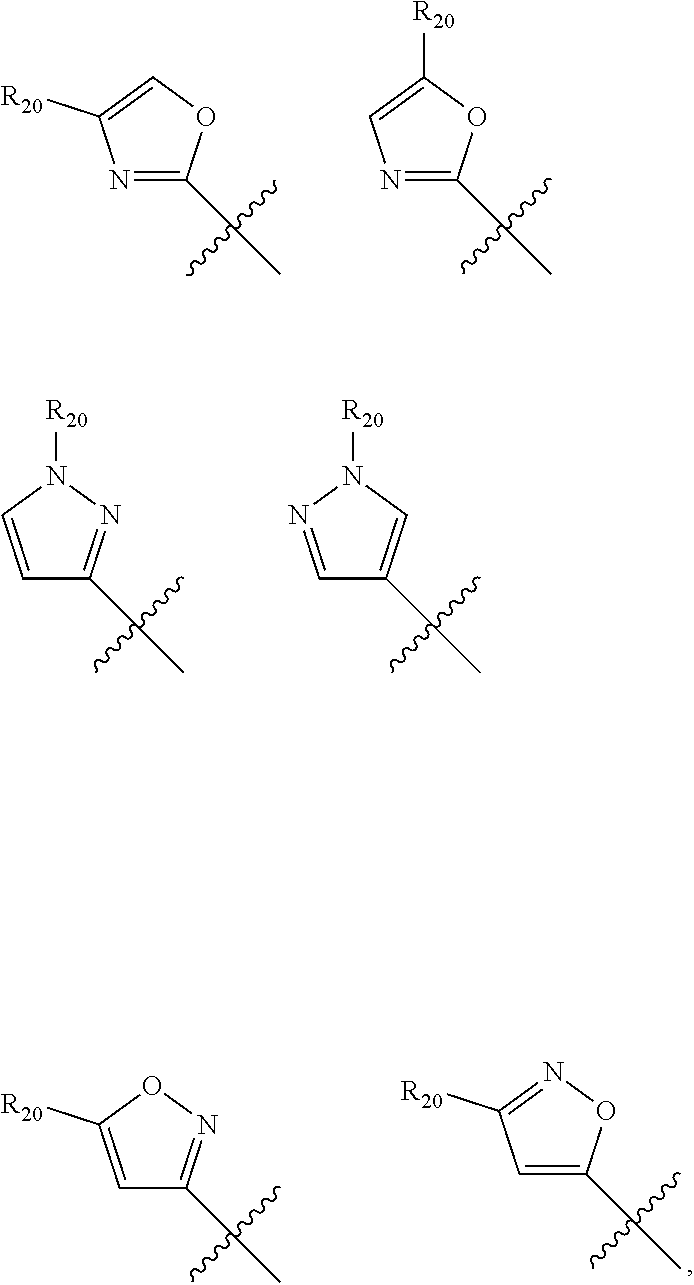
C00014
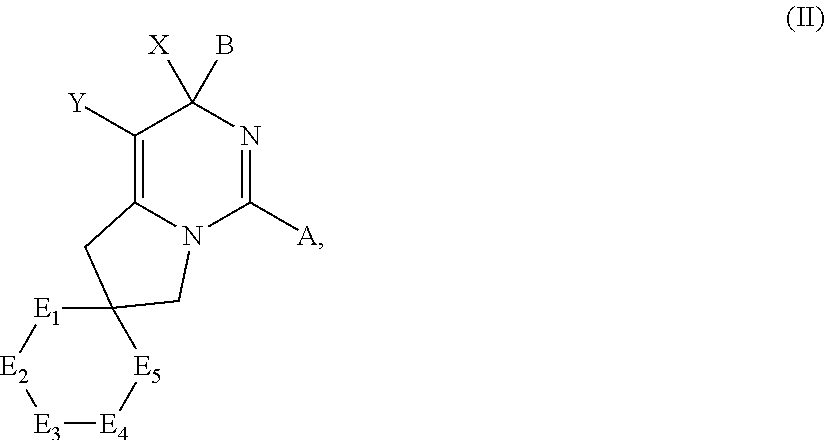
C00015

C00016

C00017
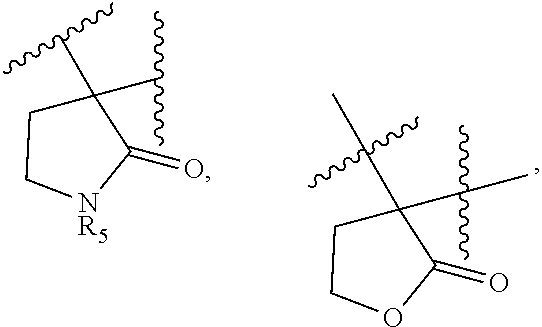
C00018
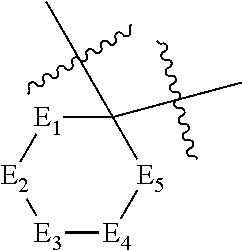
C00019

C00020

C00021

C00022

C00023
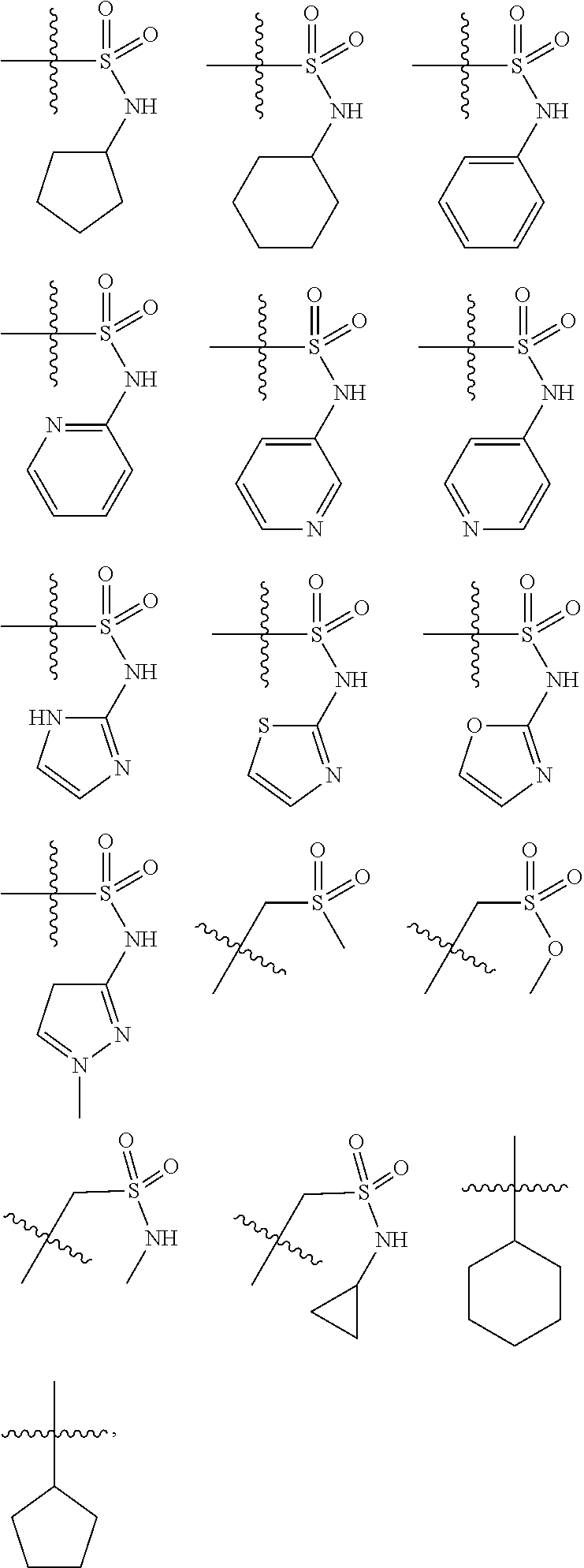
C00024
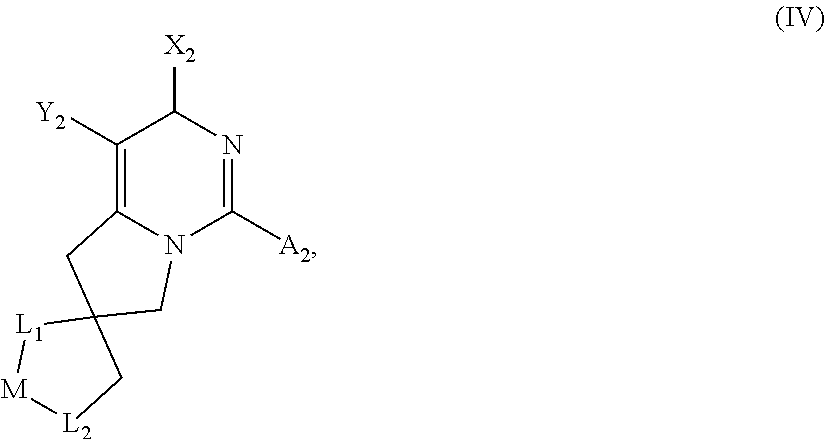
C00025
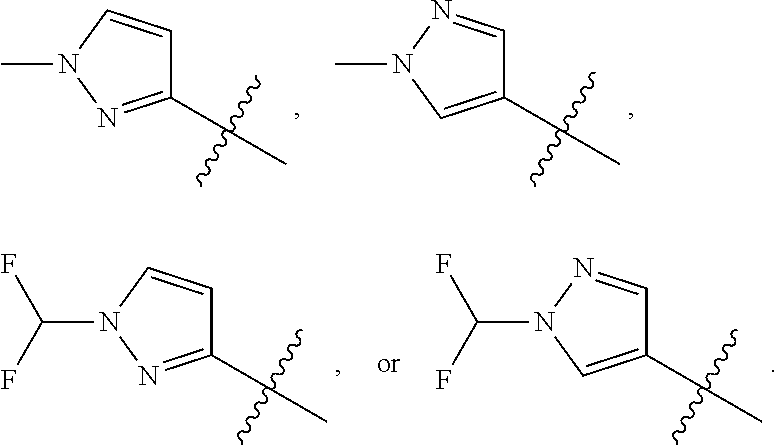
C00026
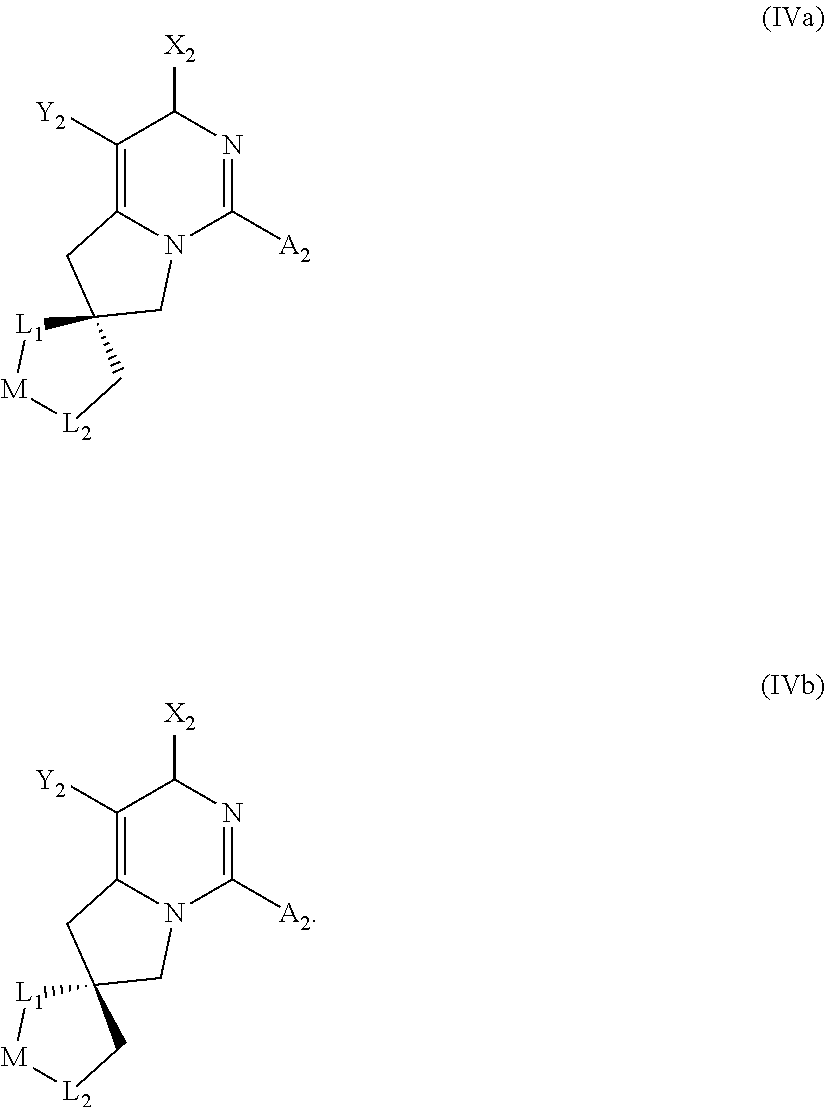
C00027
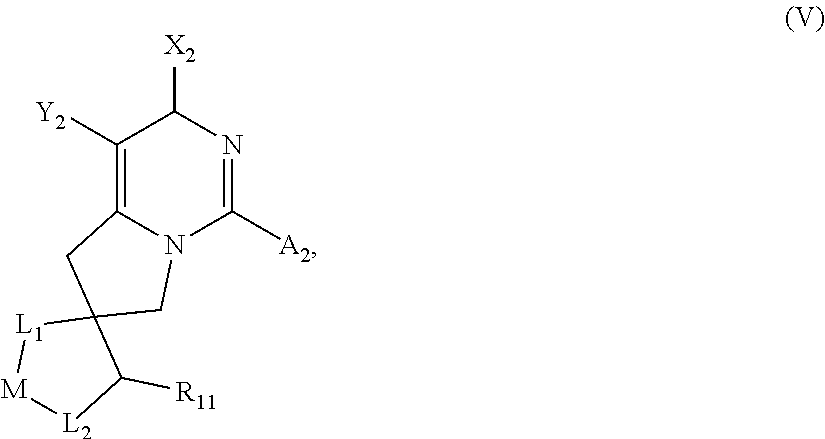
C00028

C00029
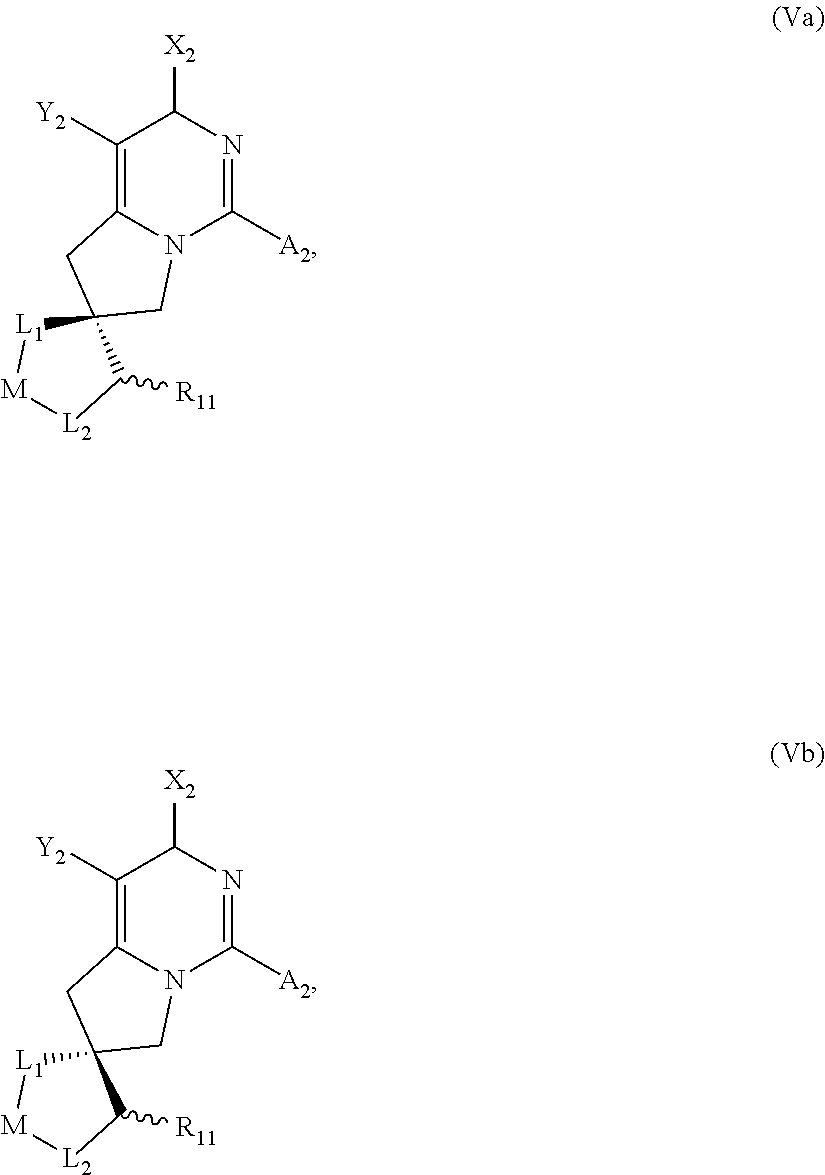
C00030

C00031

C00032
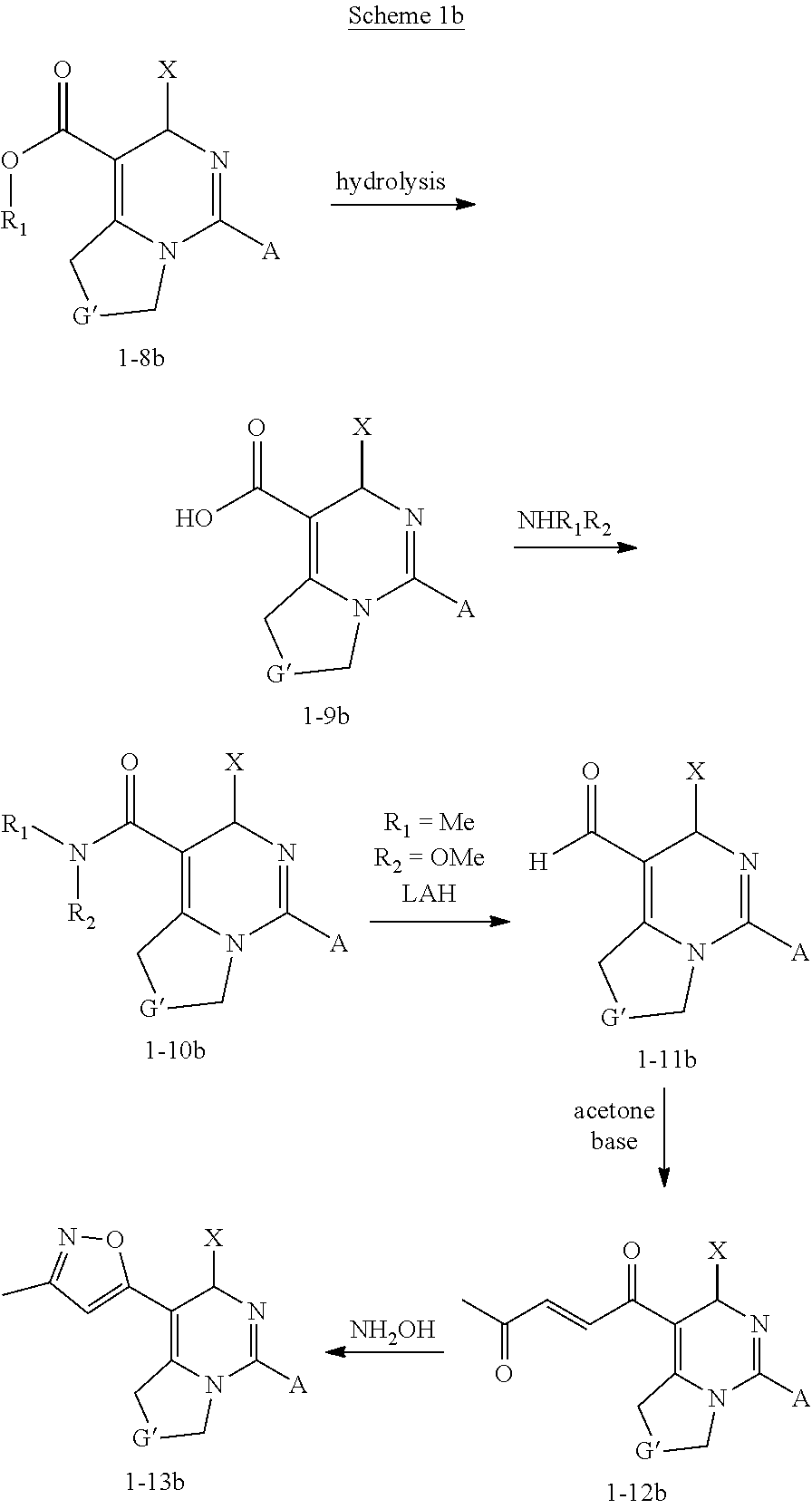
C00033
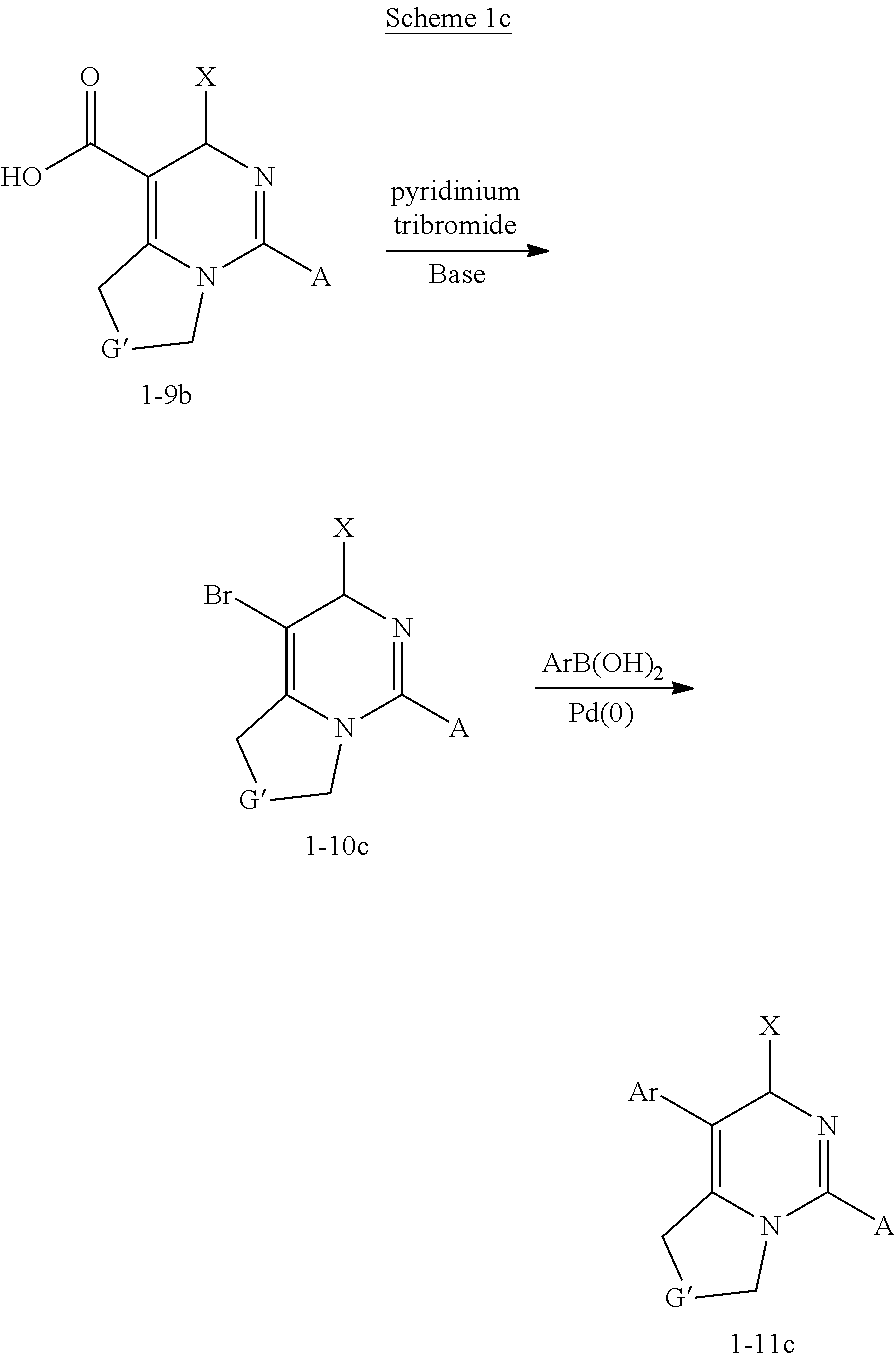
C00034
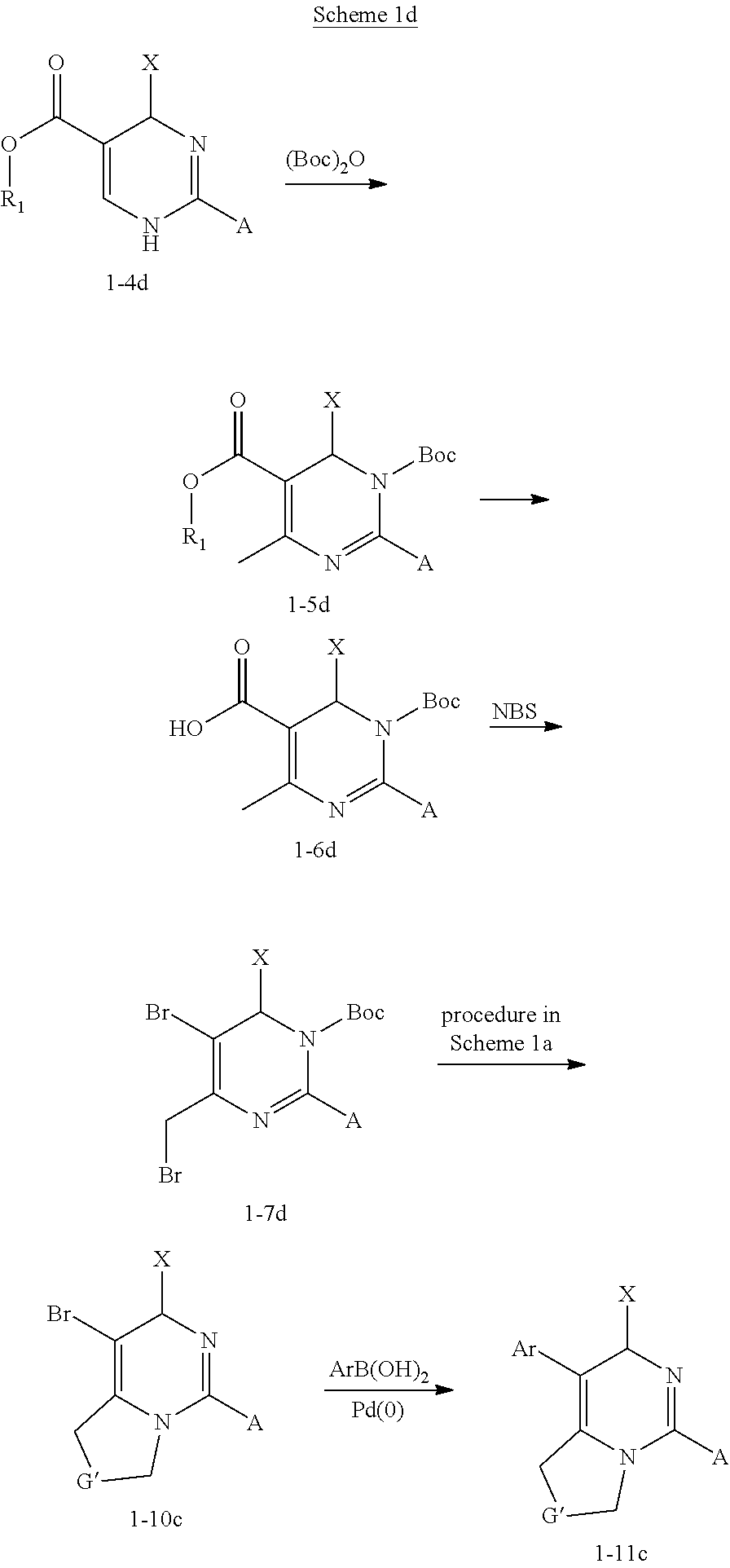
C00035
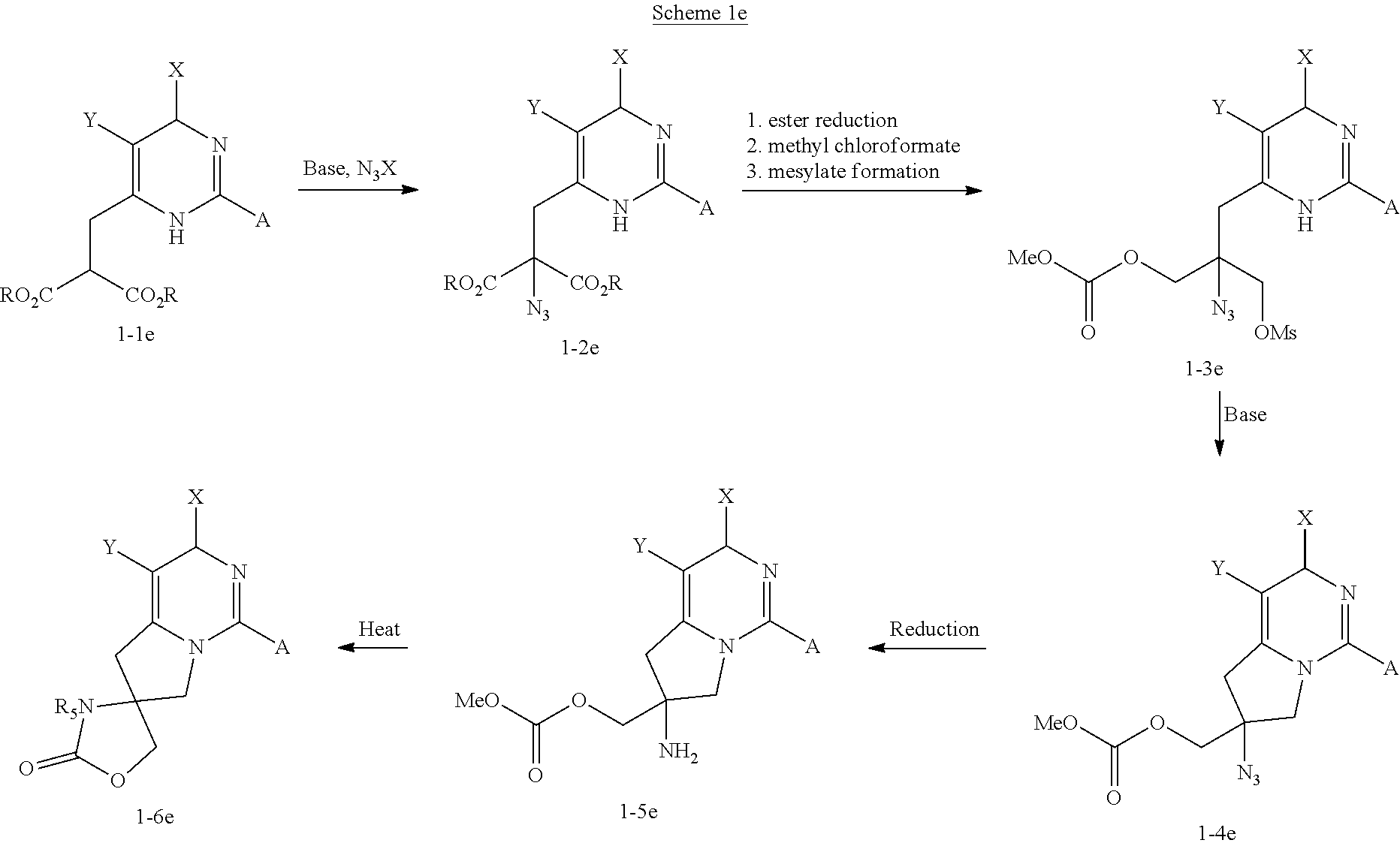
C00036
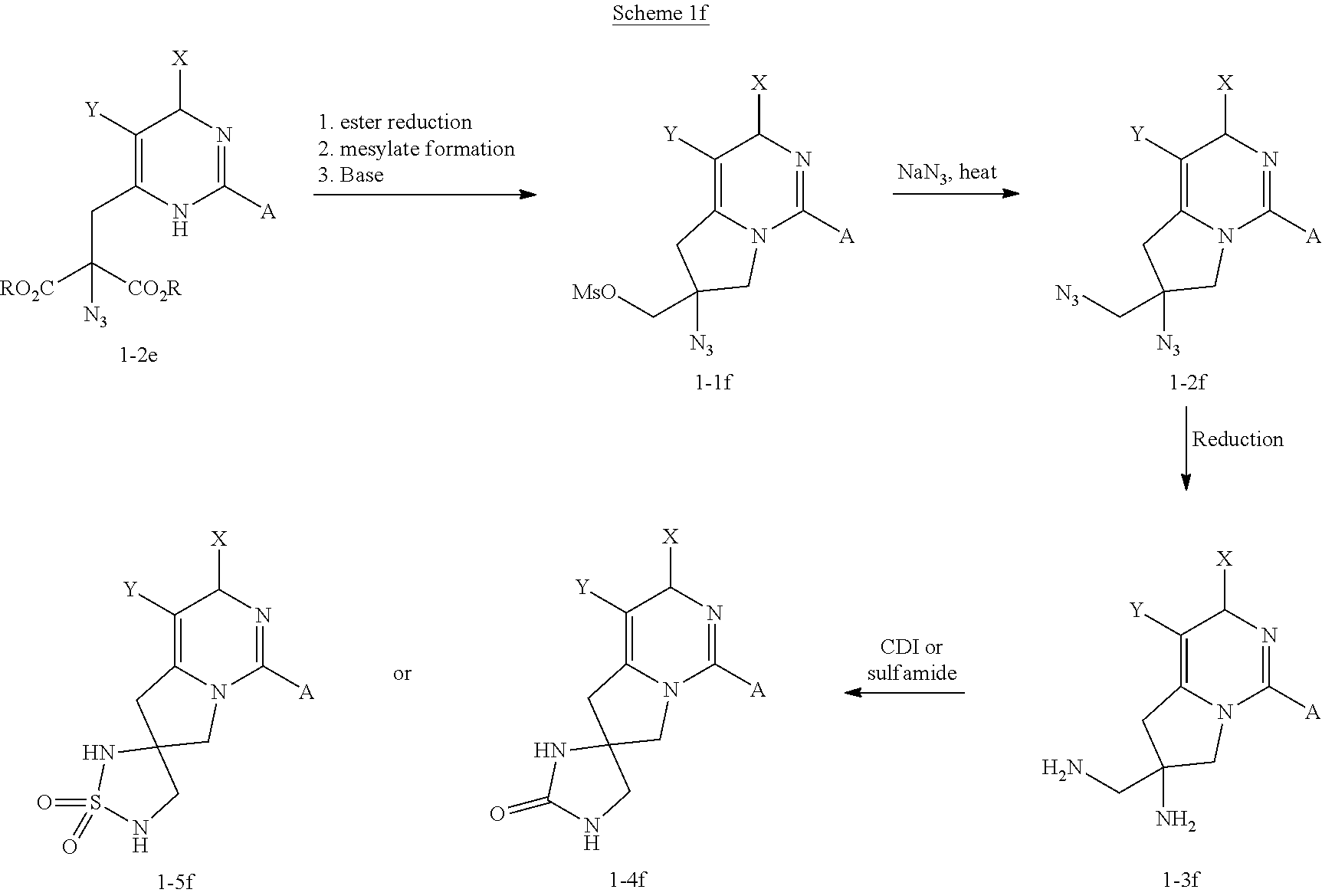
C00037
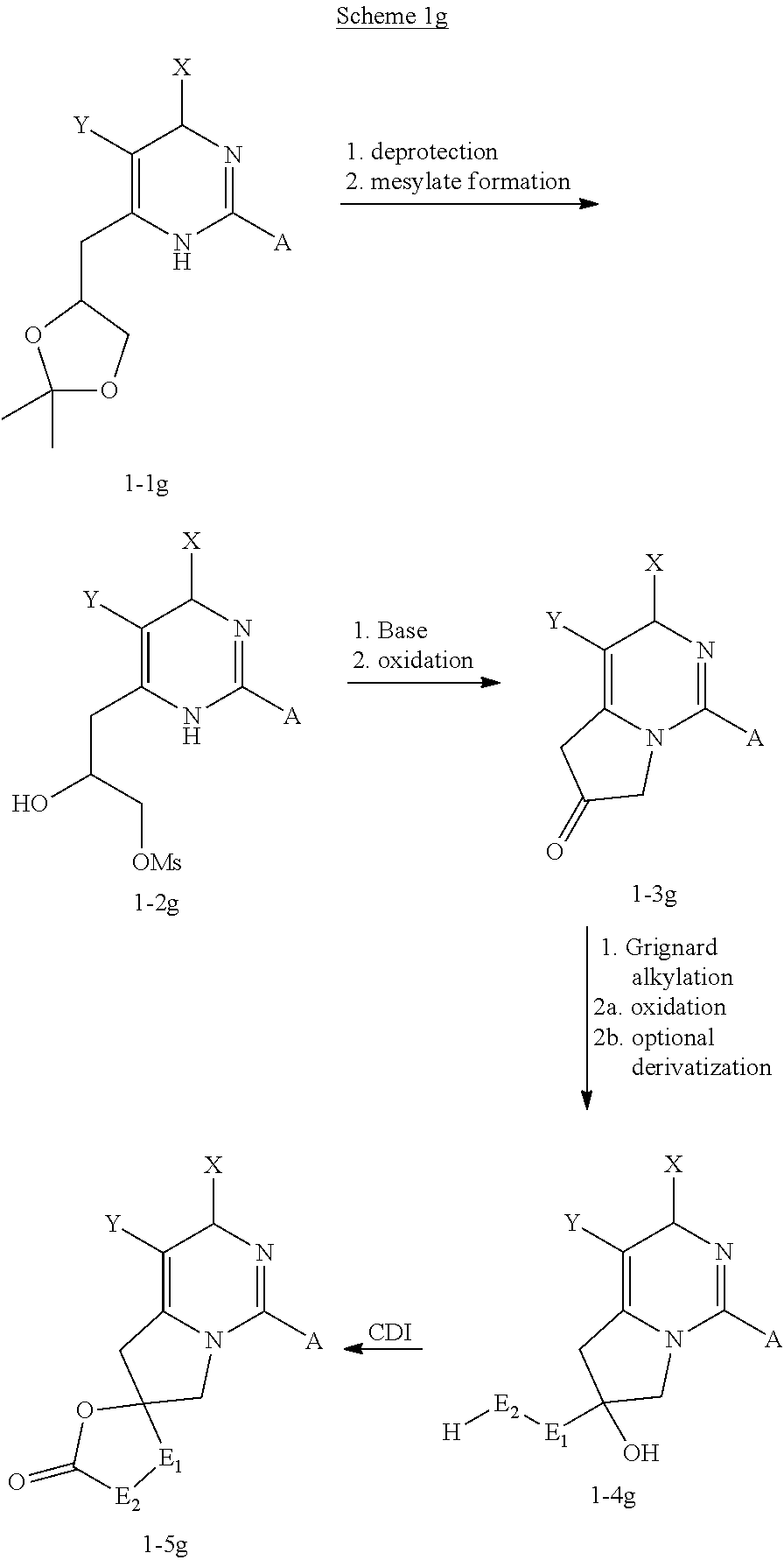
C00038

C00039
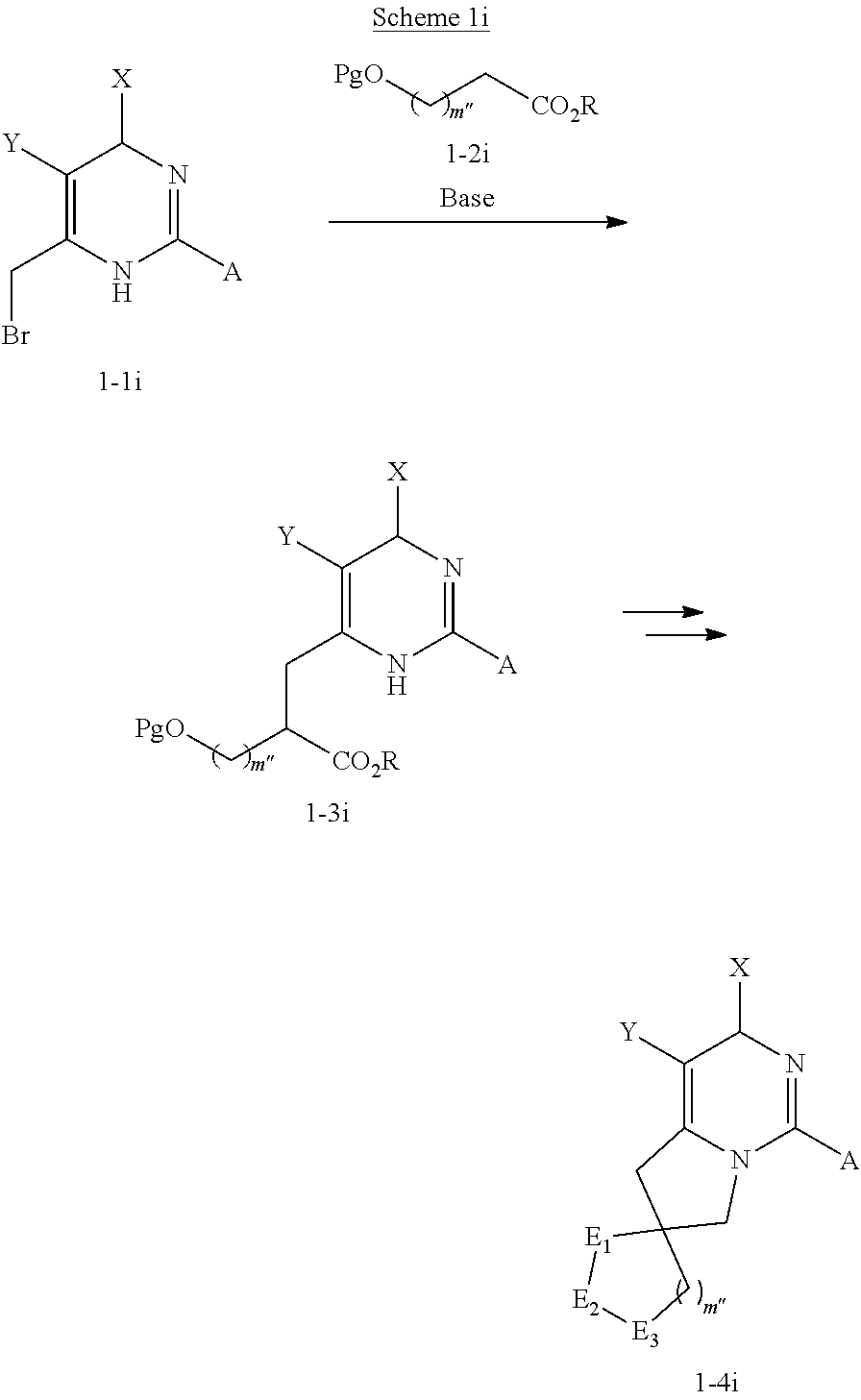
C00040

C00041
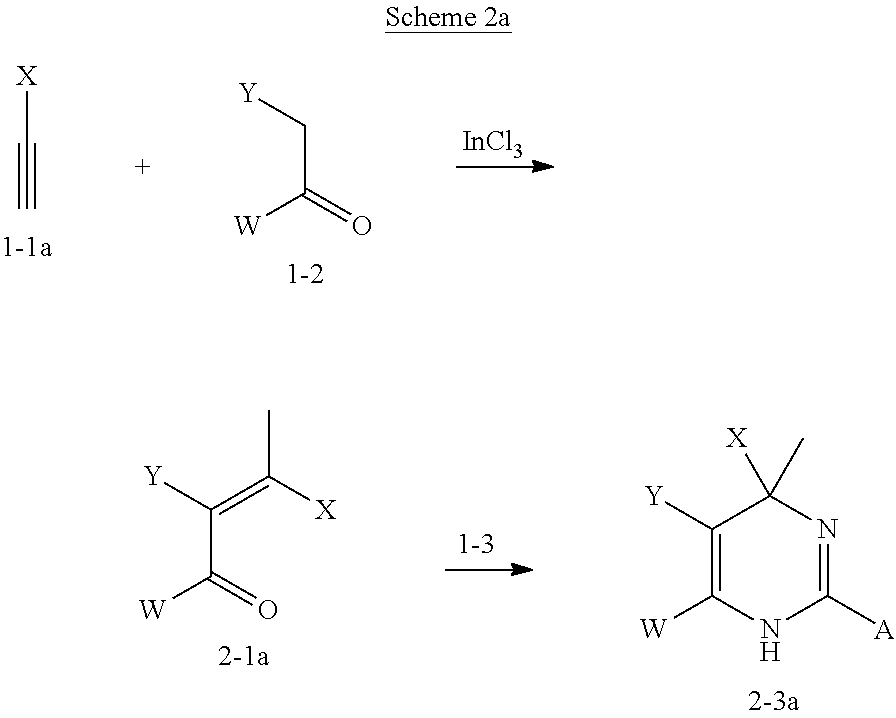
C00042

C00043

C00044
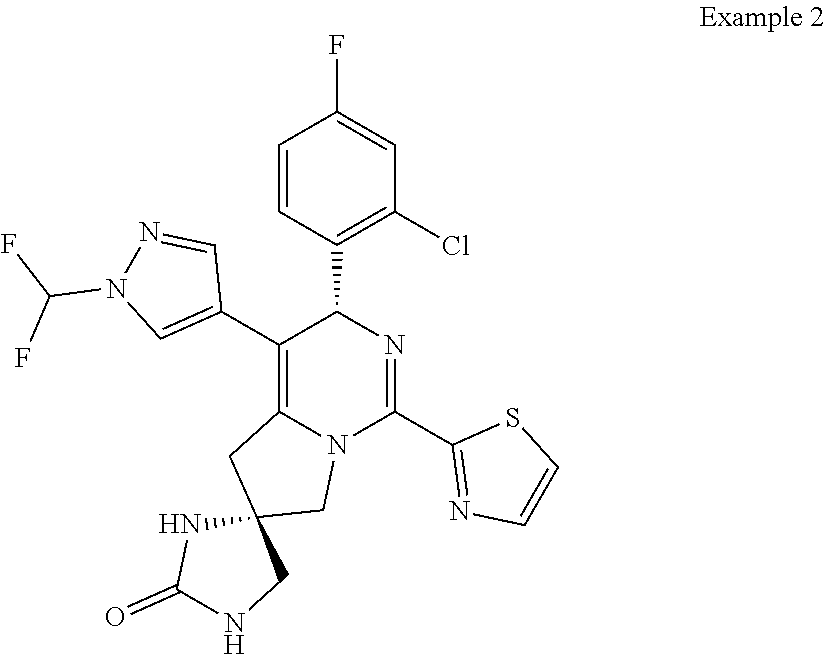
C00045

C00046
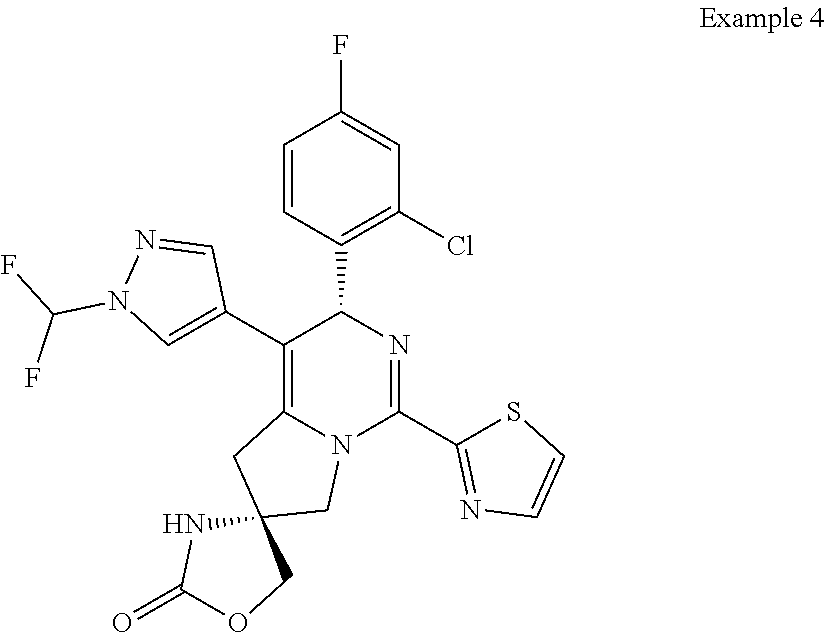
C00047
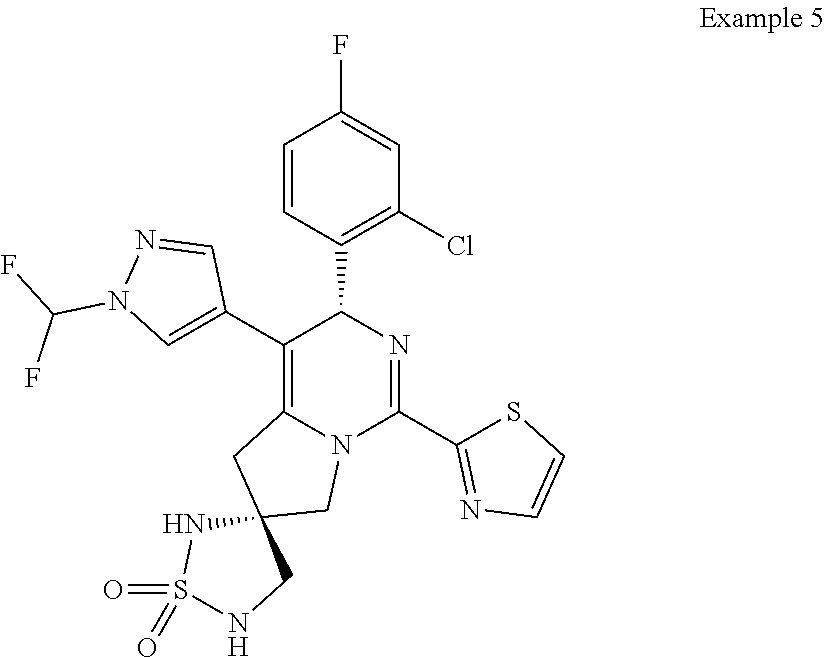
C00048
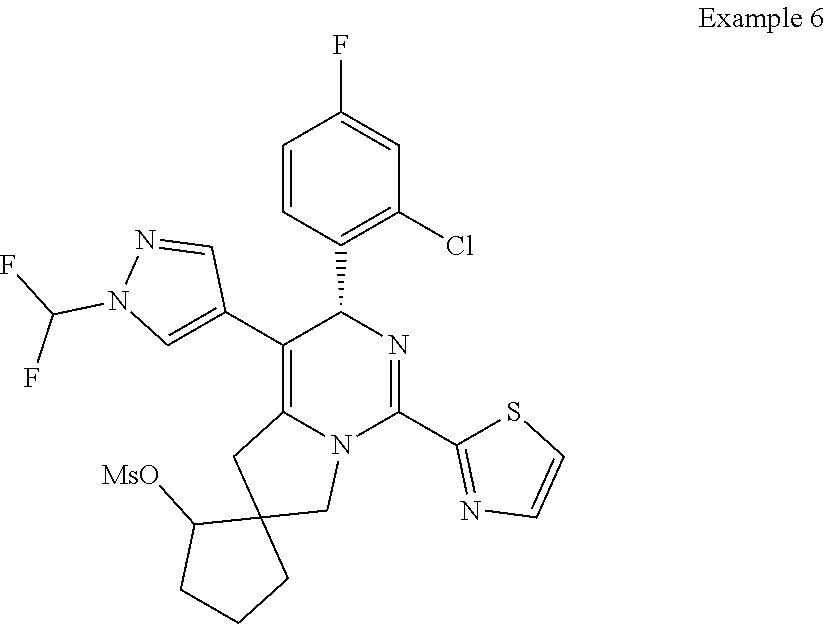
C00049
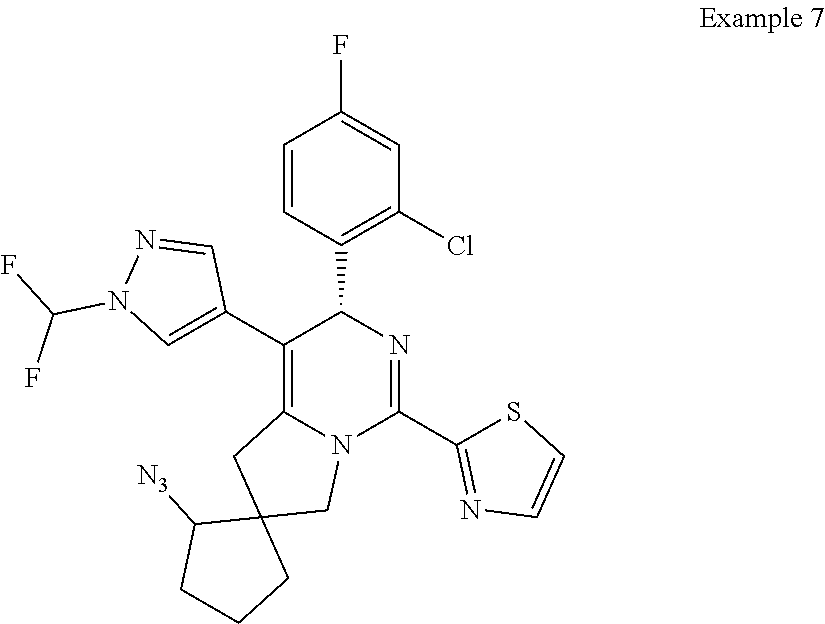
C00050
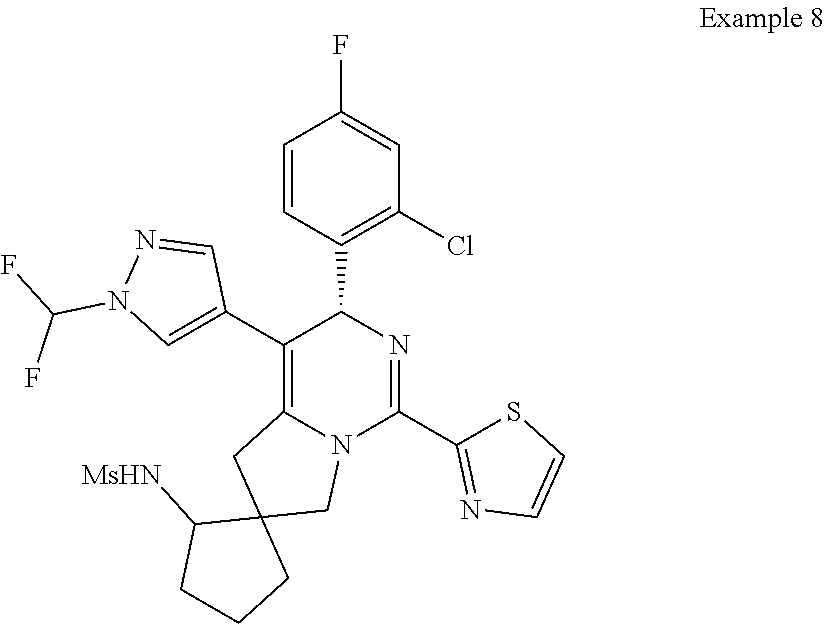
C00051

C00052
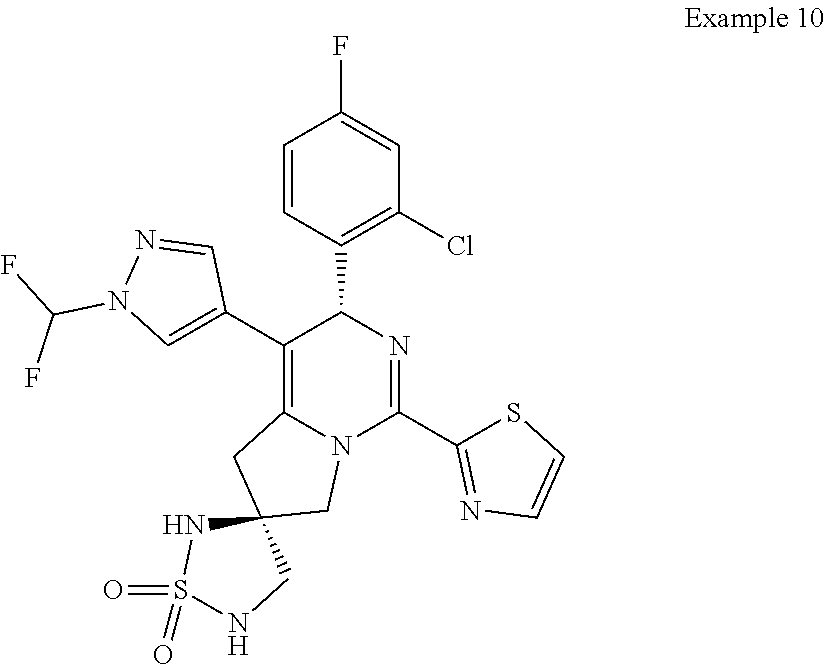
C00053

C00054
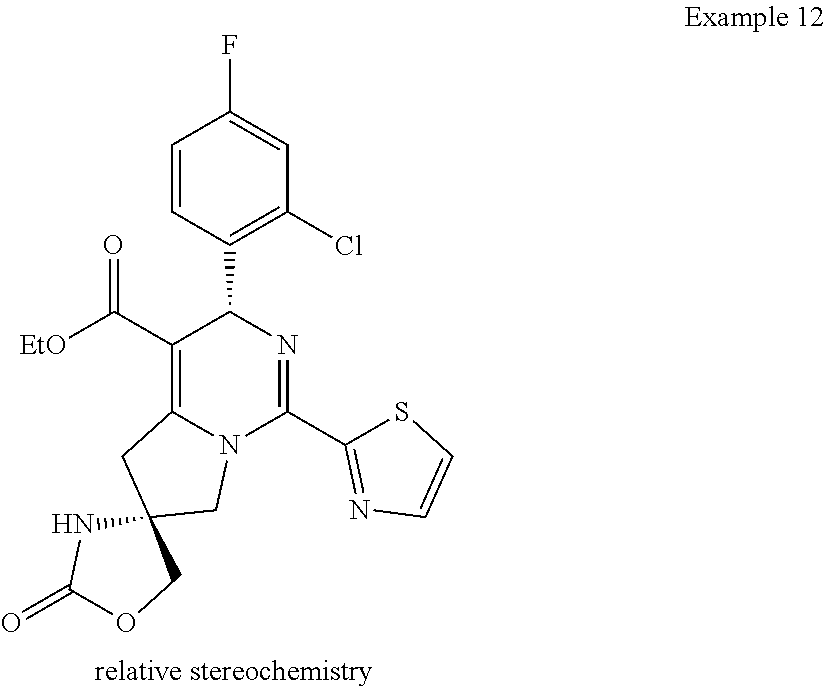
C00055
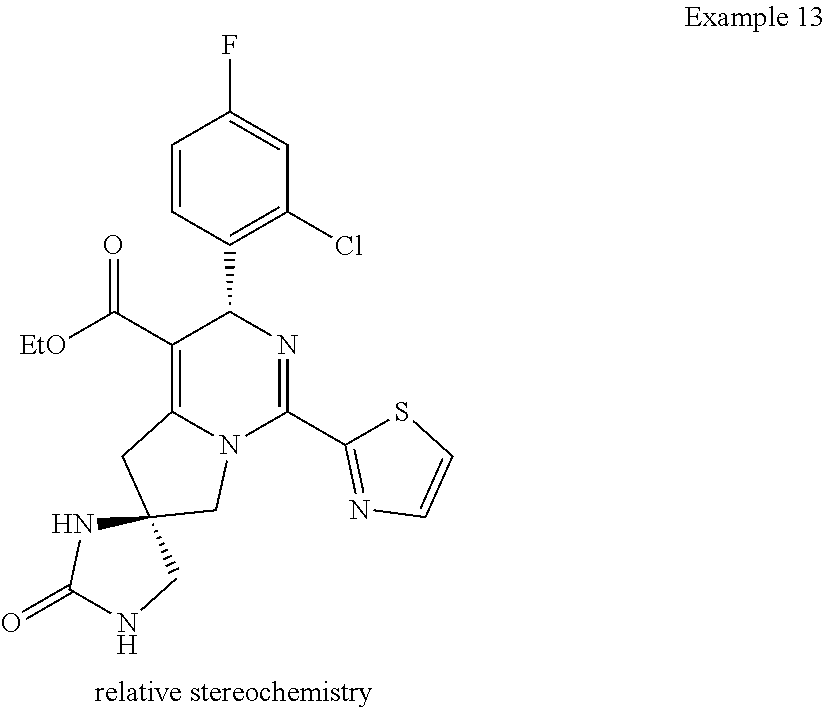
C00056
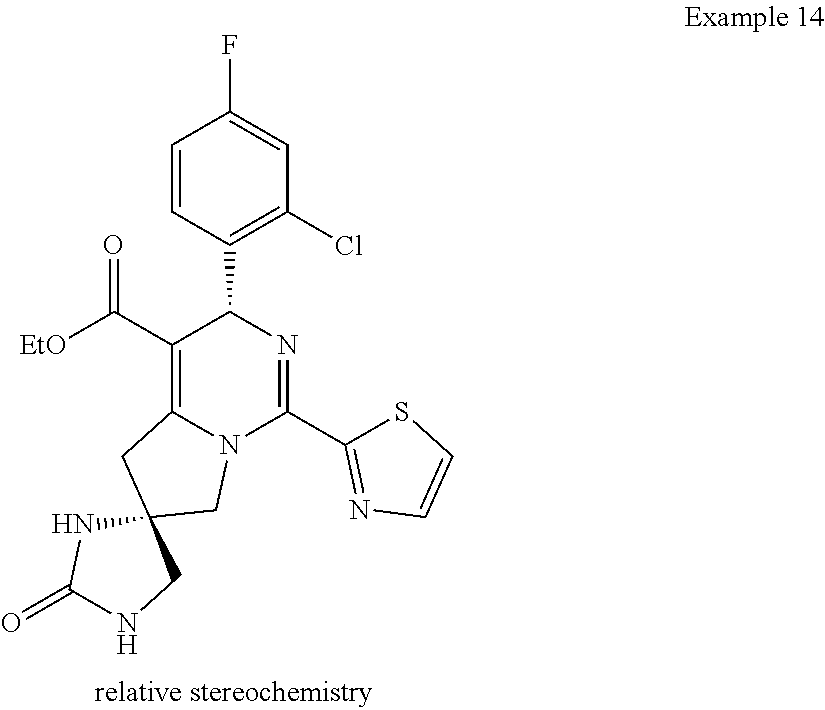
C00057
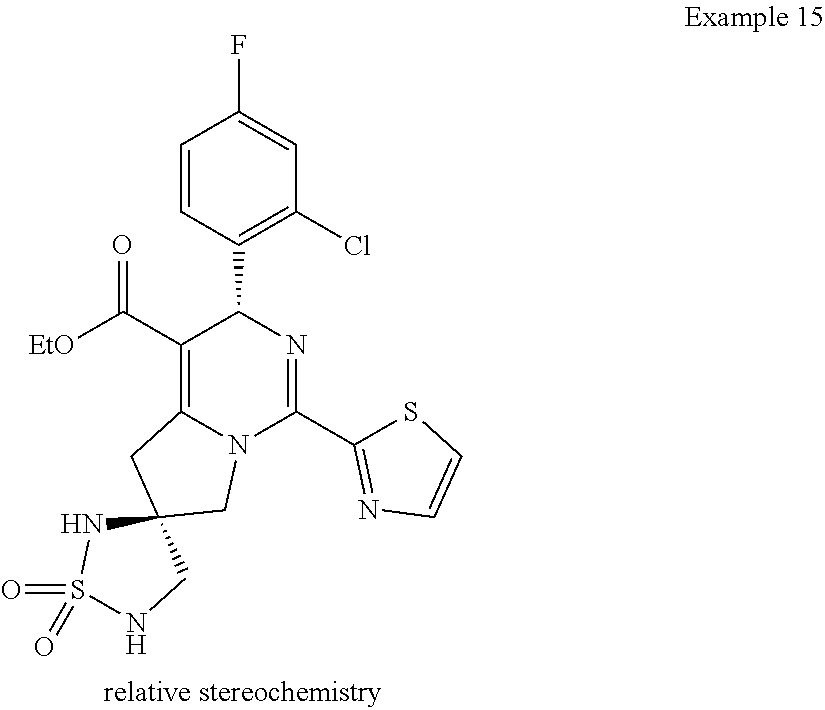
C00058

C00059

C00060

C00061

C00062

C00063
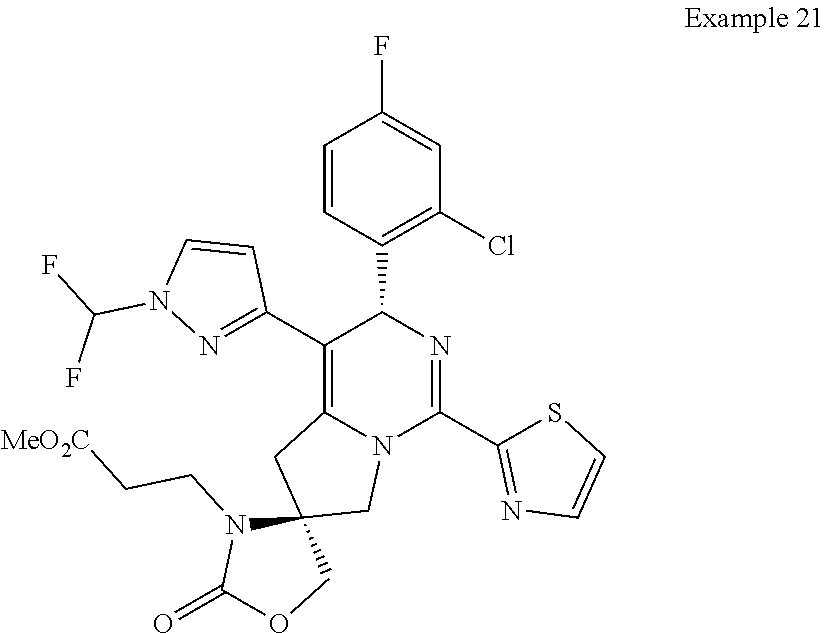
C00064
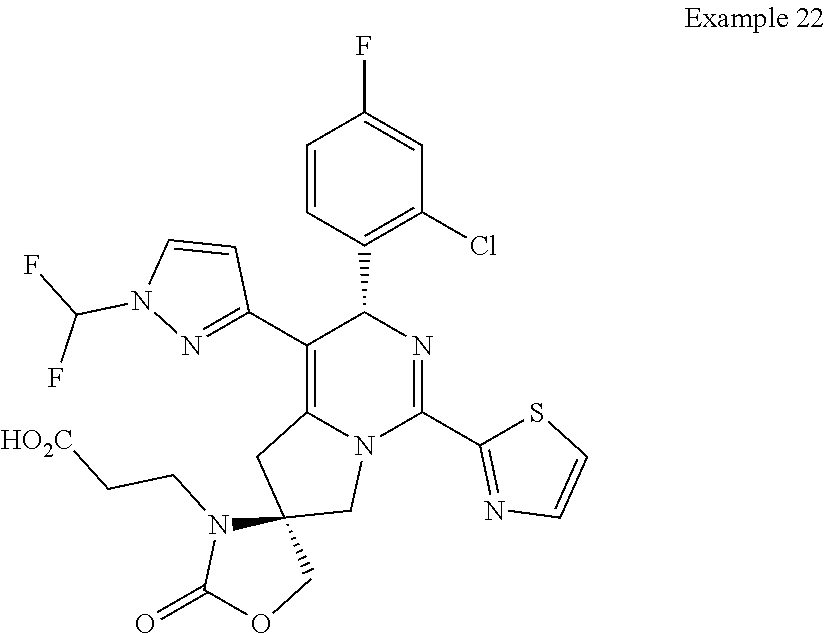
C00065
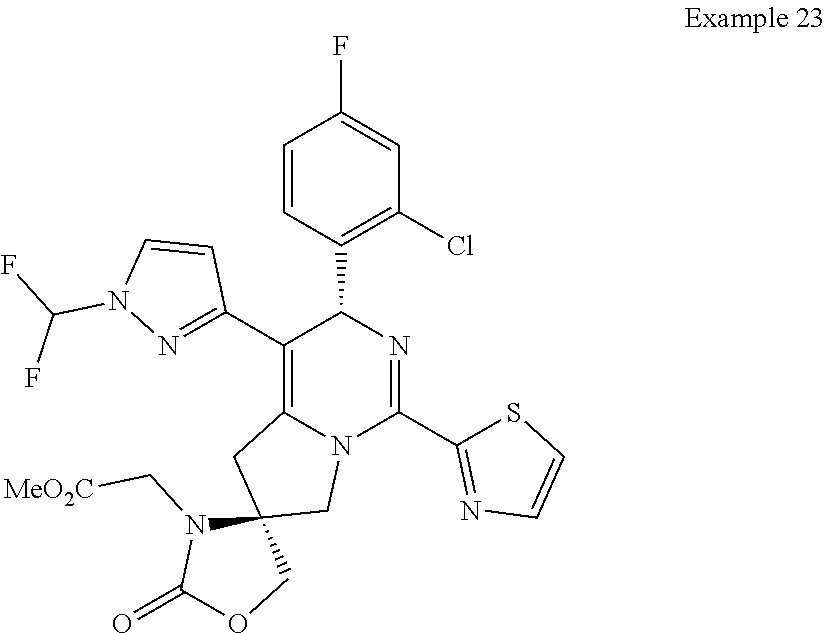
C00066

C00067
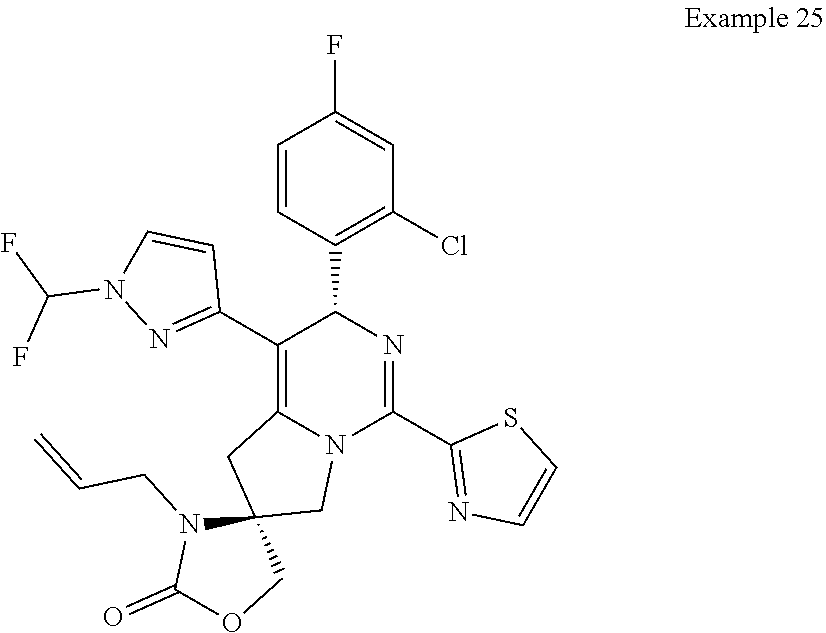
C00068
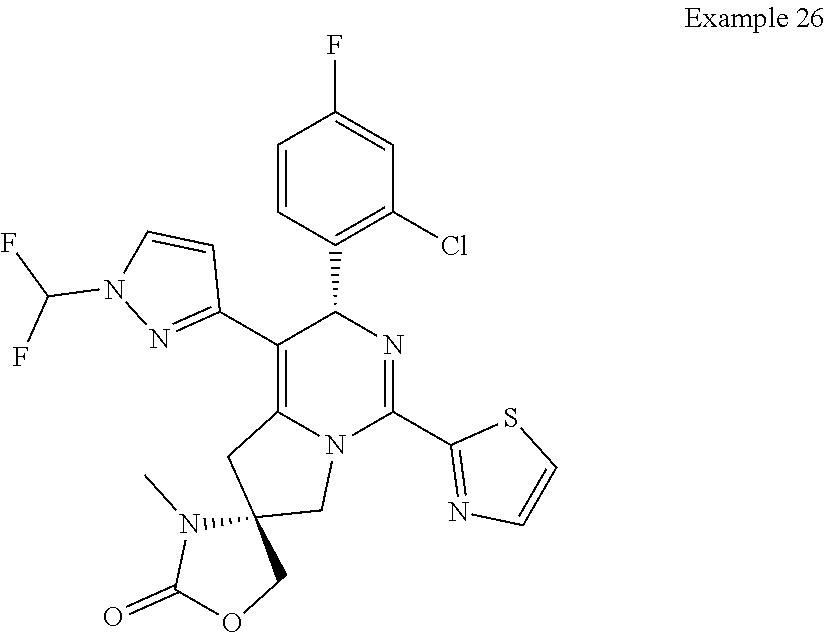
C00069
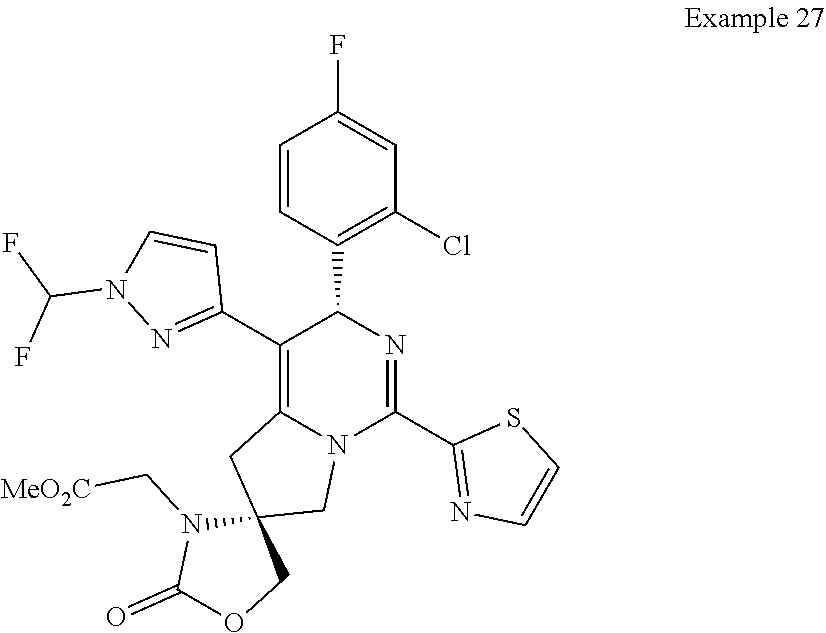
C00070
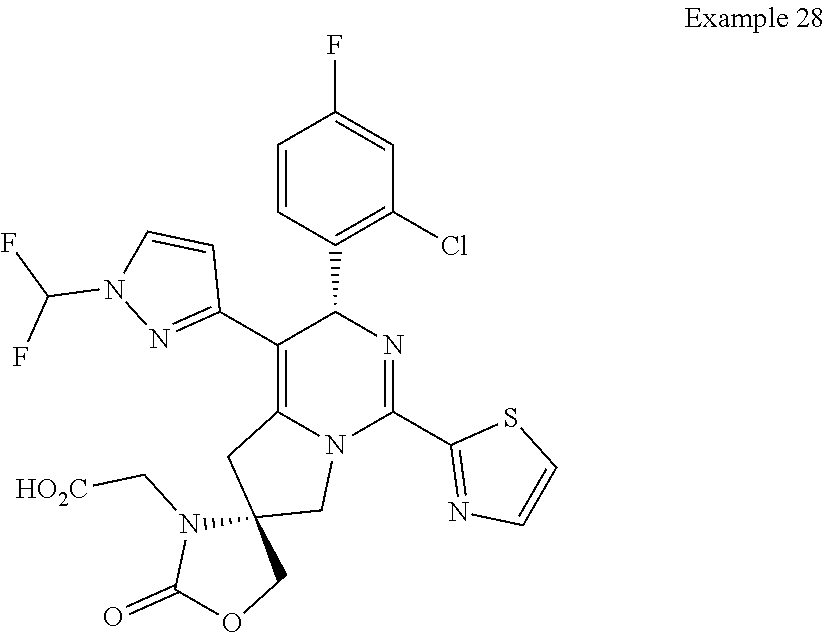
C00071

C00072
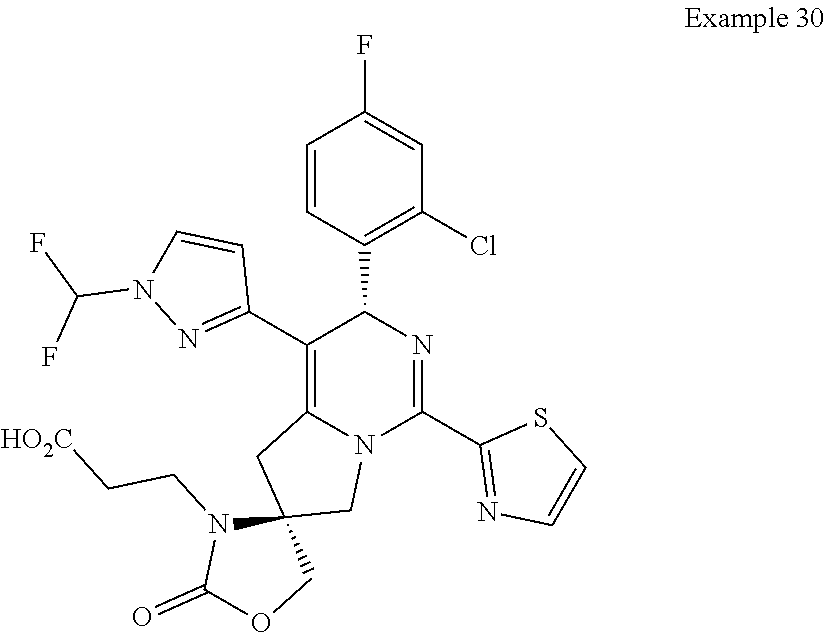
C00073

C00074

C00075
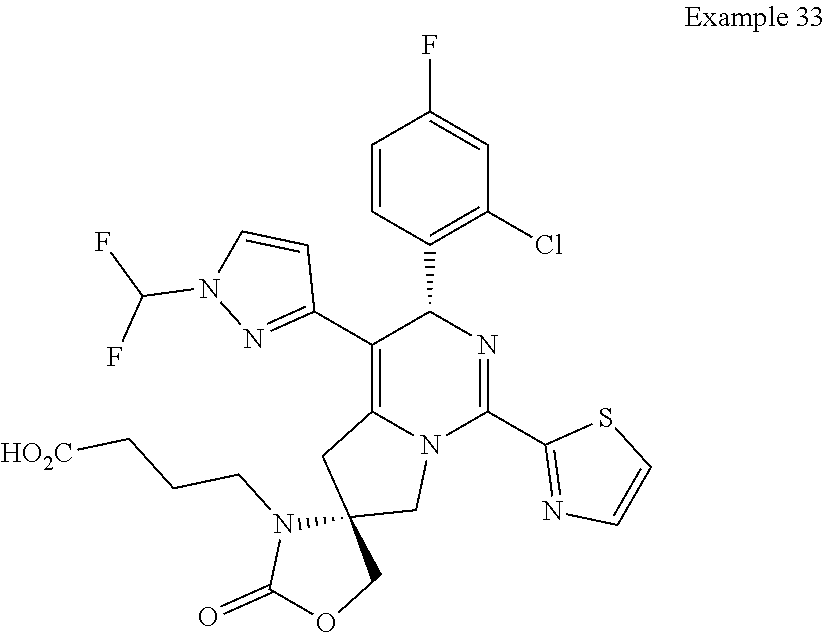
C00076
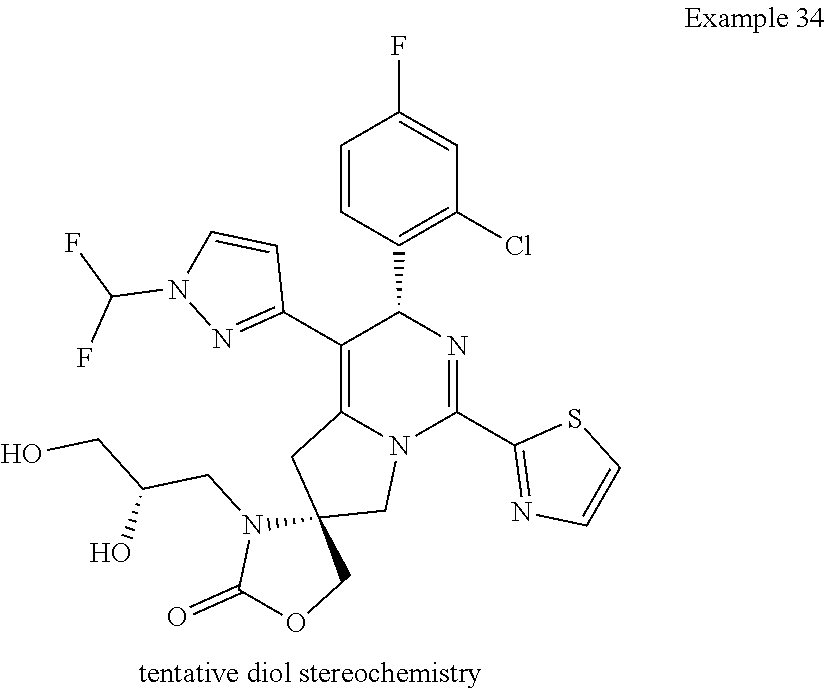
C00077
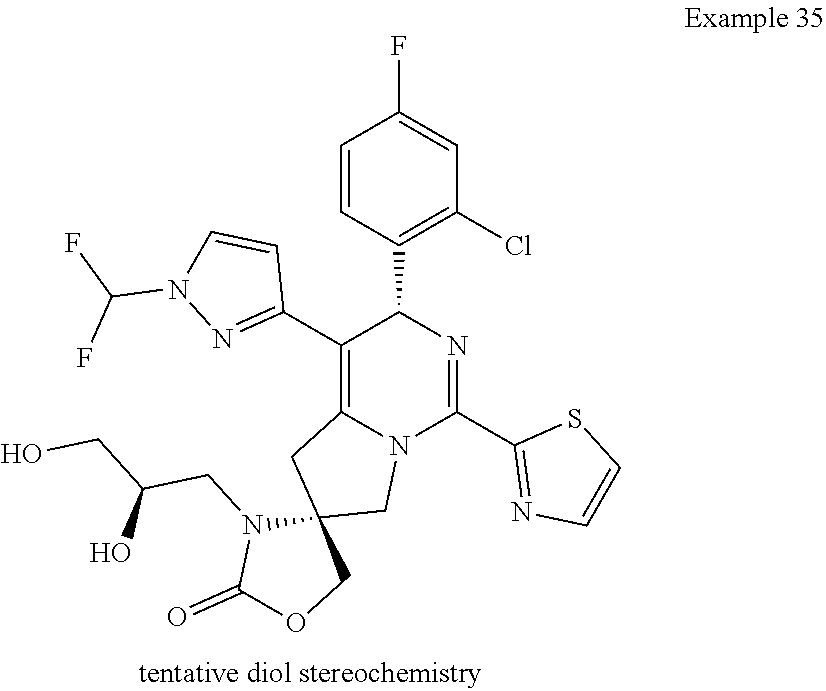
C00078
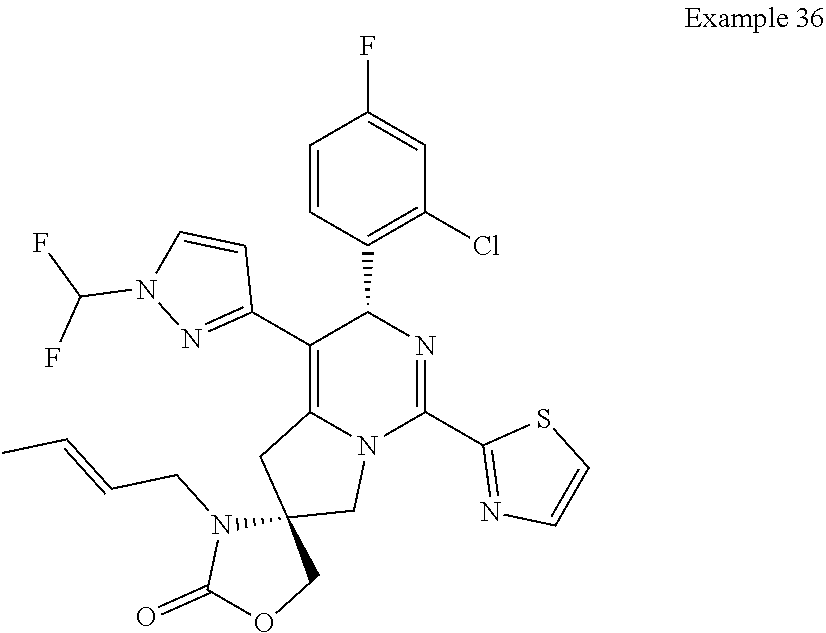
C00079
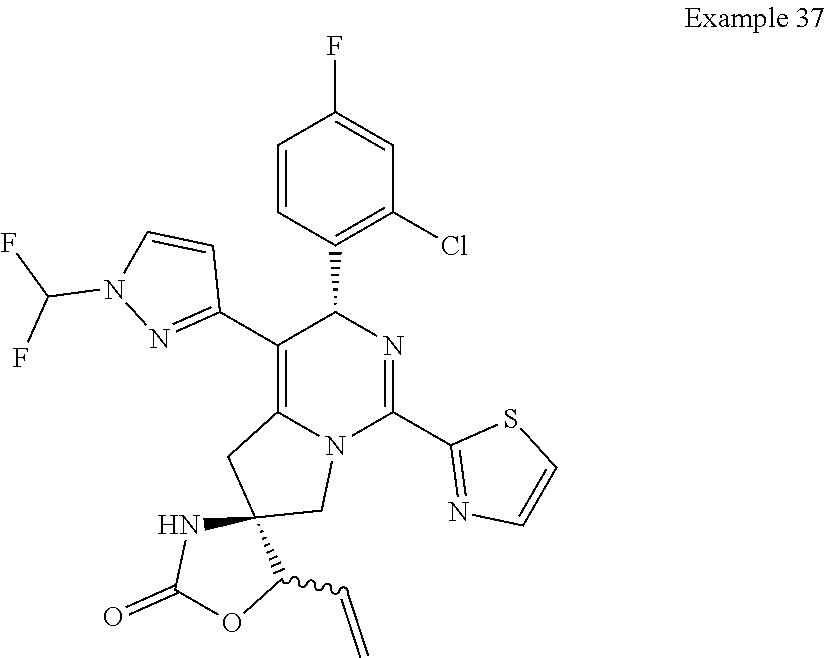
C00080

C00081
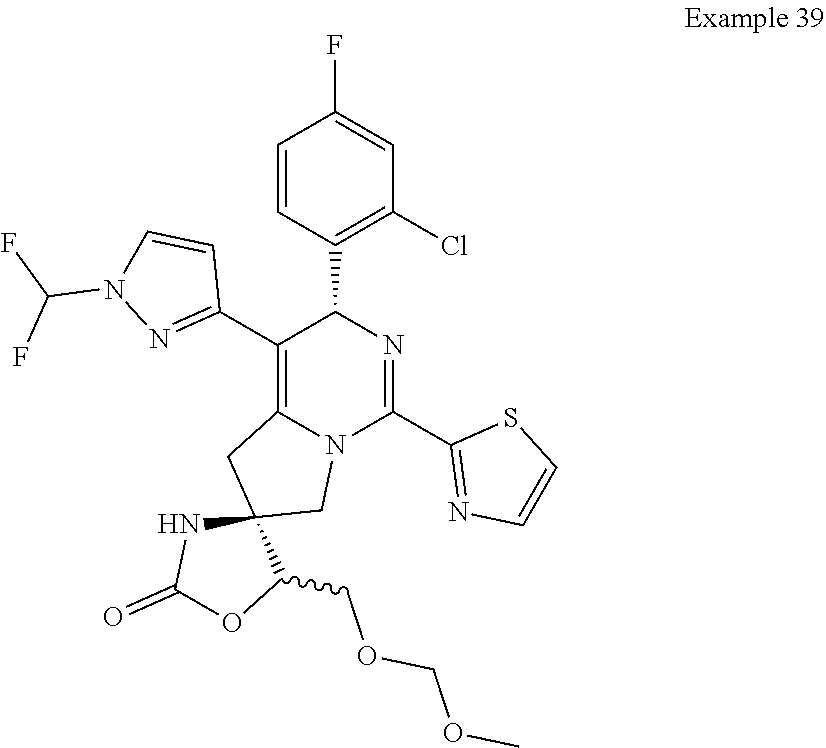
C00082
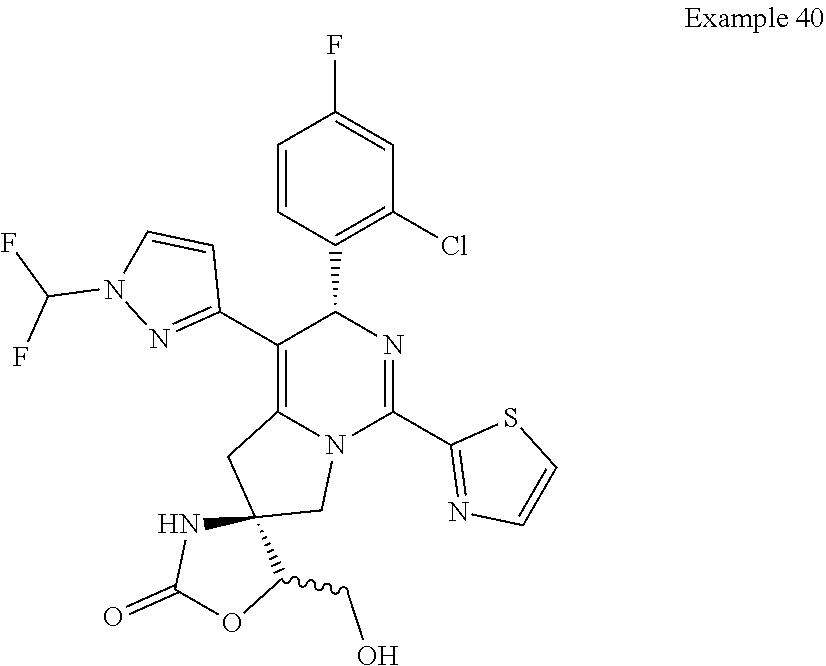
C00083
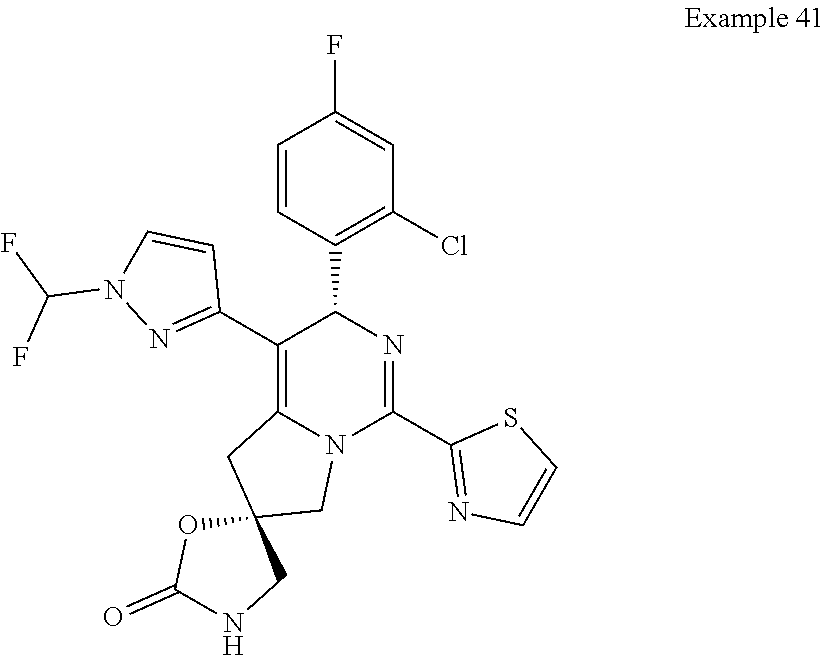
C00084
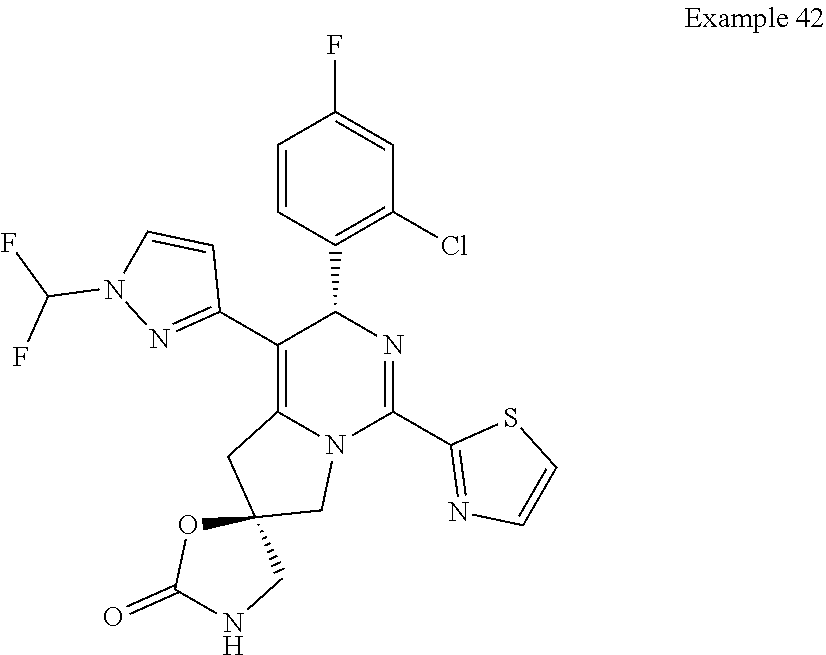
C00085
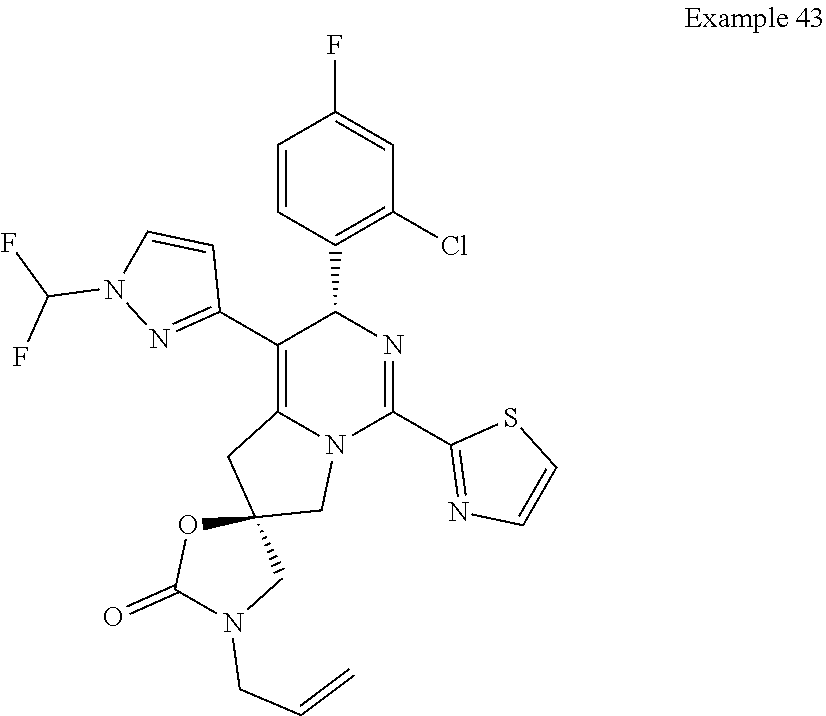
C00086
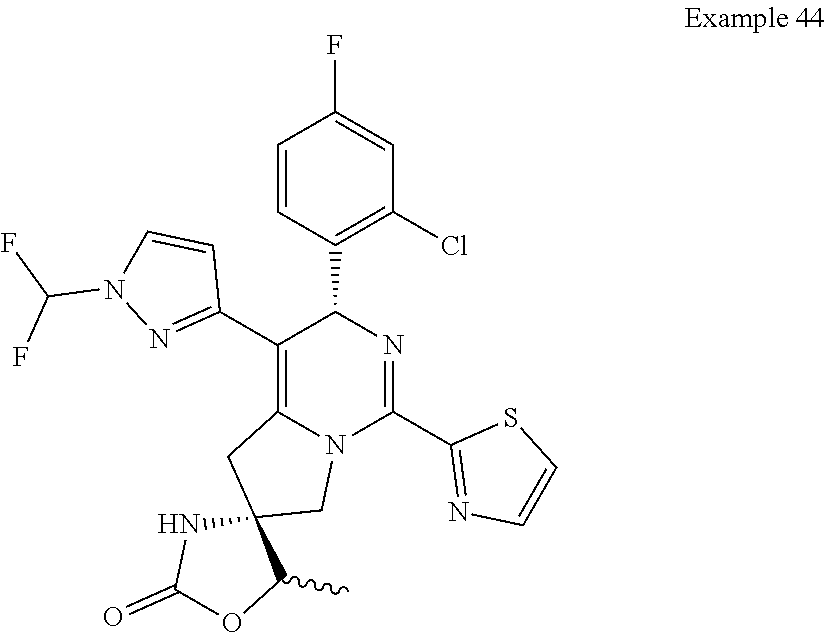
C00087

C00088
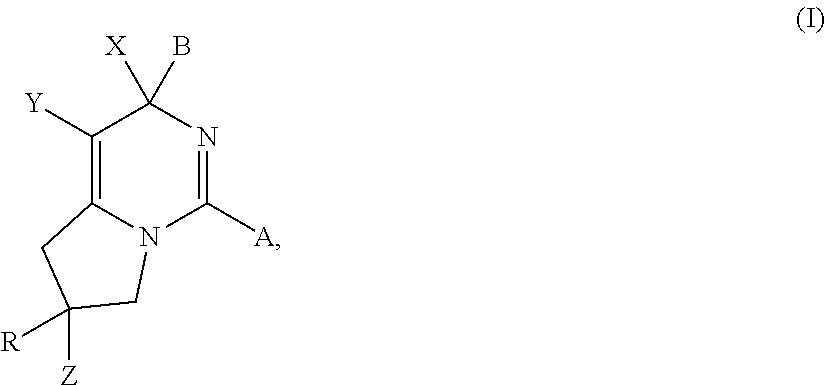
C00089
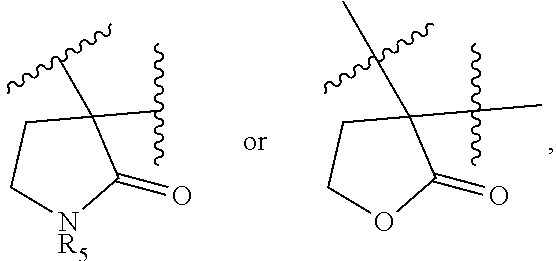
C00090

C00091
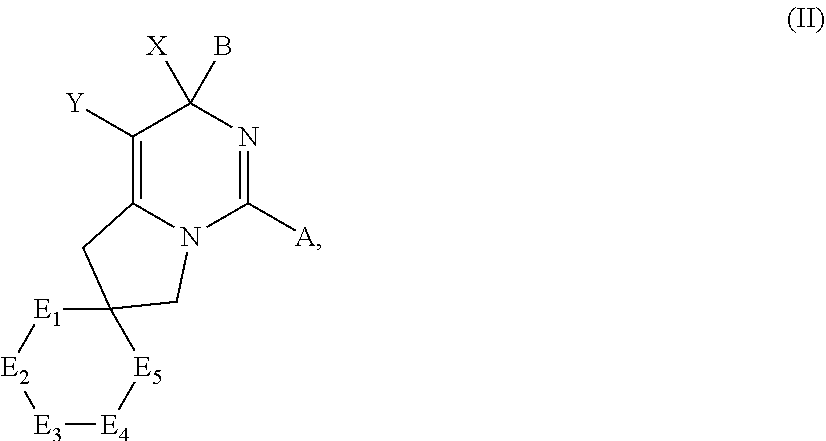
C00092
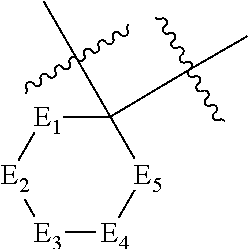
C00093

C00094

C00095
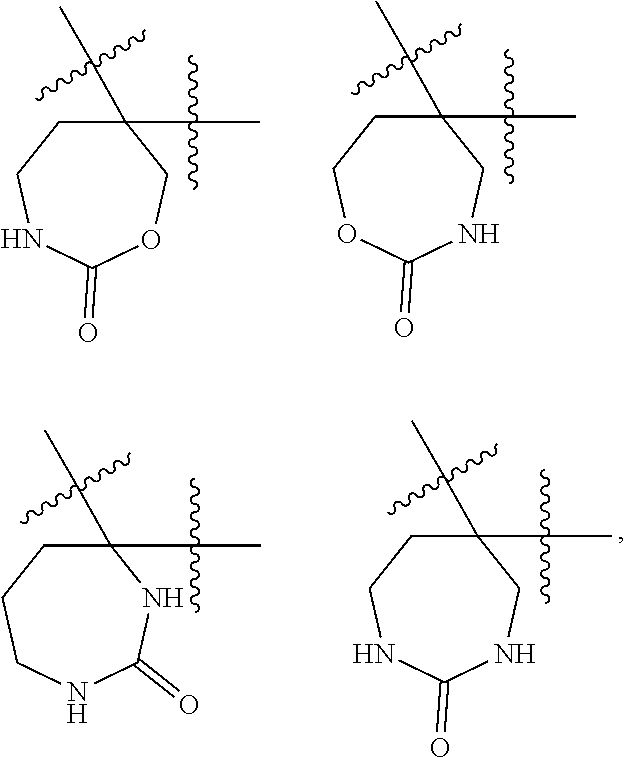
C00096
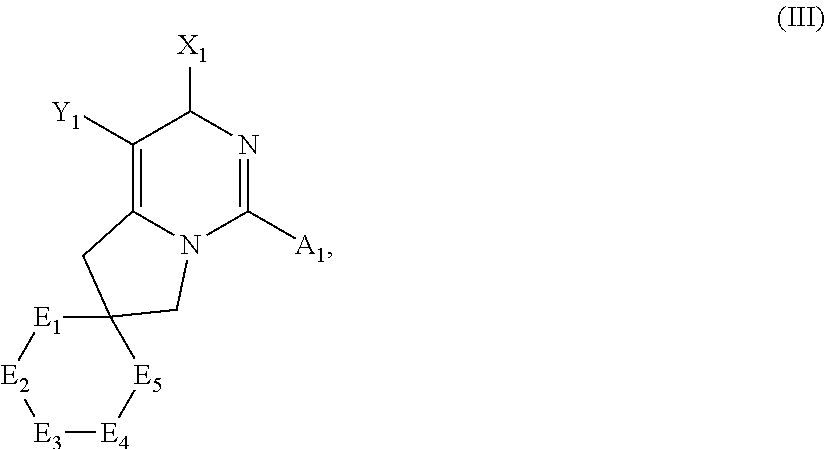
C00097
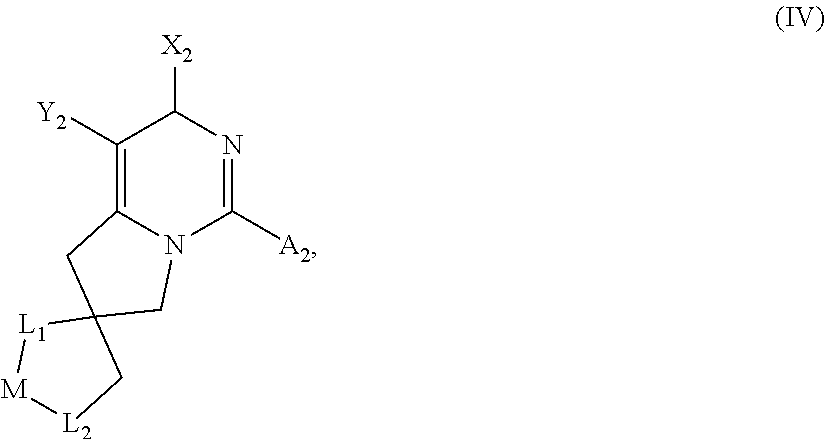
C00098

C00099
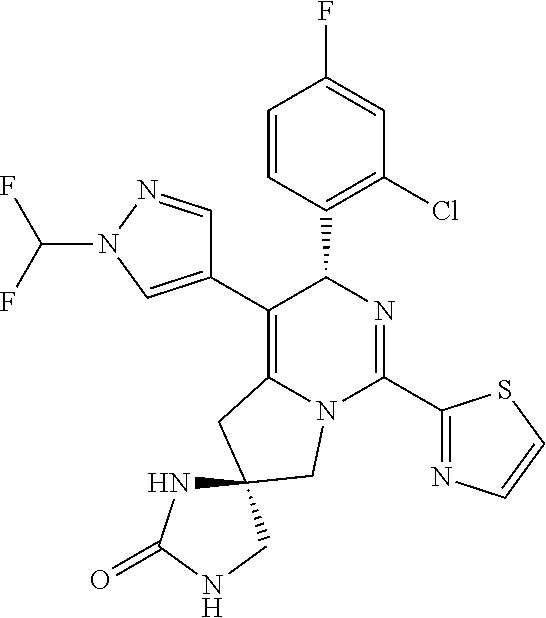
C00100

C00101
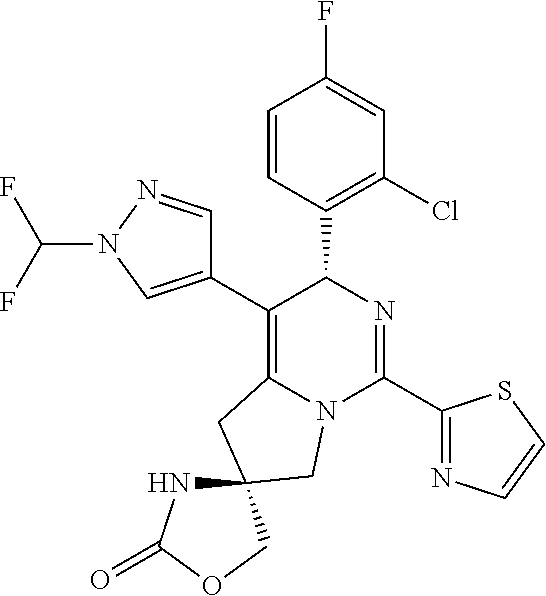
C00102
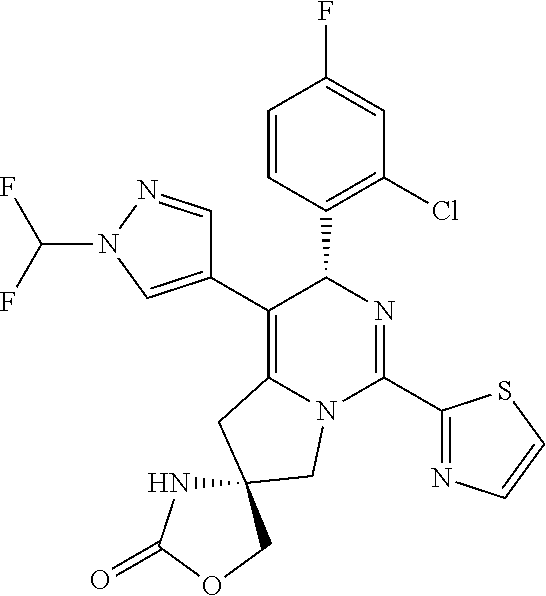
C00103

C00104
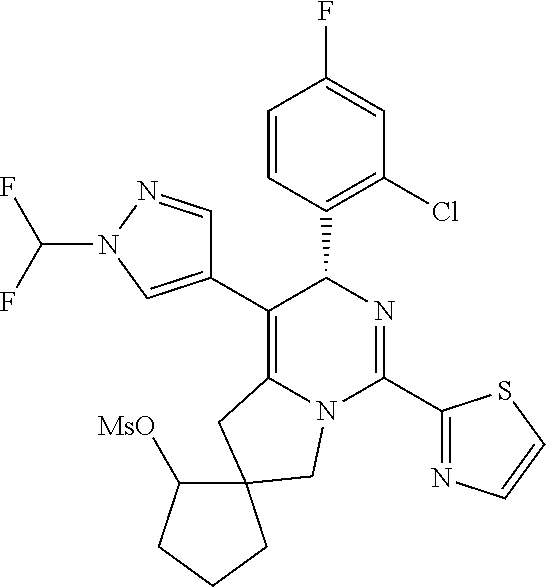
C00105
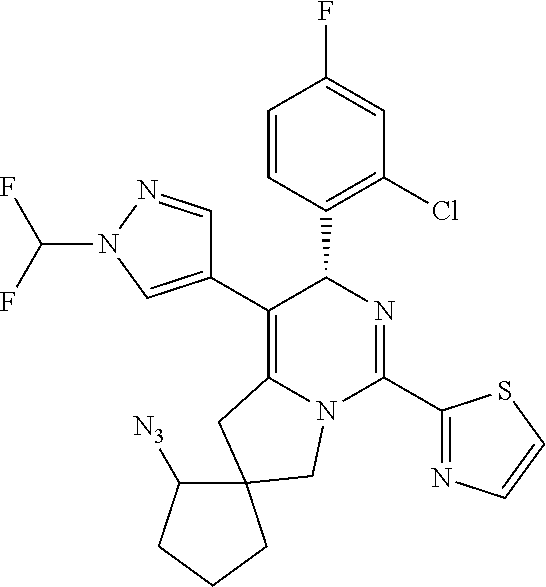
C00106
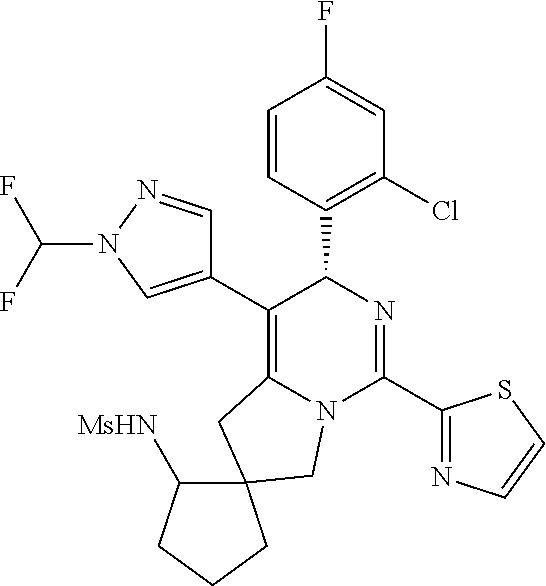
C00107
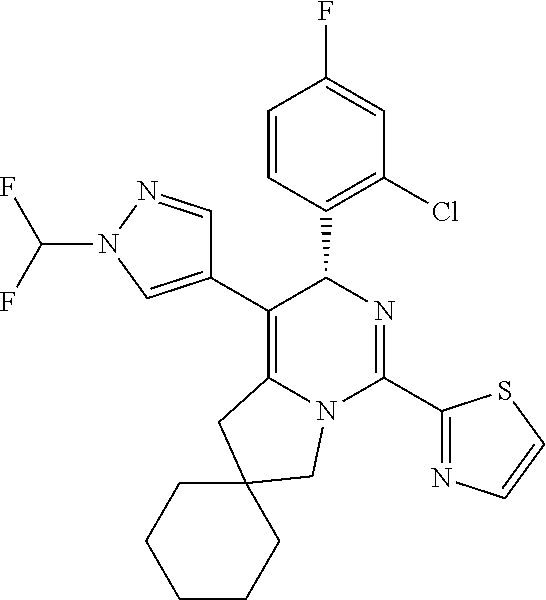
C00108
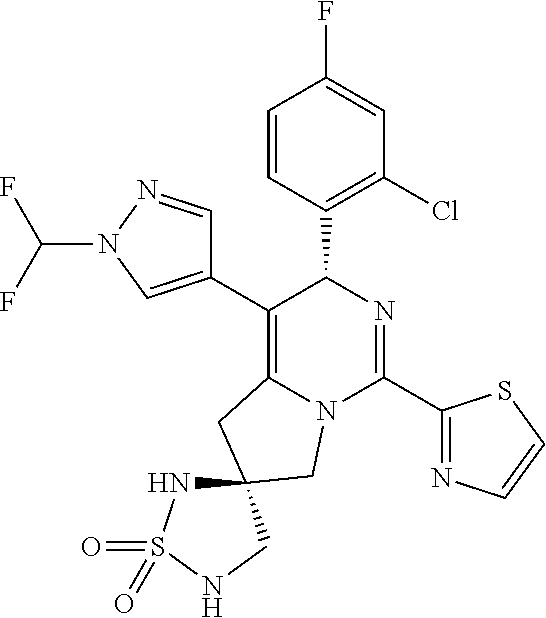
C00109
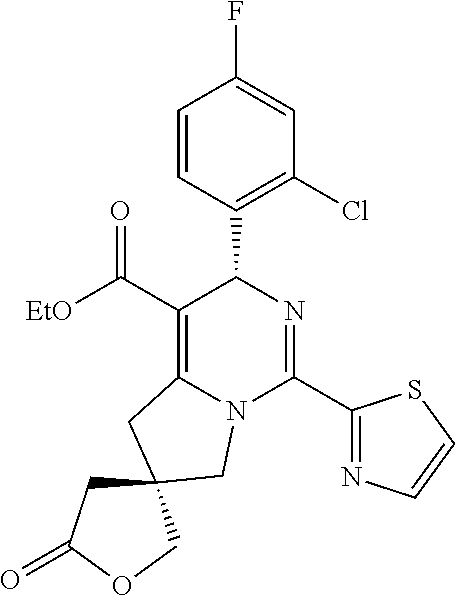
C00110
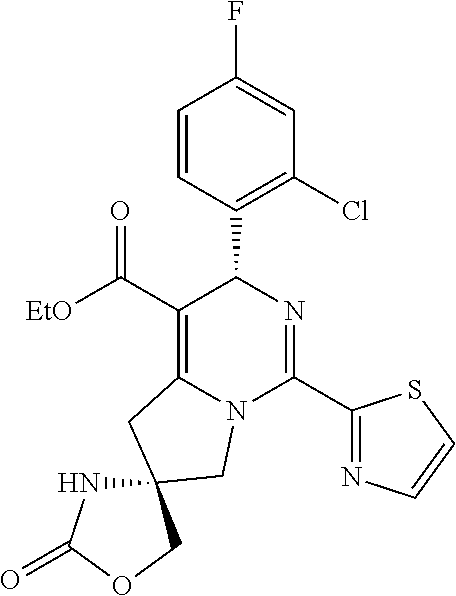
C00111
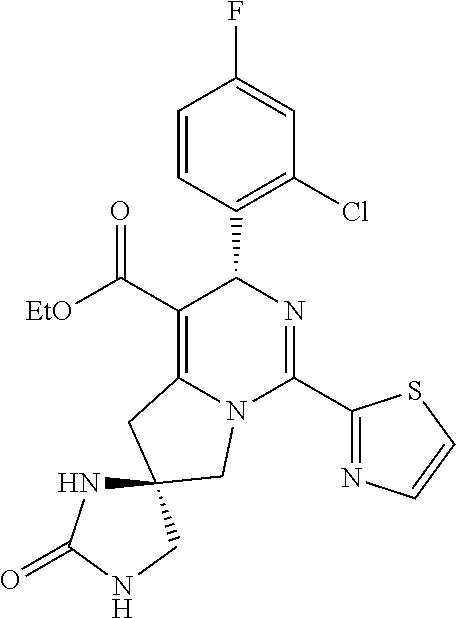
C00112
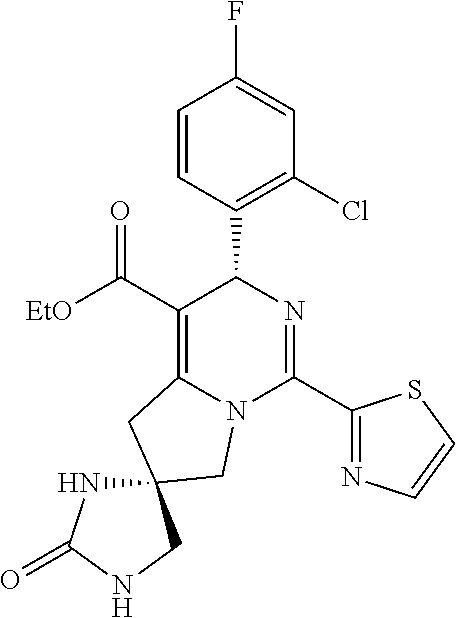
C00113
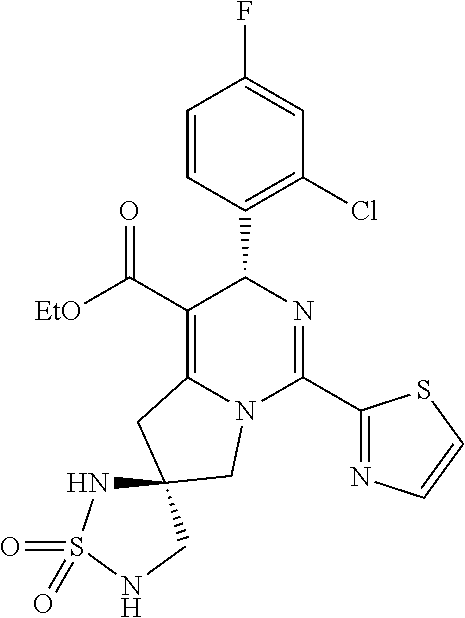
C00114
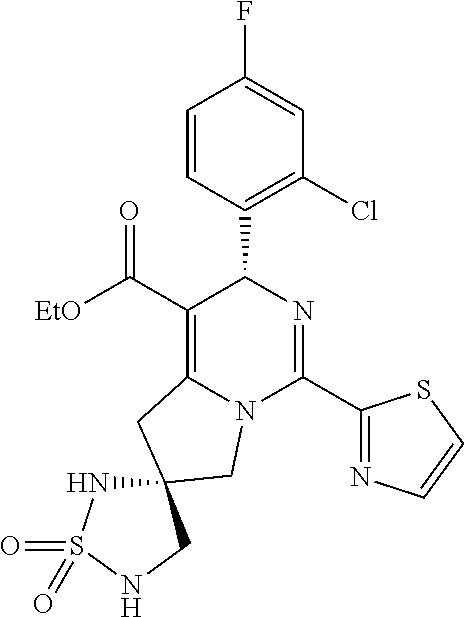
C00115

C00116

C00117

C00118
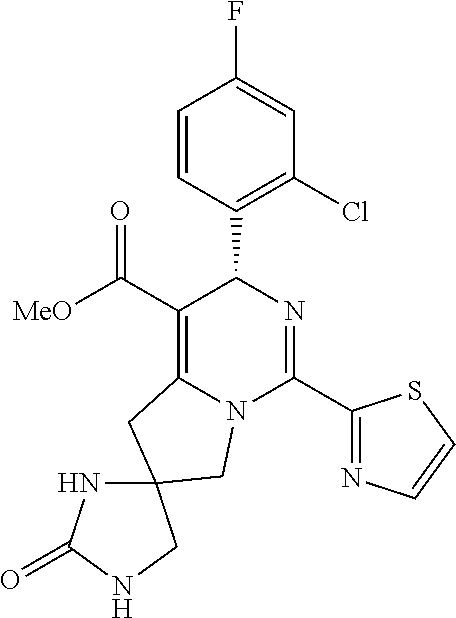
C00119
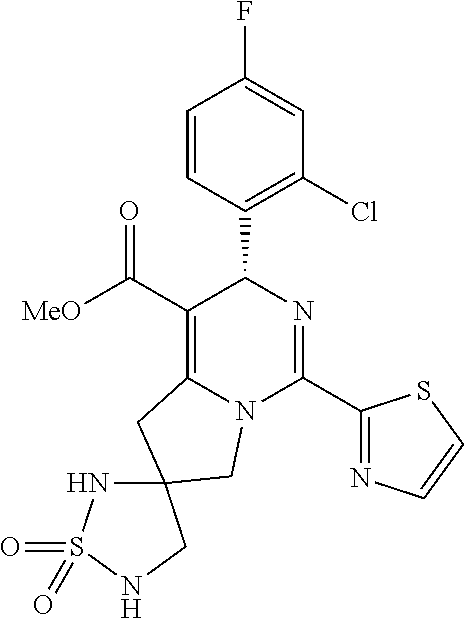
C00120
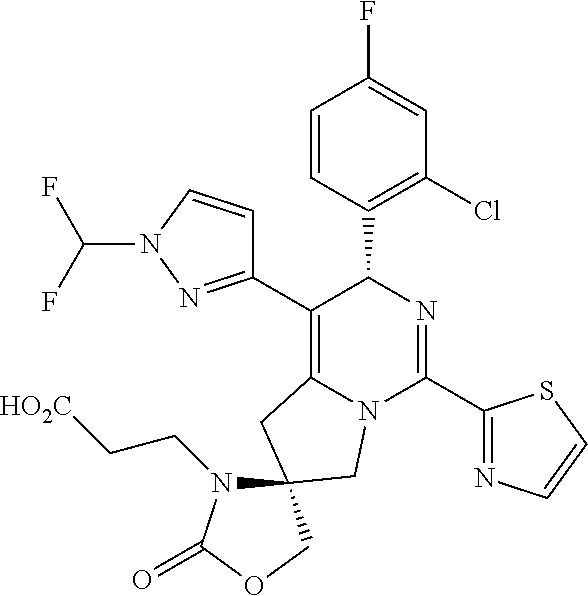
C00121
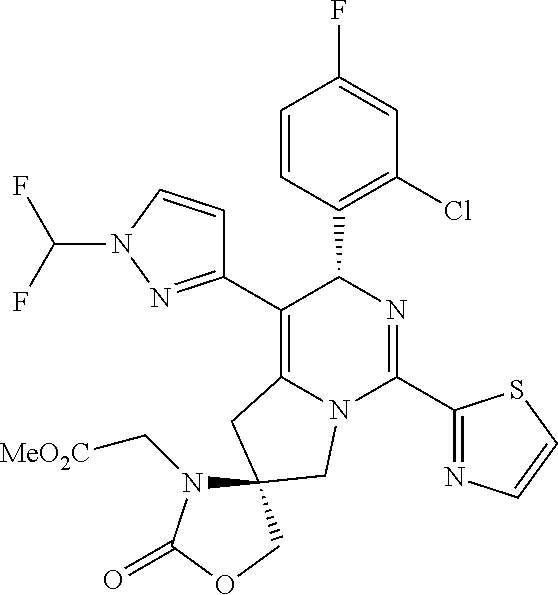
C00122

C00123
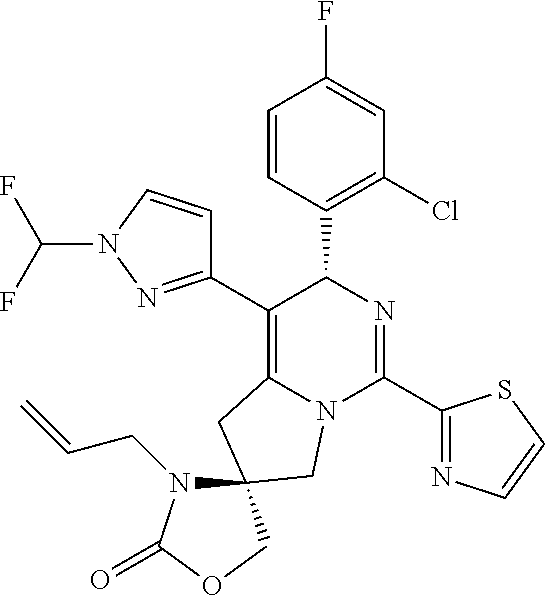
C00124
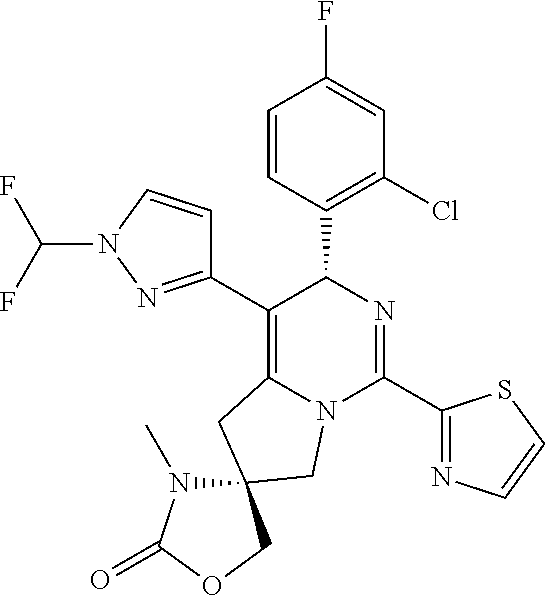
C00125
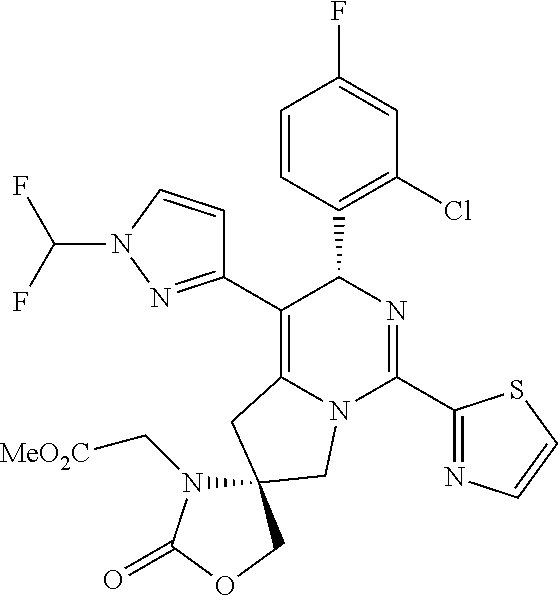
C00126
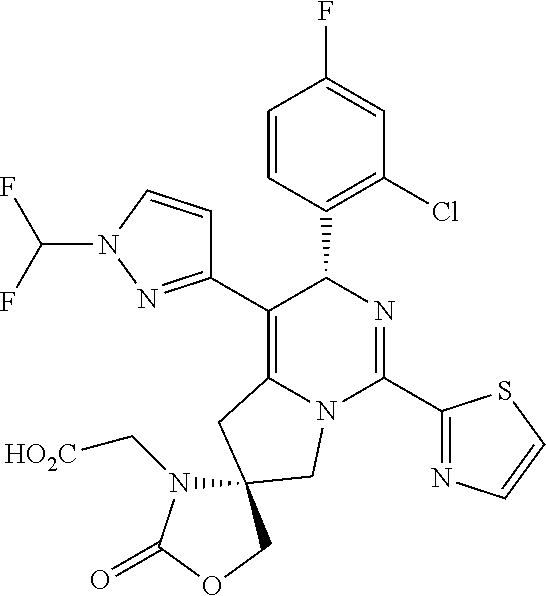
C00127
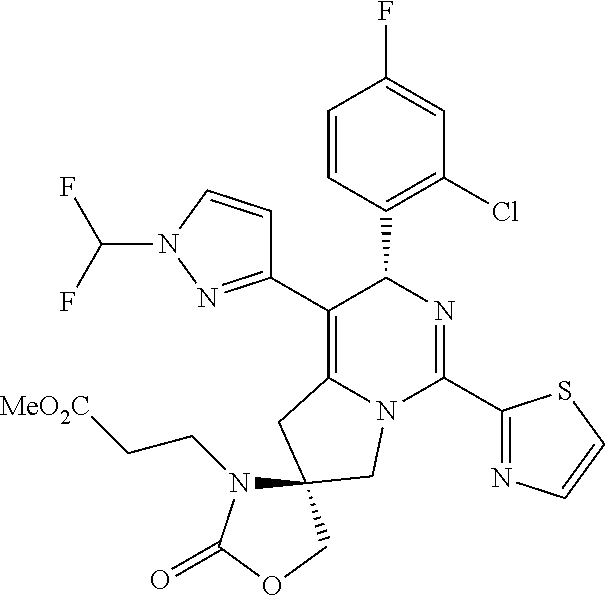
C00128
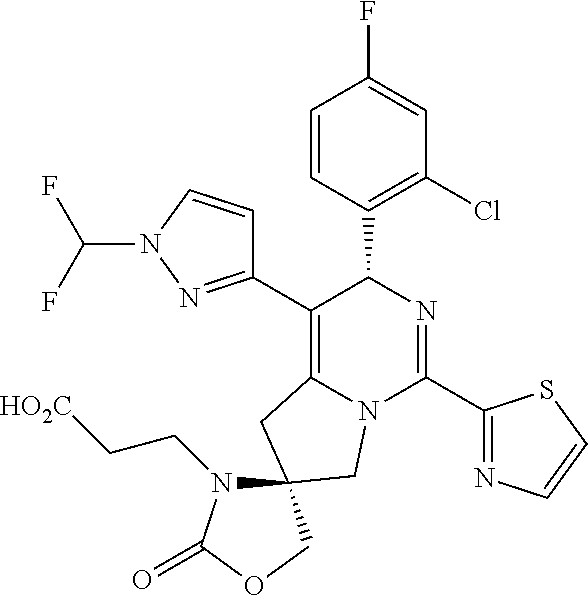
C00129
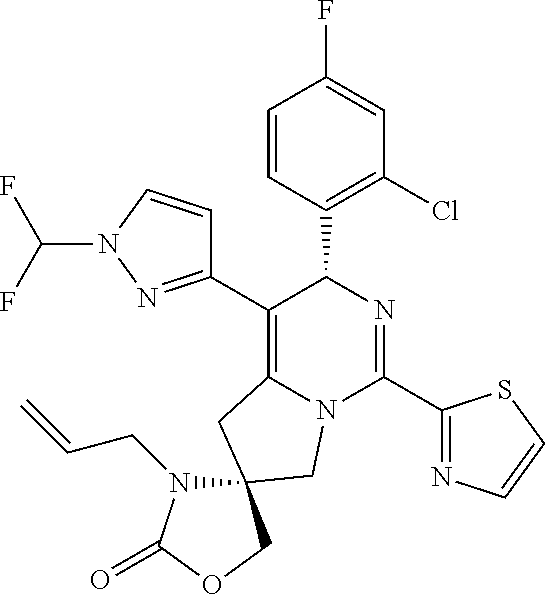
C00130
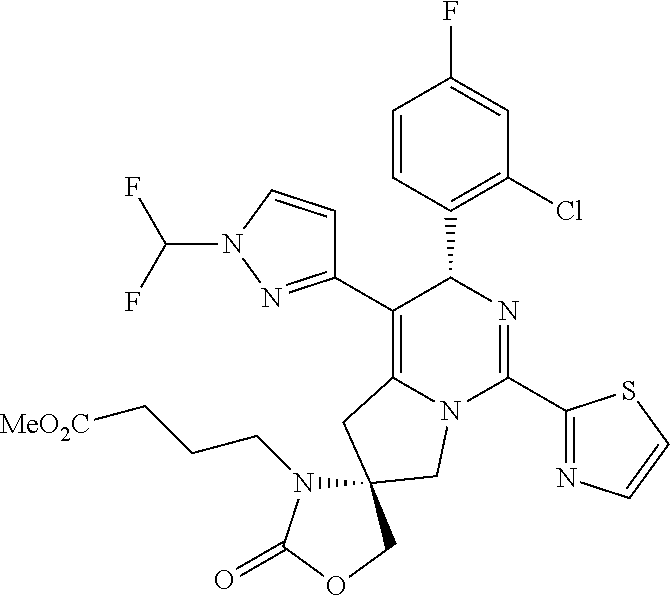
C00131
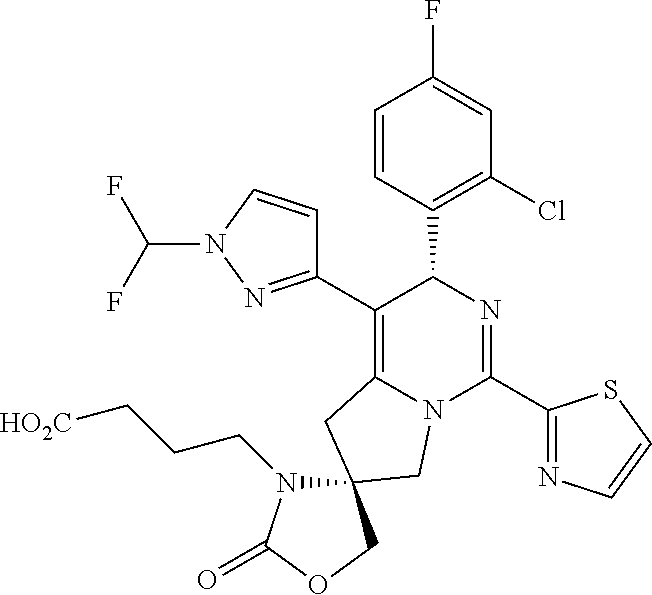
C00132

C00133
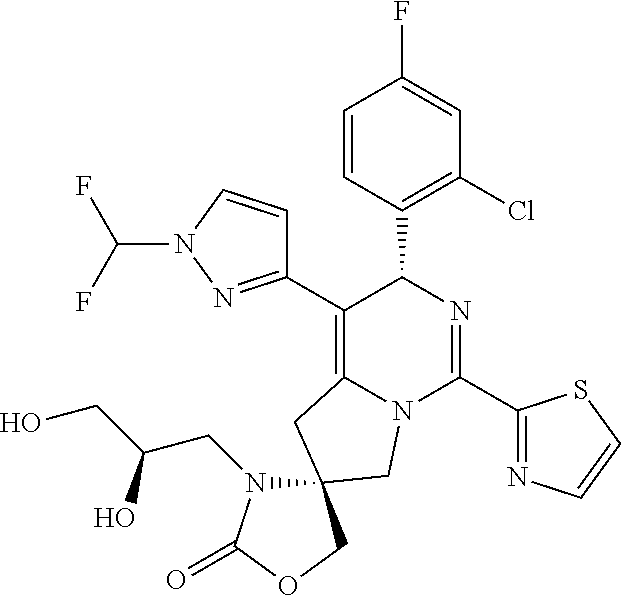
C00134
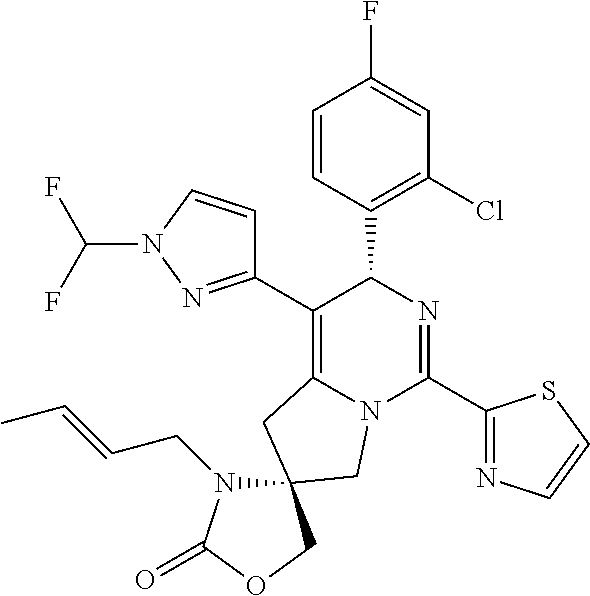
C00135
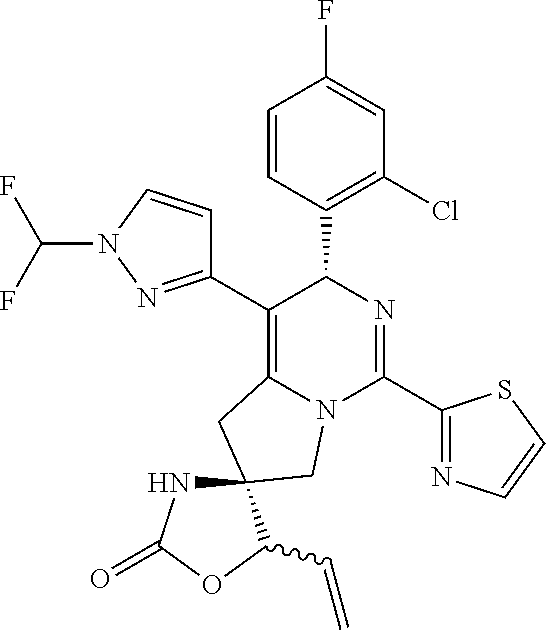
C00136

C00137

C00138
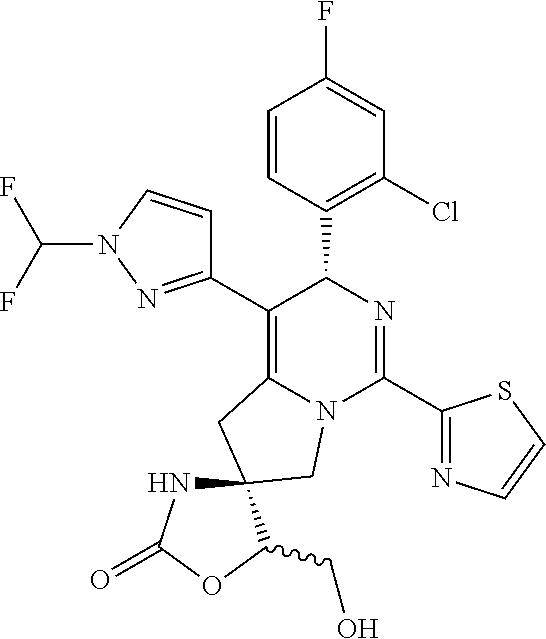
C00139
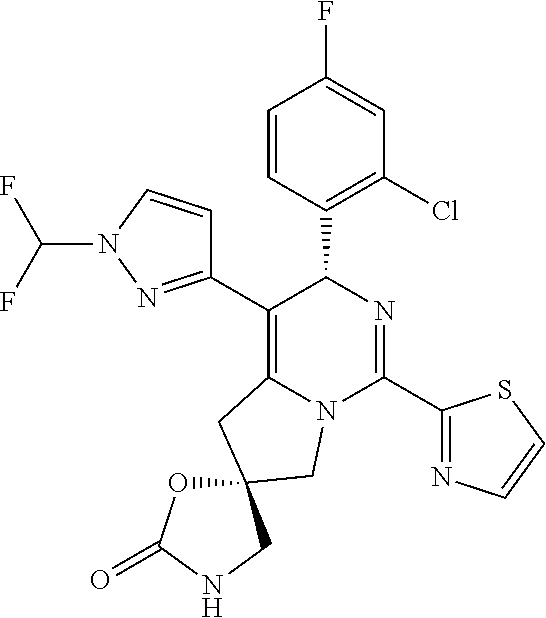
C00140
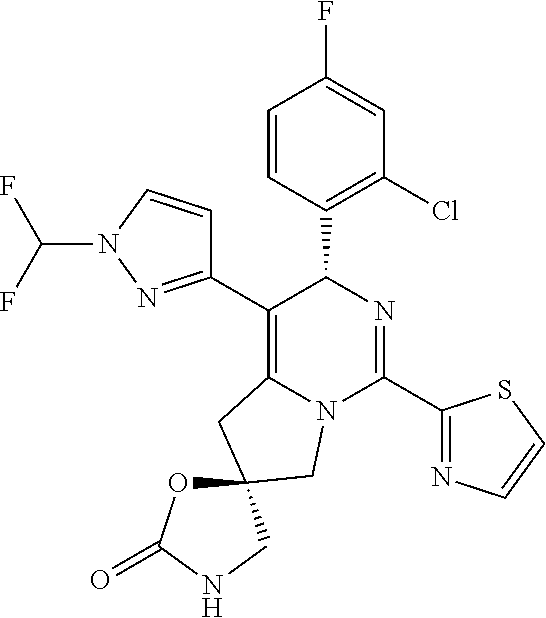
C00141

C00142
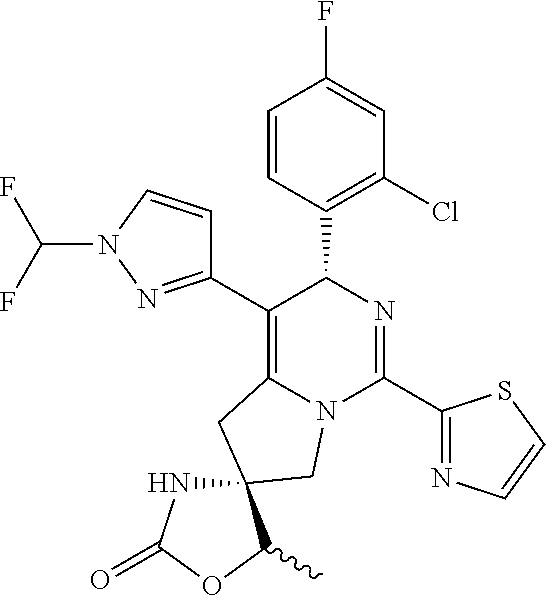
C00143
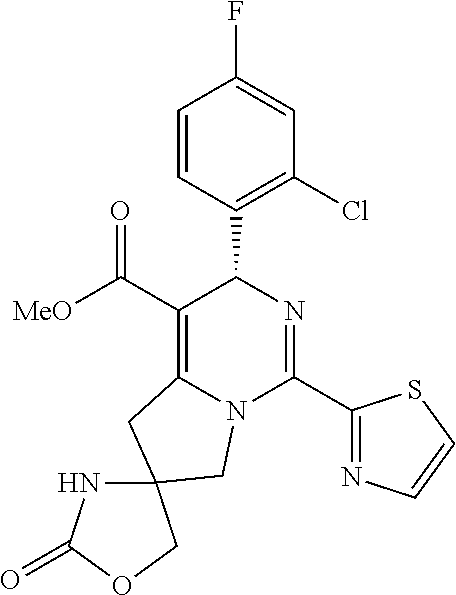
C00144
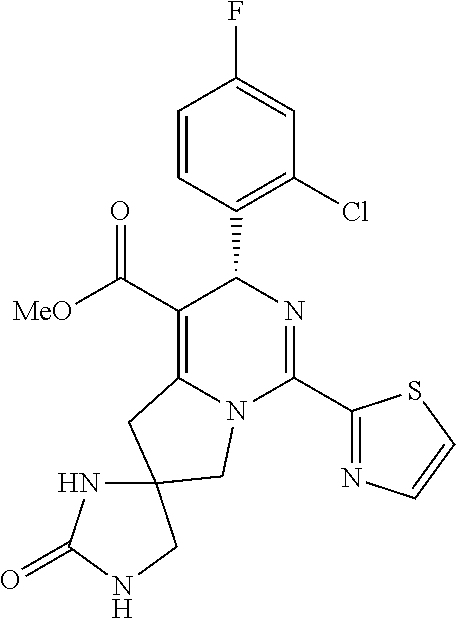
C00145

C00146

XML
uspto.report is an independent third-party trademark research tool that is not affiliated, endorsed, or sponsored by the United States Patent and Trademark Office (USPTO) or any other governmental organization. The information provided by uspto.report is based on publicly available data at the time of writing and is intended for informational purposes only.
While we strive to provide accurate and up-to-date information, we do not guarantee the accuracy, completeness, reliability, or suitability of the information displayed on this site. The use of this site is at your own risk. Any reliance you place on such information is therefore strictly at your own risk.
All official trademark data, including owner information, should be verified by visiting the official USPTO website at www.uspto.gov. This site is not intended to replace professional legal advice and should not be used as a substitute for consulting with a legal professional who is knowledgeable about trademark law.